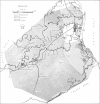Abstract
The geographical location and physical features of the island of Leyte in the Philippines, where bilharziasis is endemic and where the studies reported here were conducted, are described in the first part of this paper. An account is also given of the climate, soils, vegetation, population and rural structure, and public health of the island.
The second part opens with a brief historical review of bilharziasis japonica in the Philippines up to 1953, when a control project was started. The objectives of this project, the areas selected, the census data and sampling used, and the techniques adopted are described. There follows a discussion of the prevalence of bilharziasis and its relationship to age, sex, occupation and environment; the prevalence of other common helminthic infections is also considered. In a section on the natural history and public health significance of bilharziasis, an approach to quantitative assessment of disease and disability and a method for evaluating the economic burden of bilharziasis are suggested. The incidence of disease in children of 5-9 years is reviewed in the same section. An analysis is made of possible strain differences of S. japonicum in Leyte, and the relative role of human and other animal hosts is assessed. The last section deals with the egg-laying habits of S. japonicum.
Full text
PDF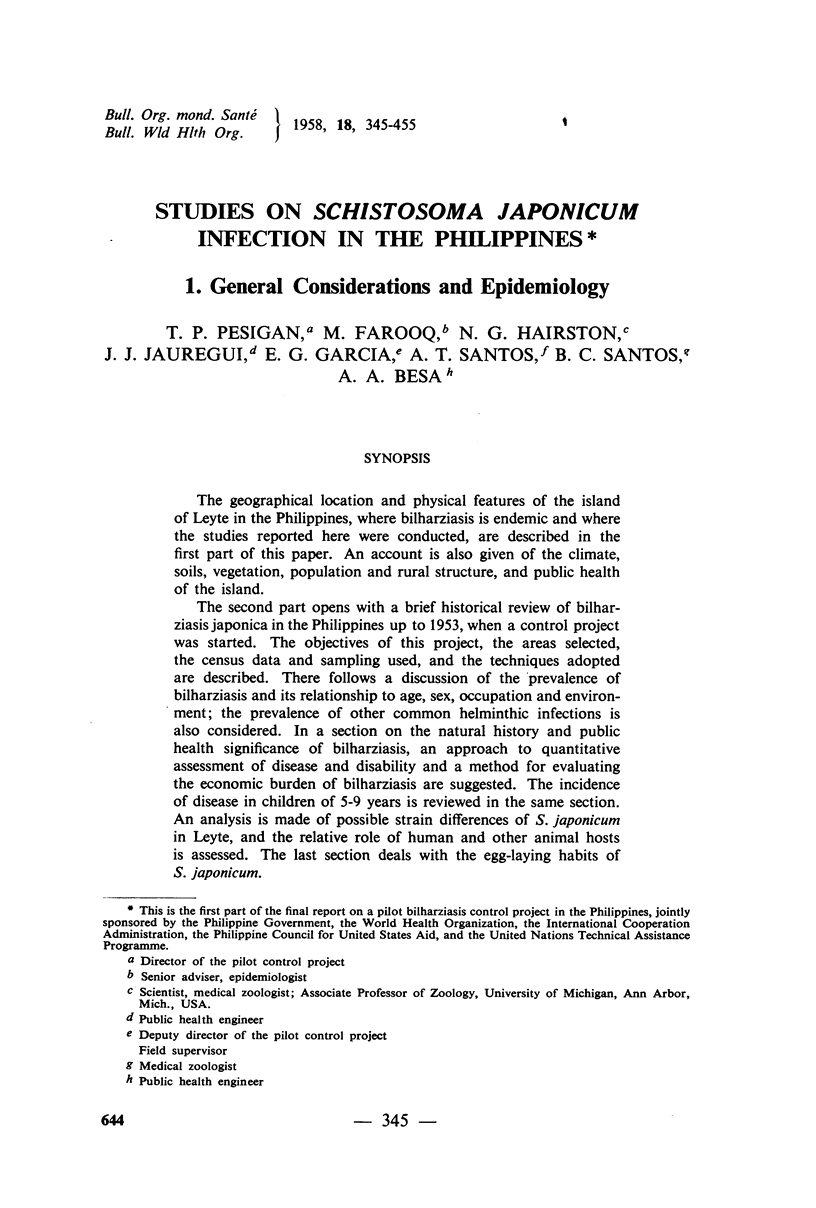
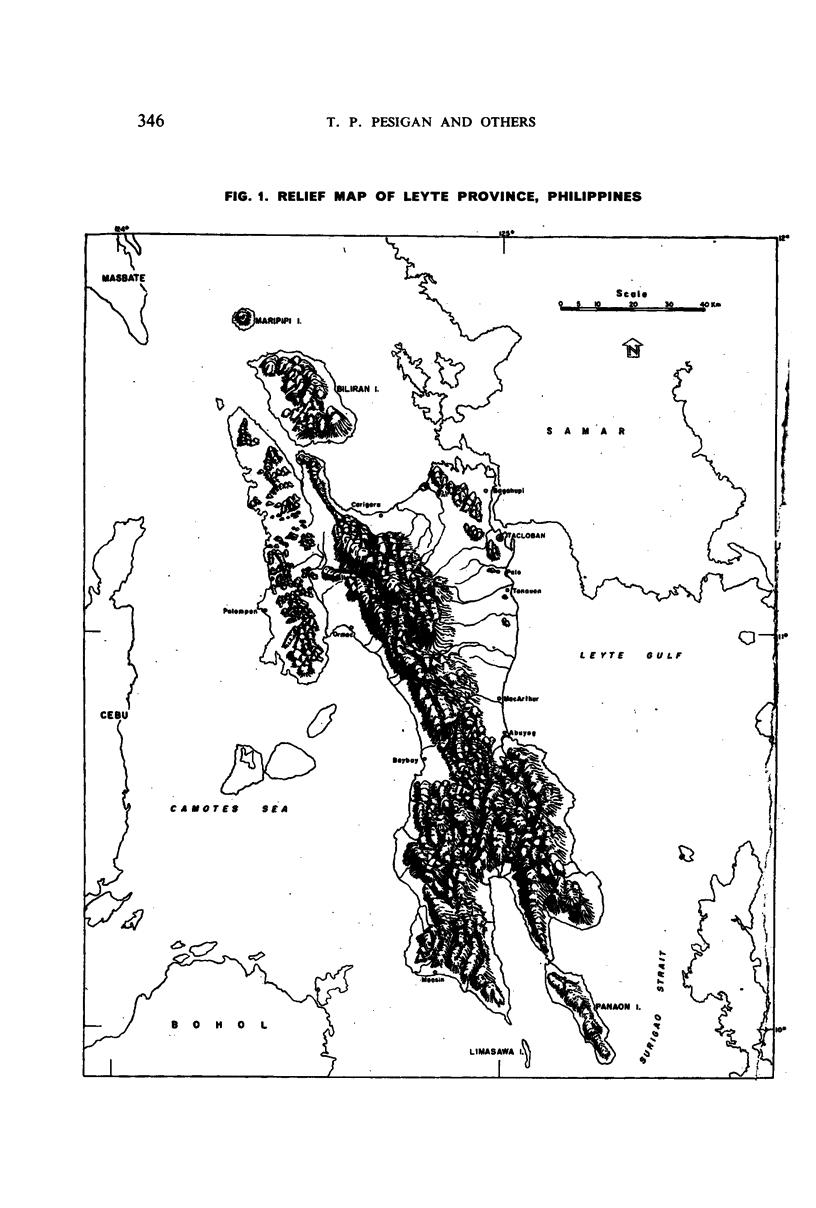
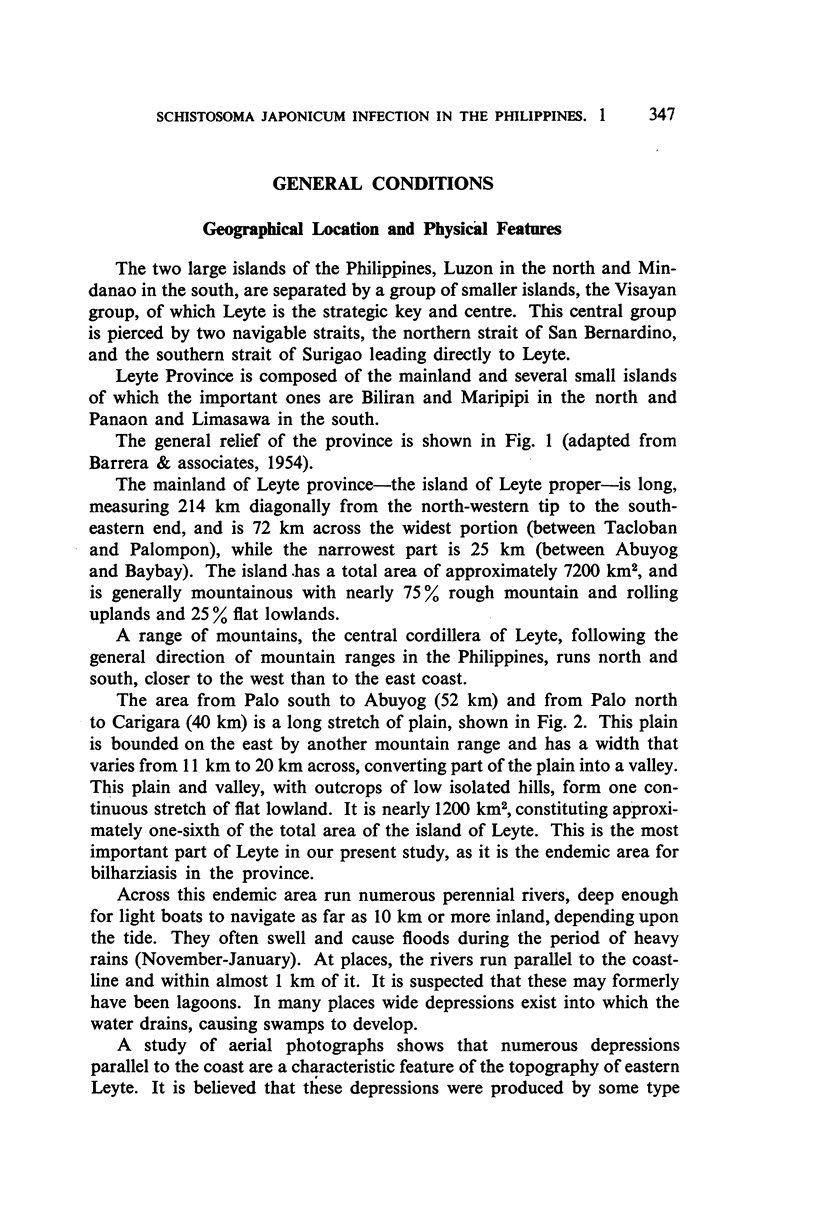
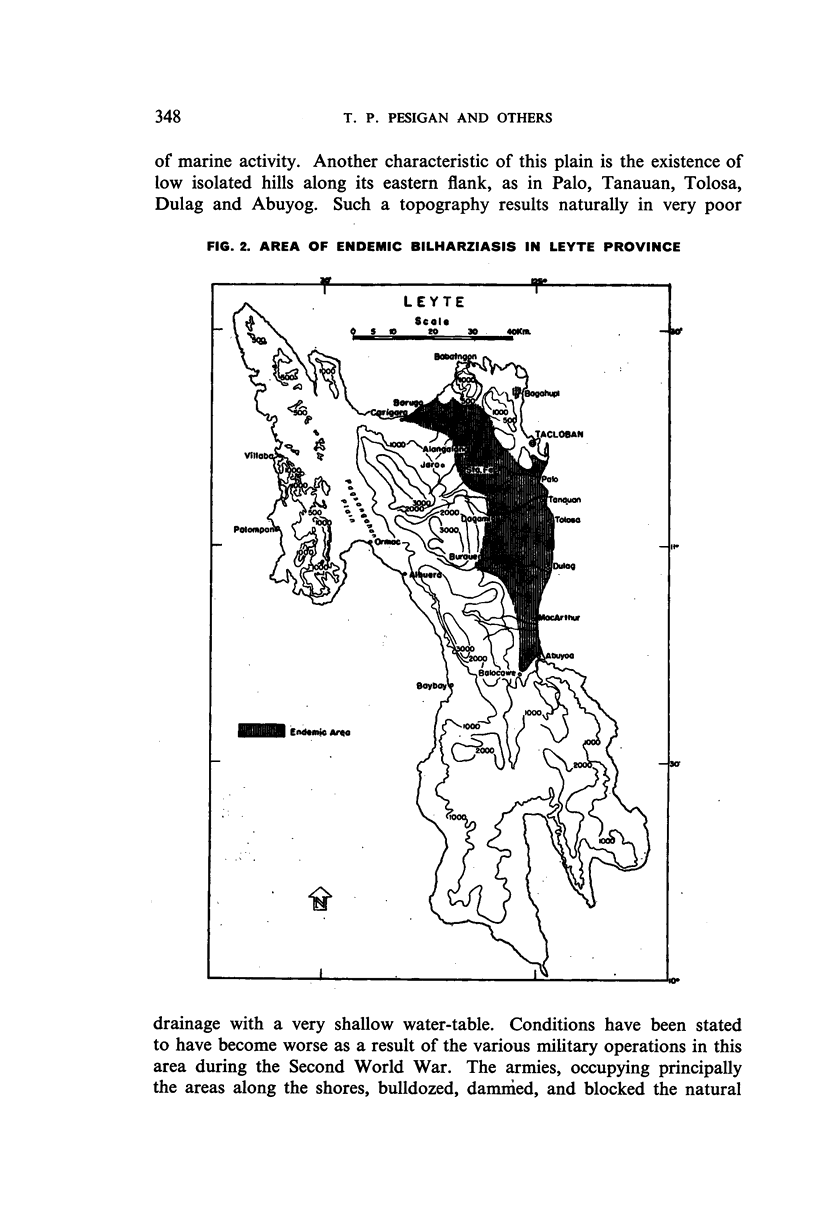
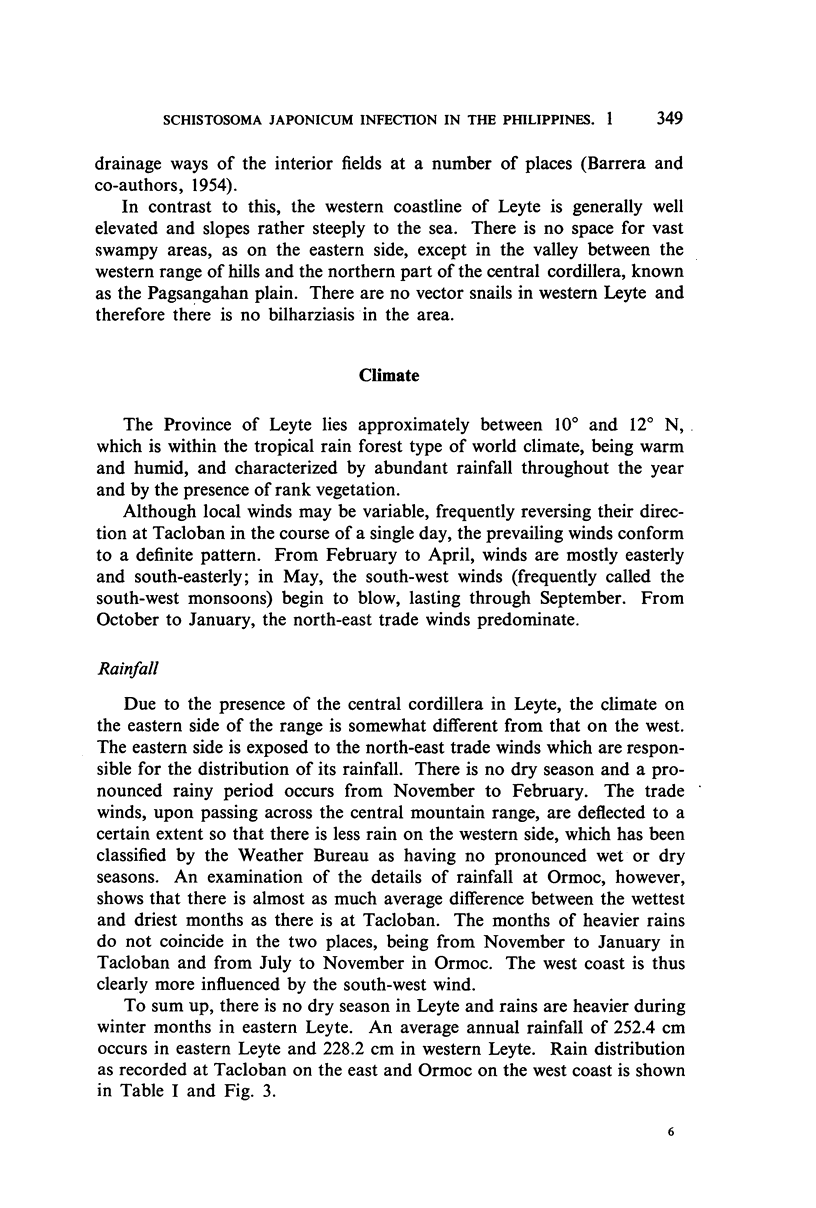
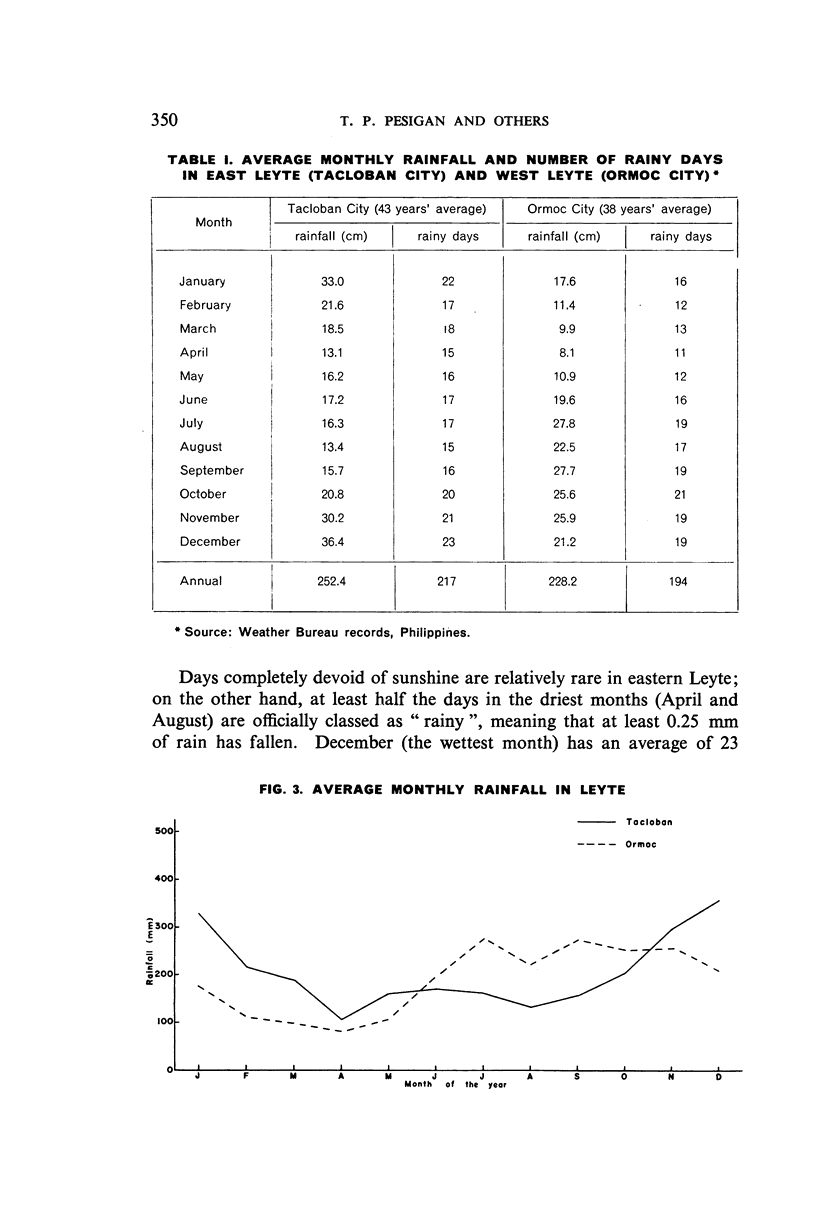
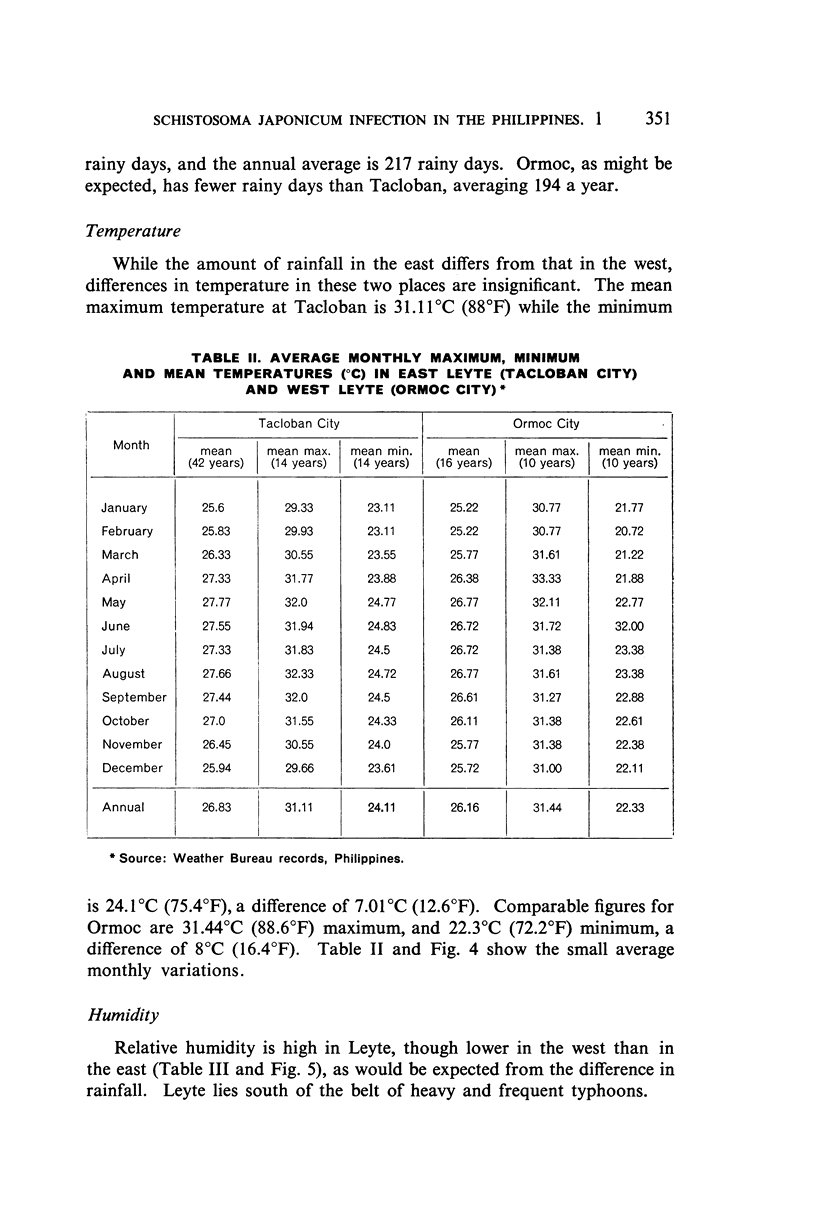
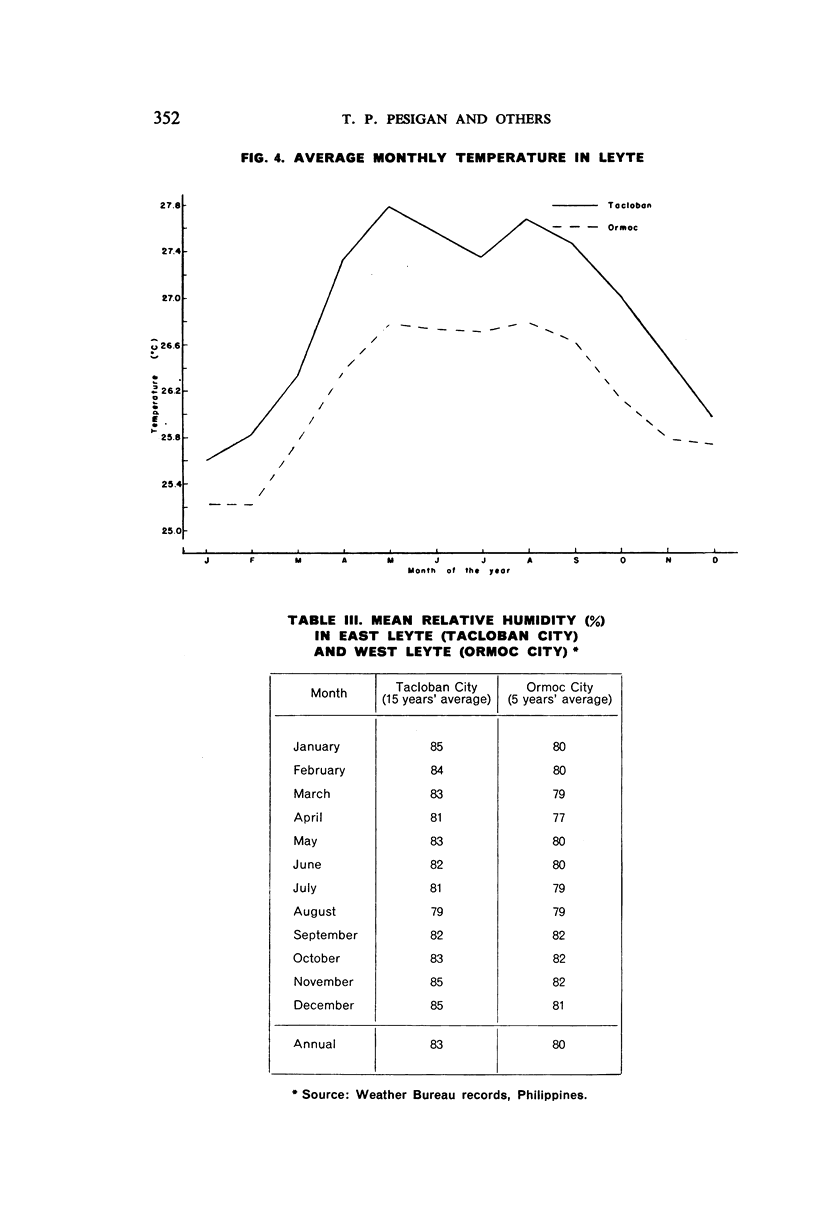
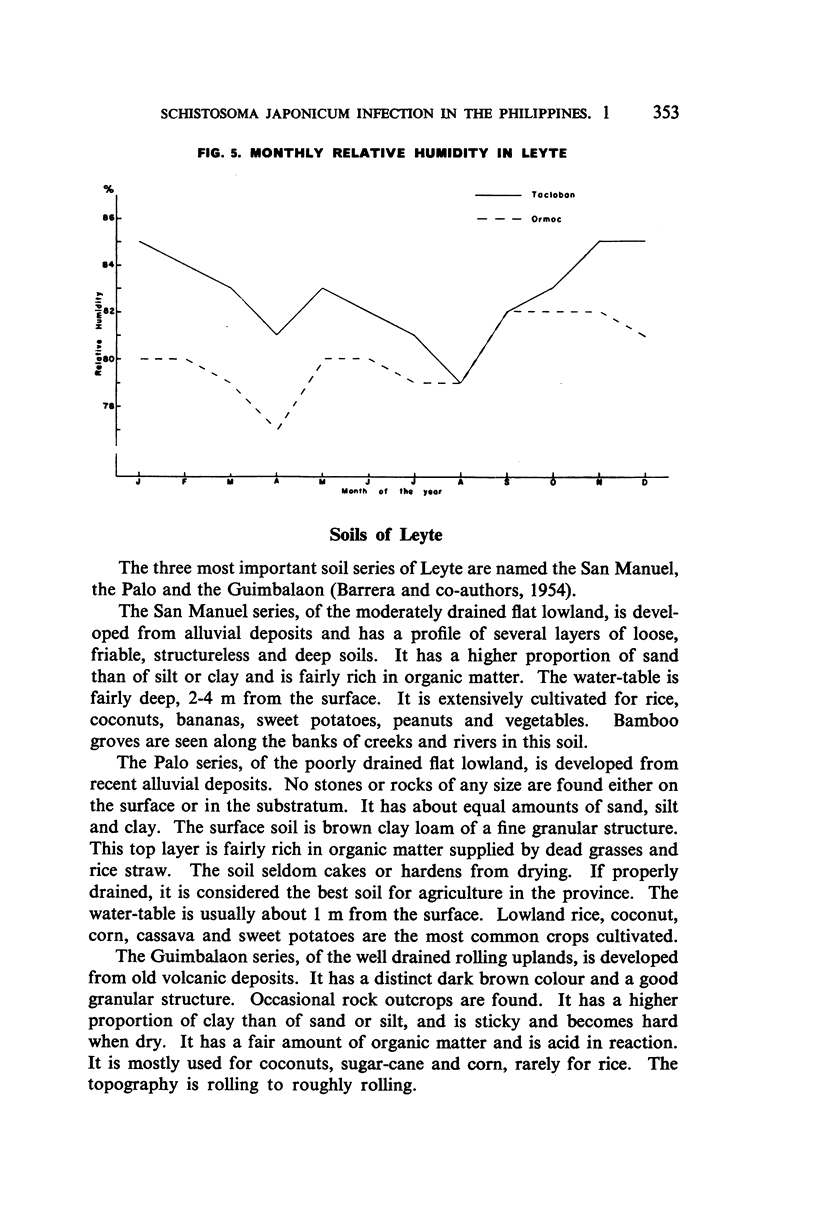
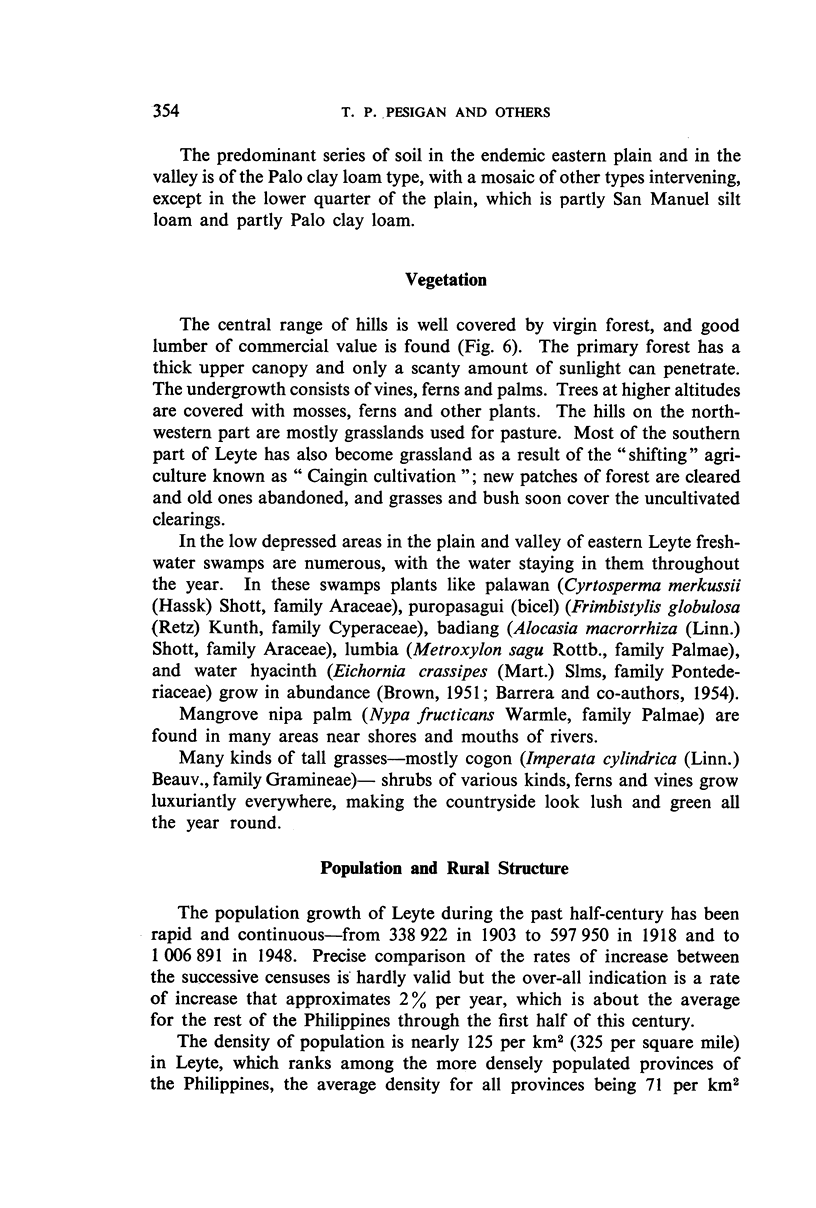
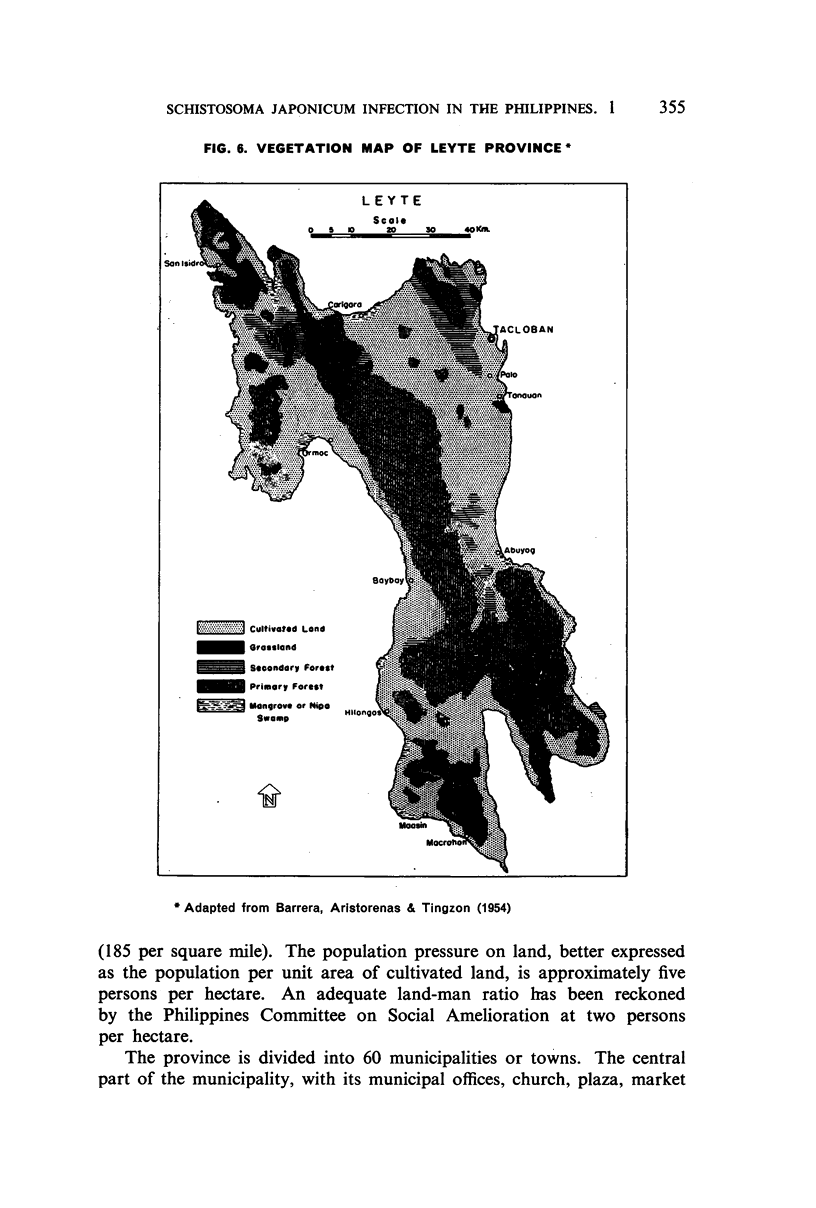
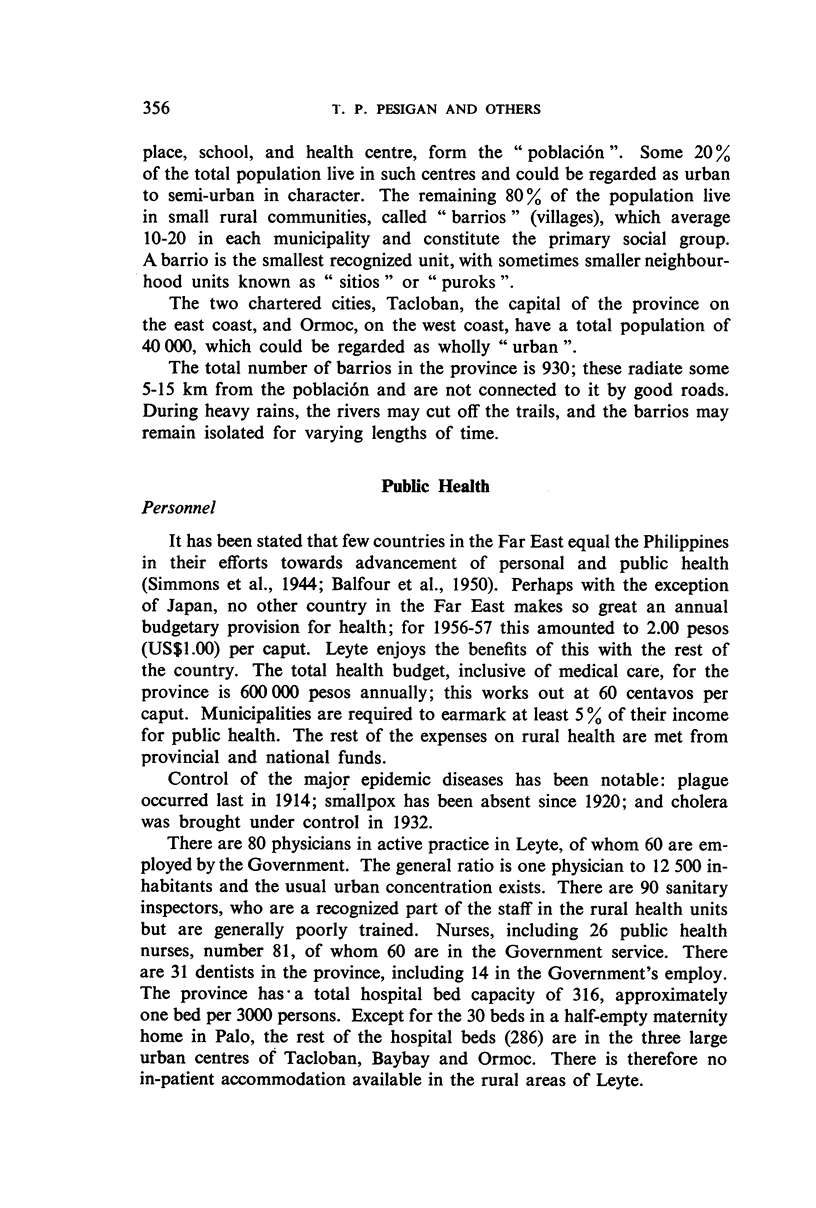
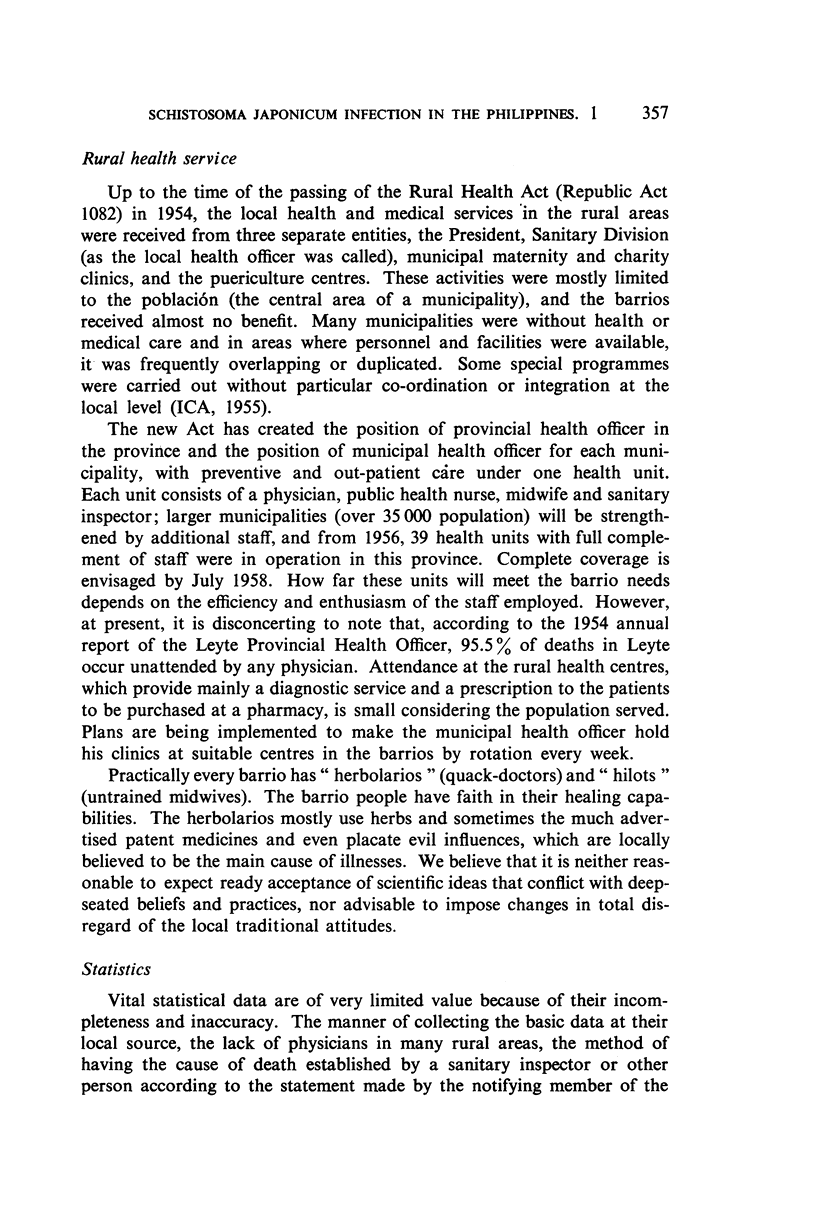

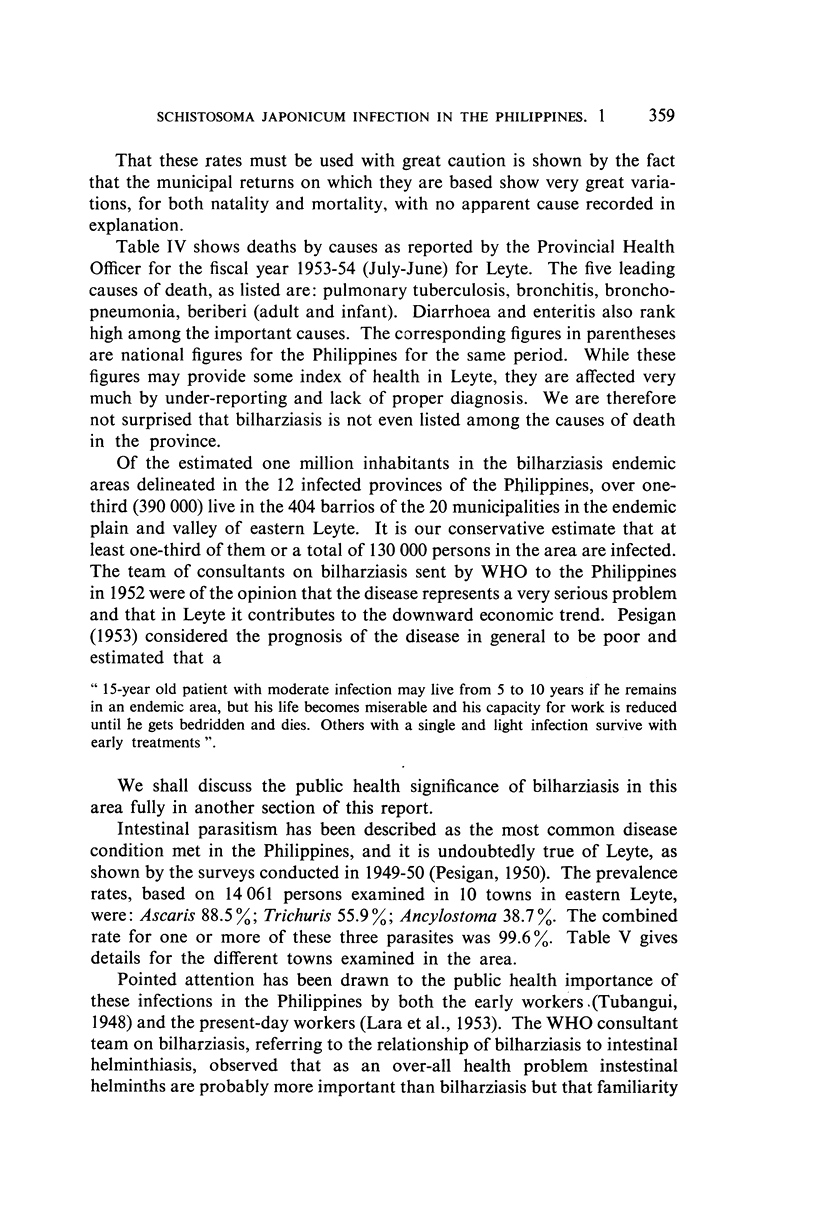
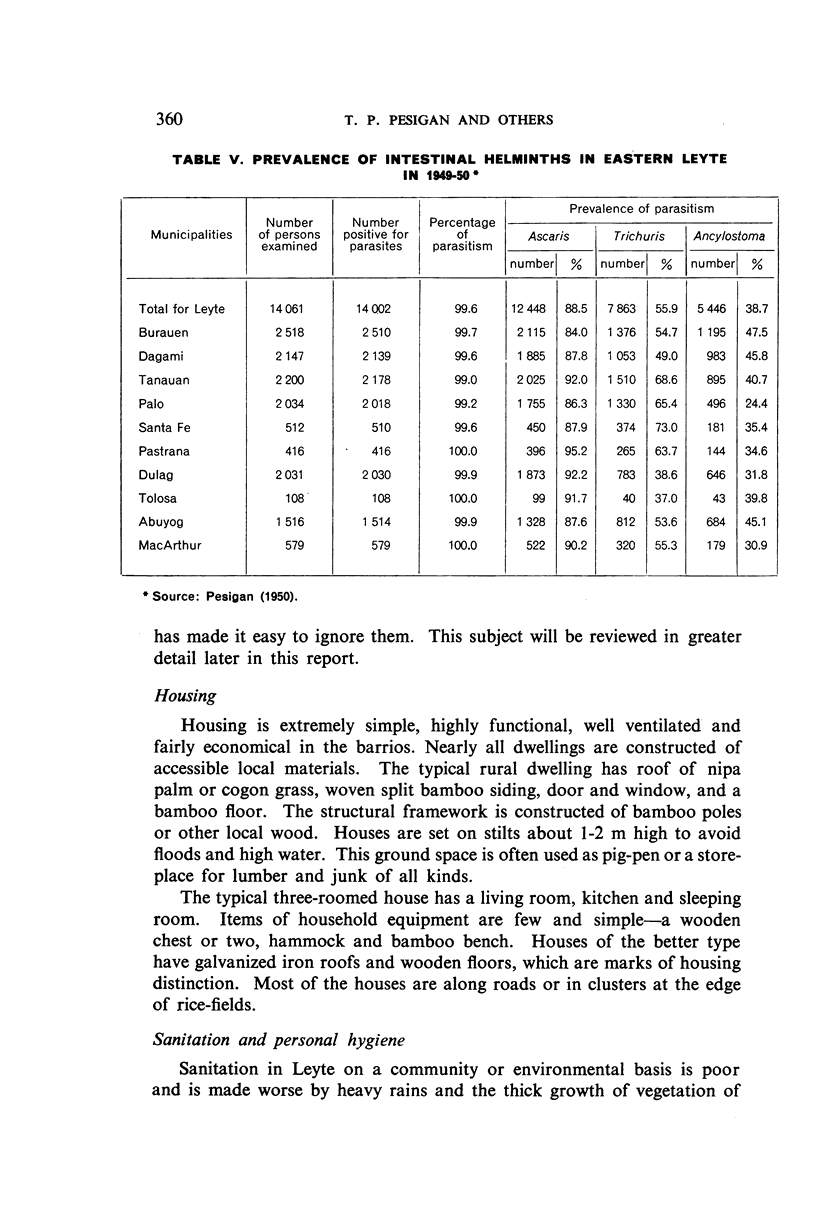
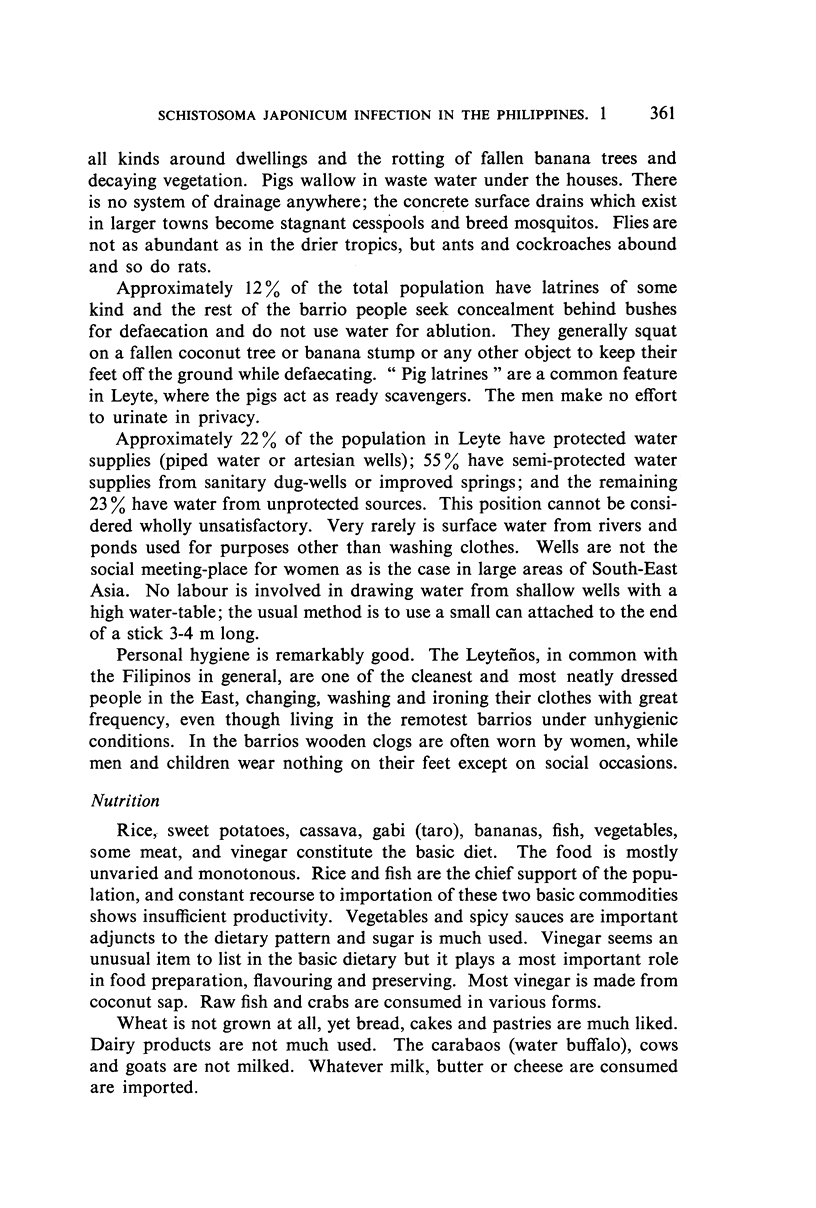
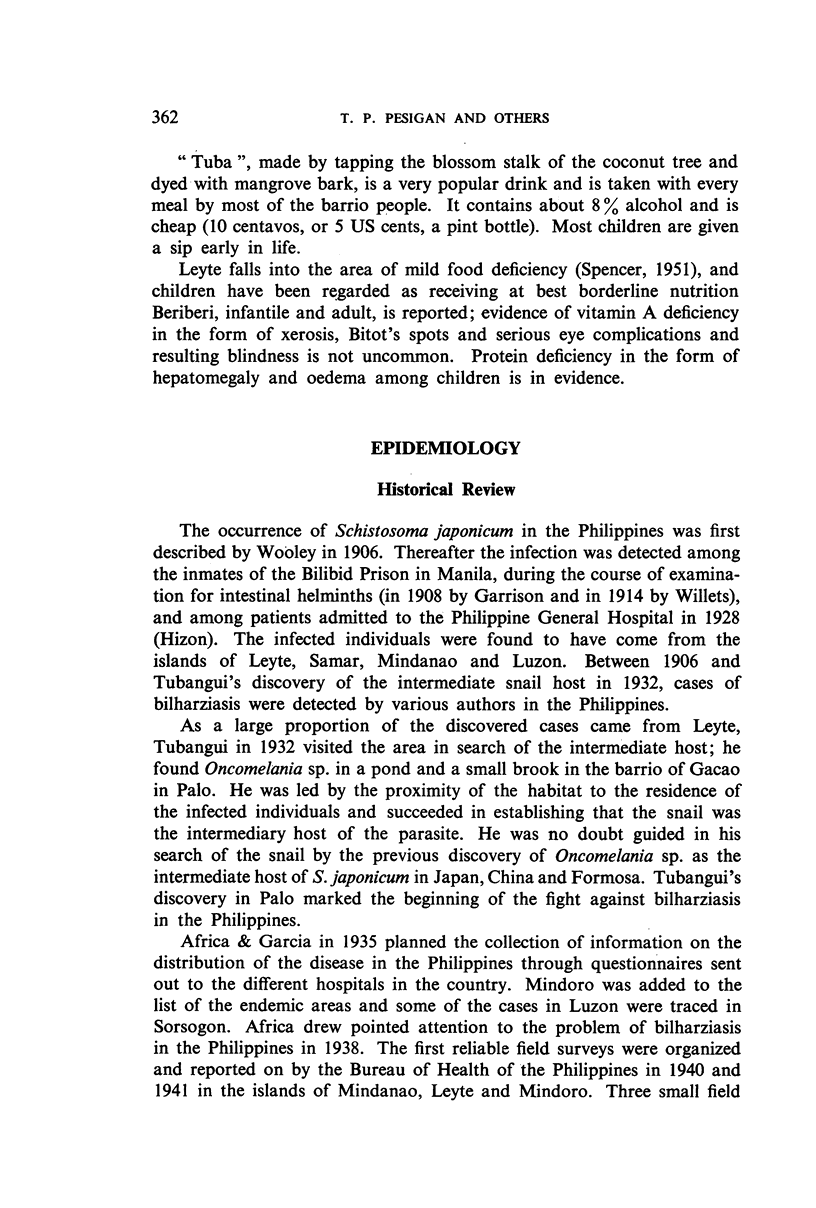
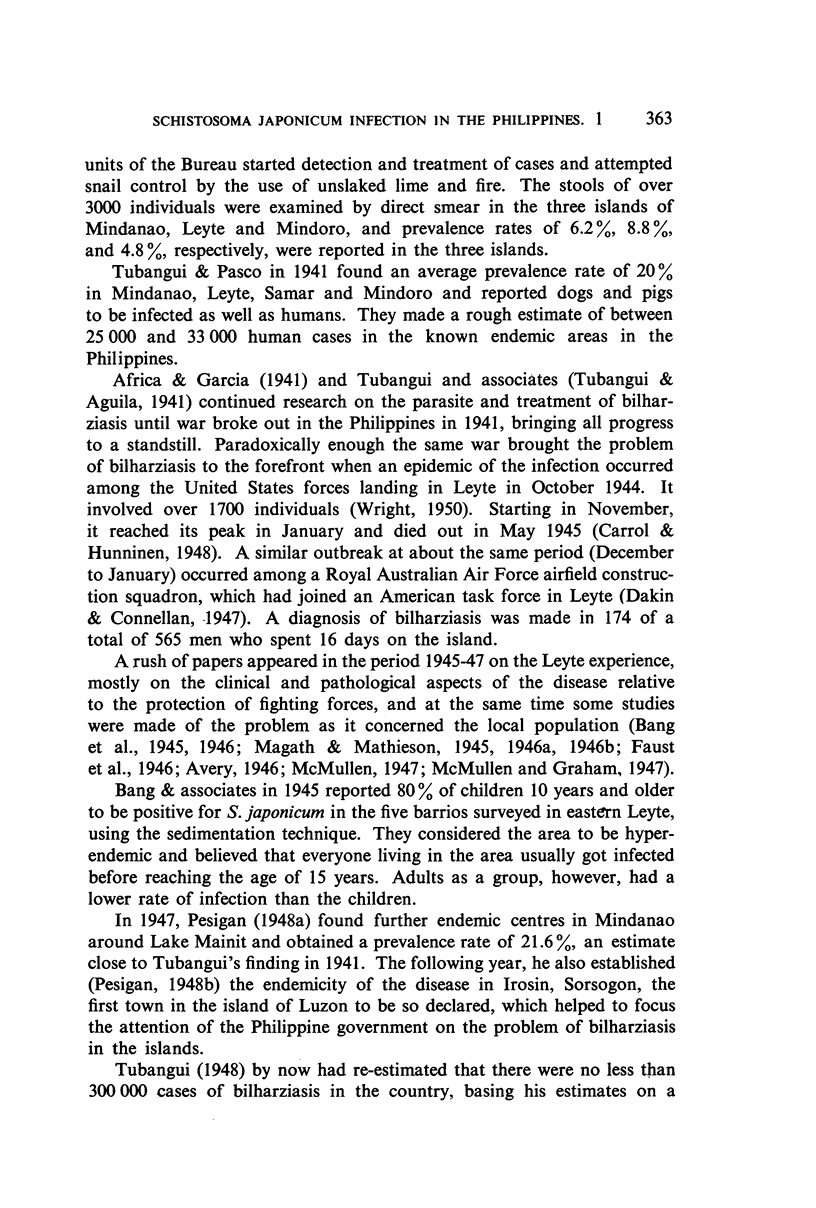

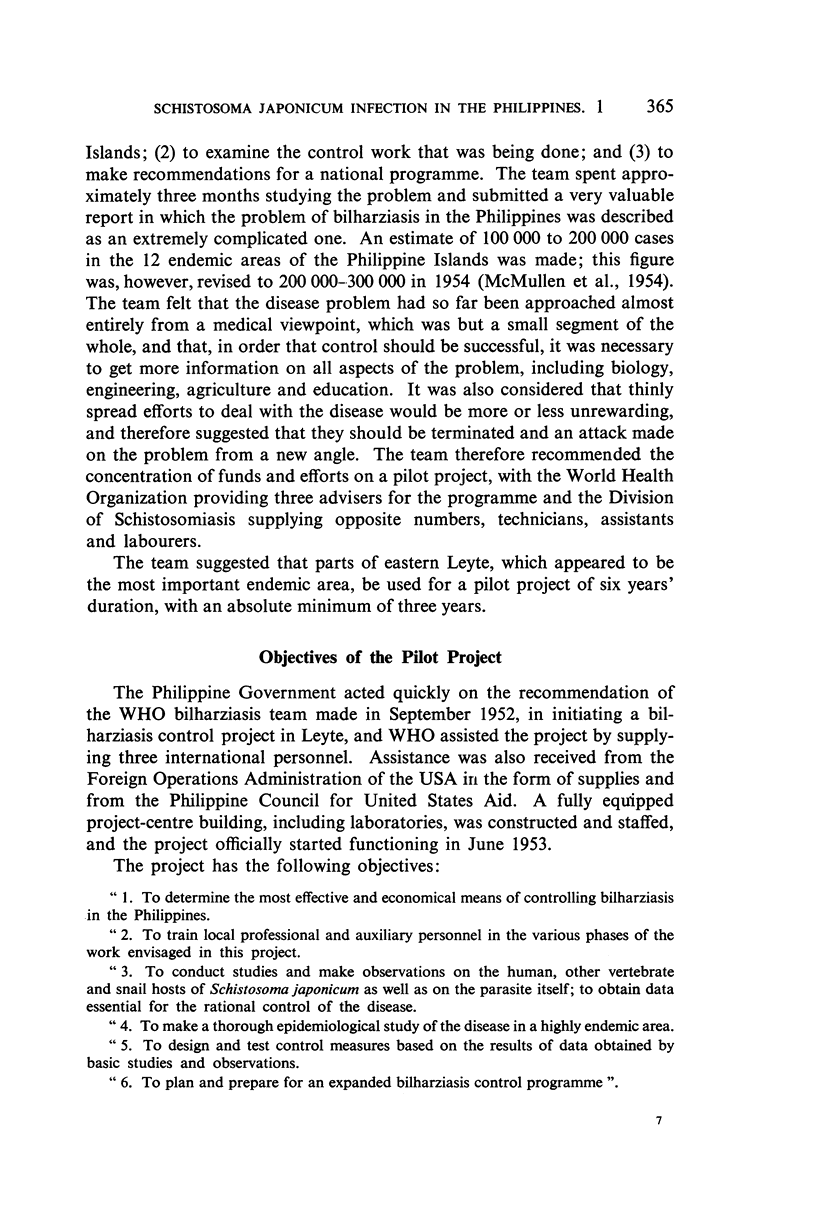

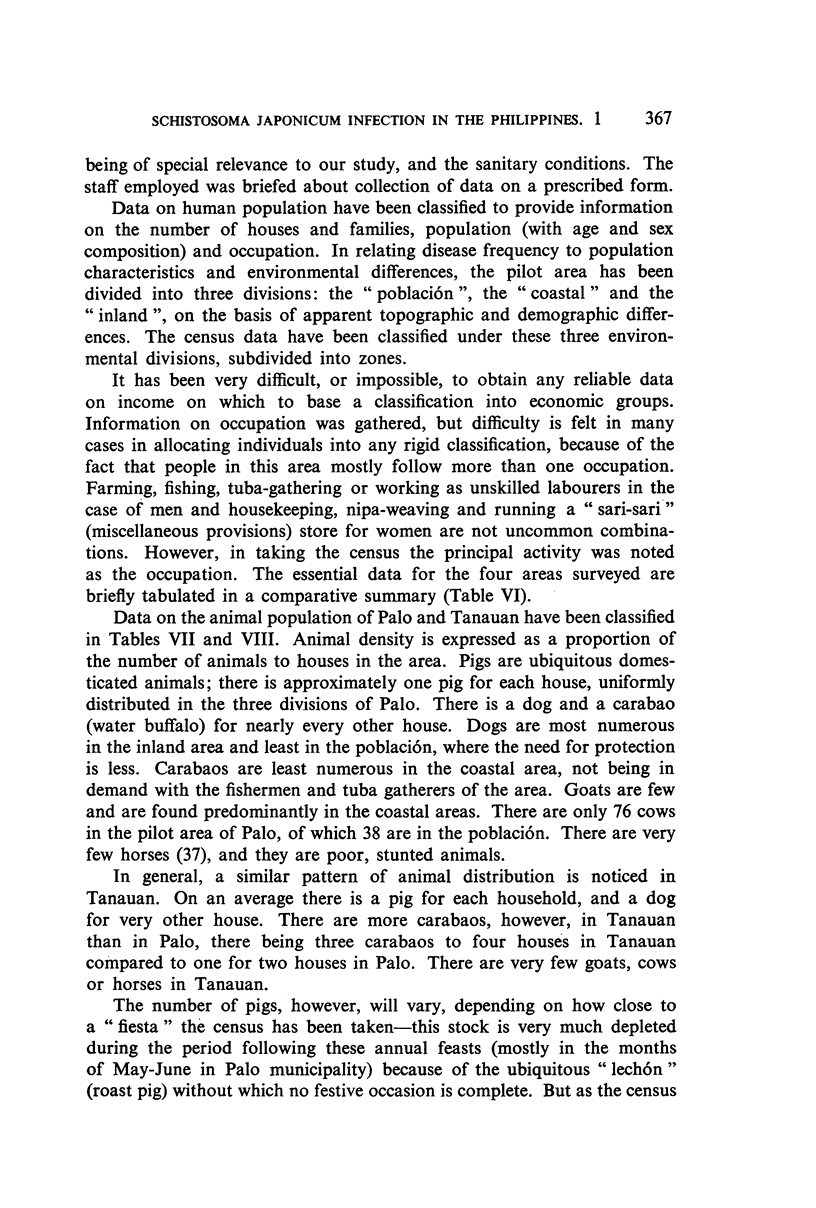
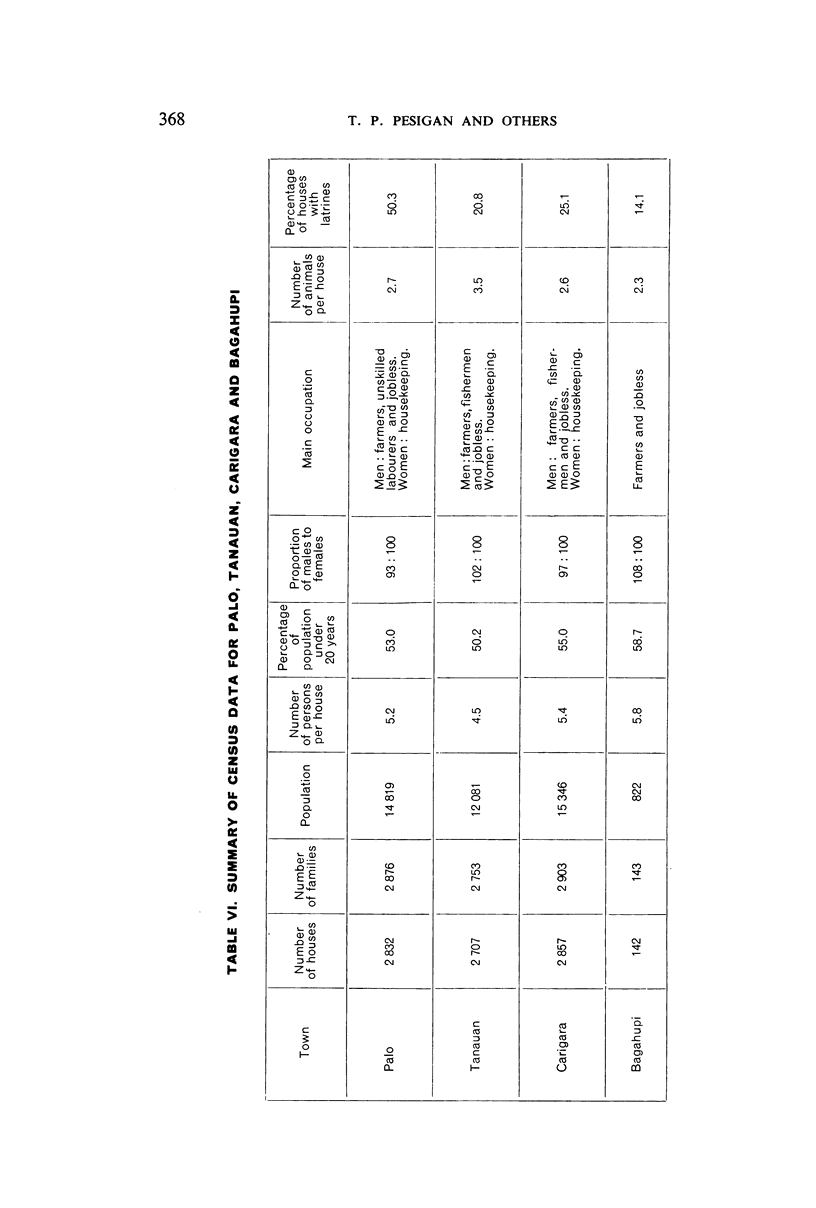
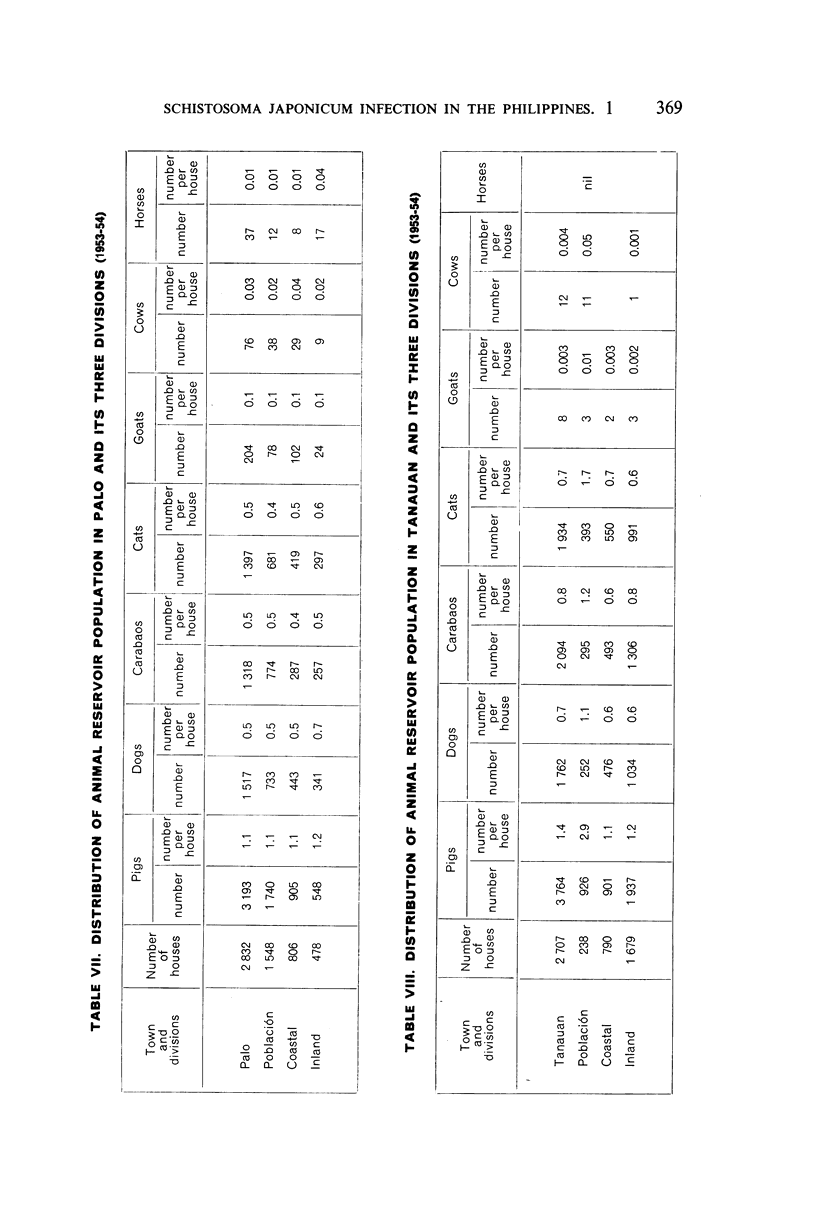
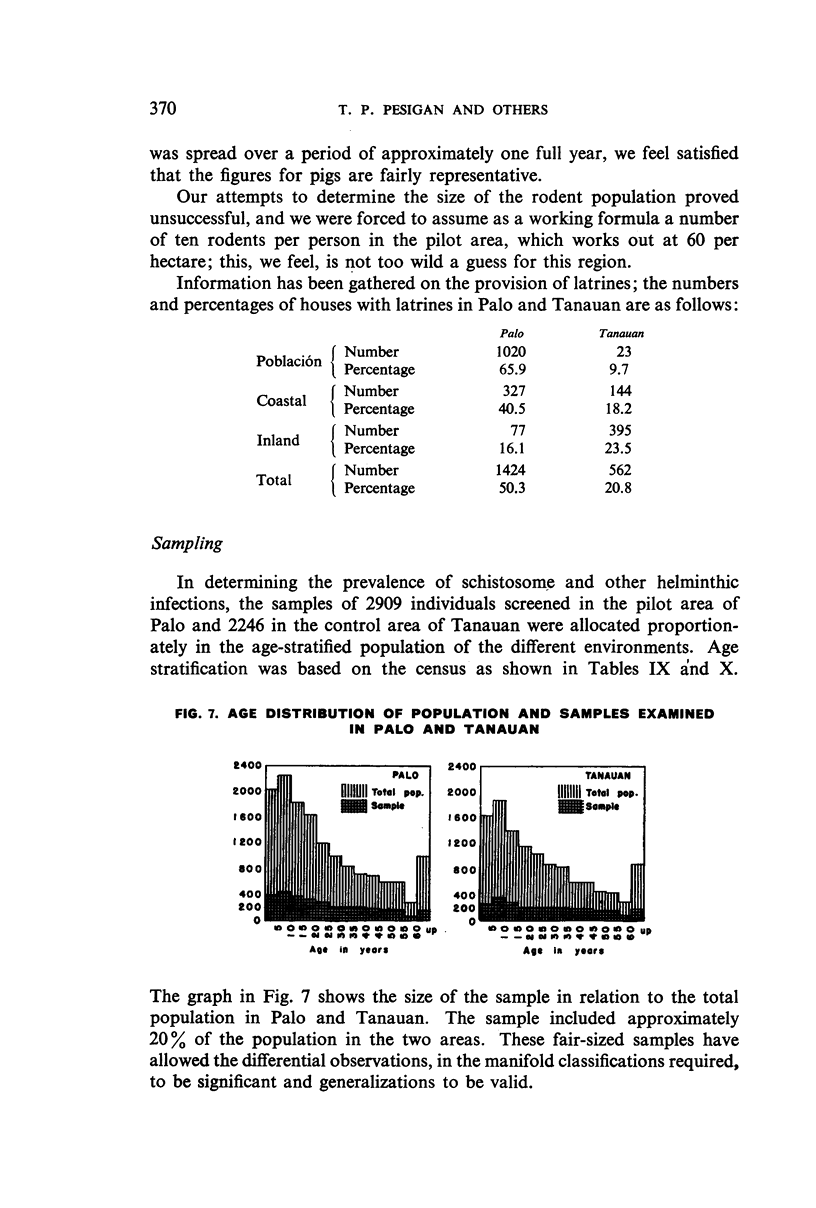

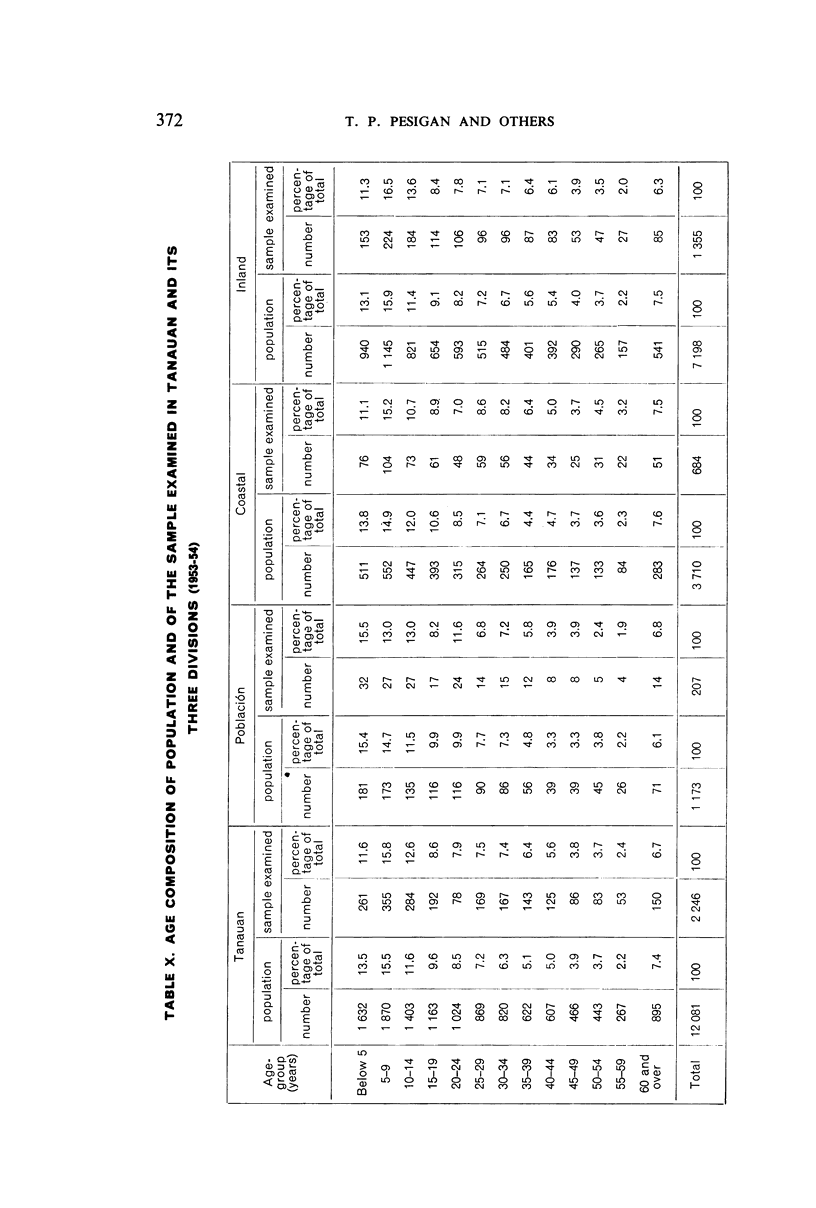

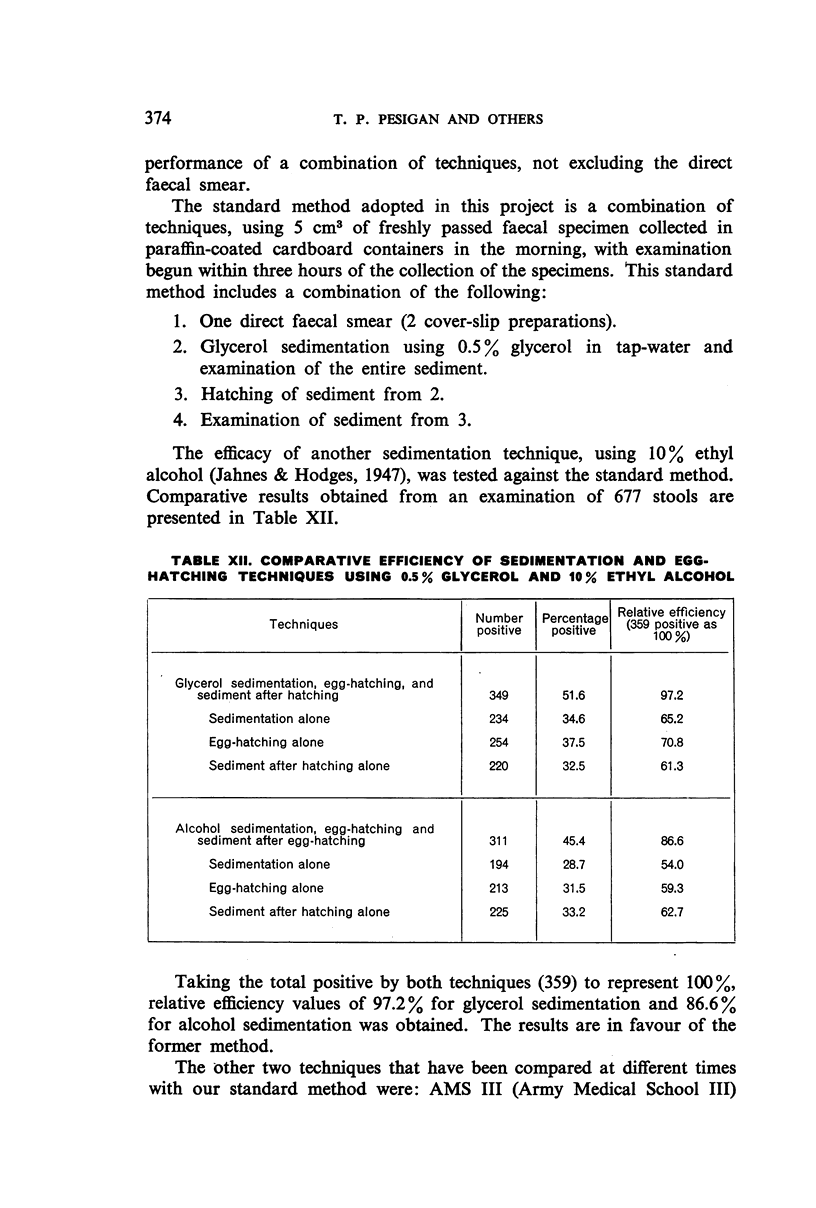

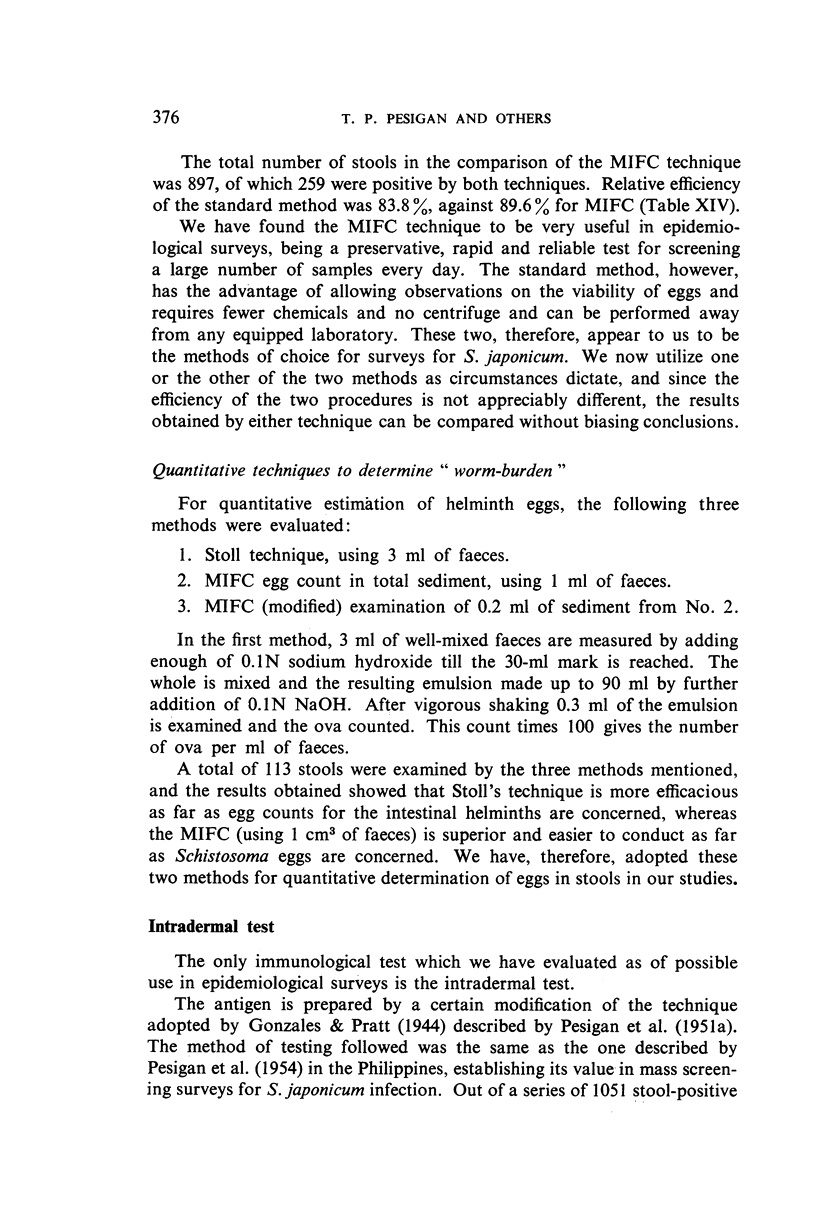
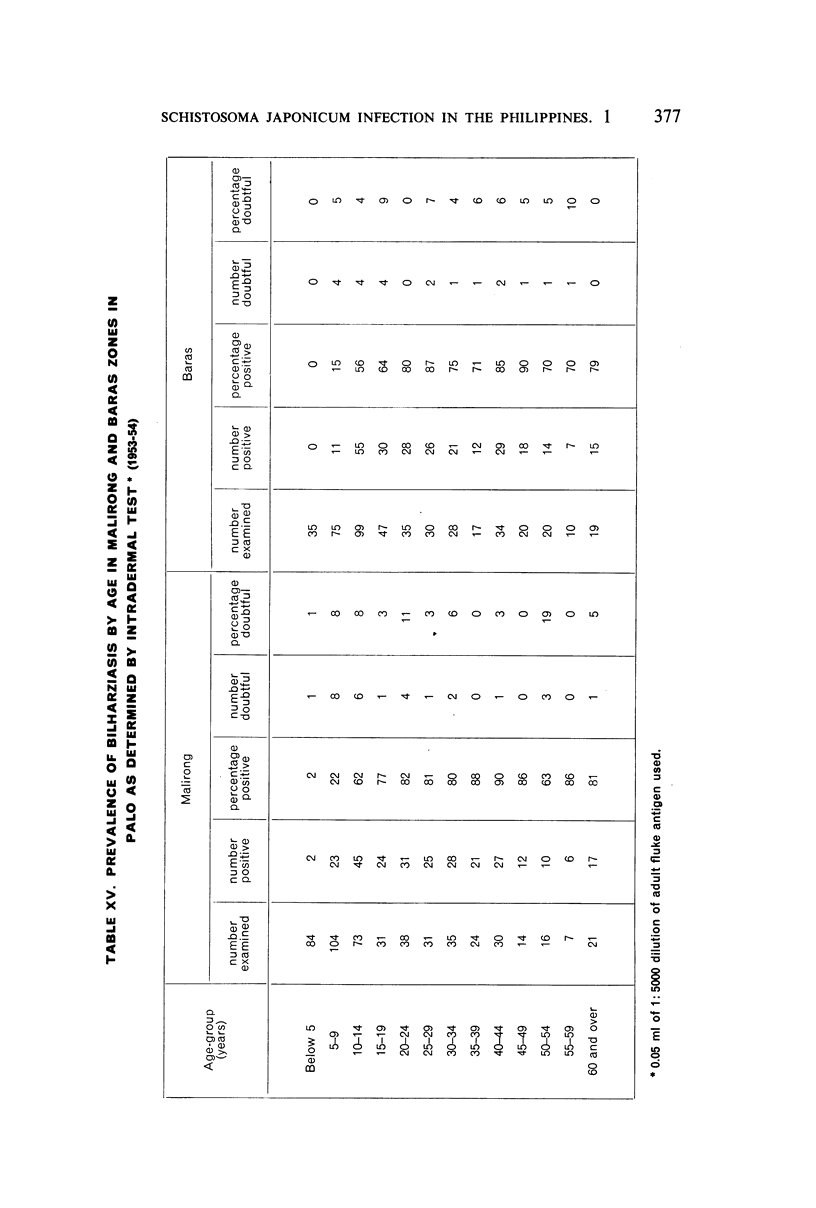
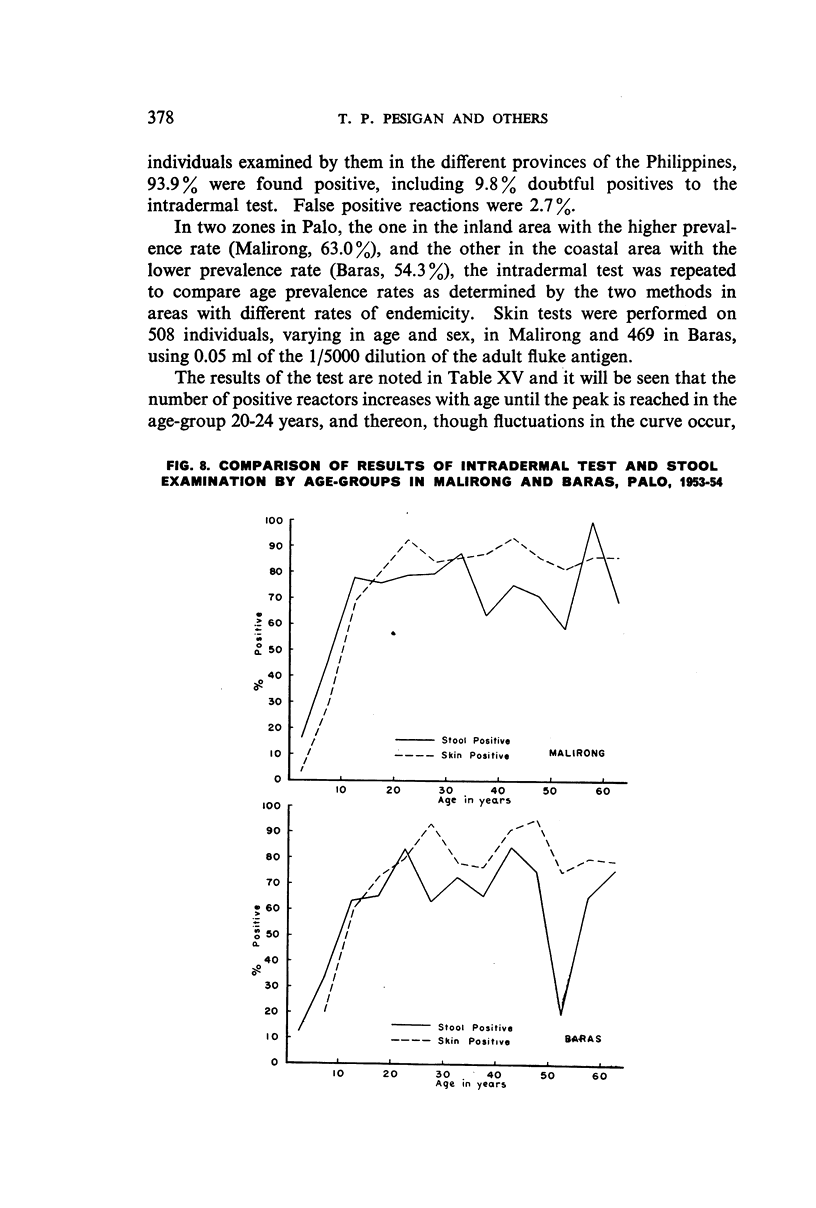

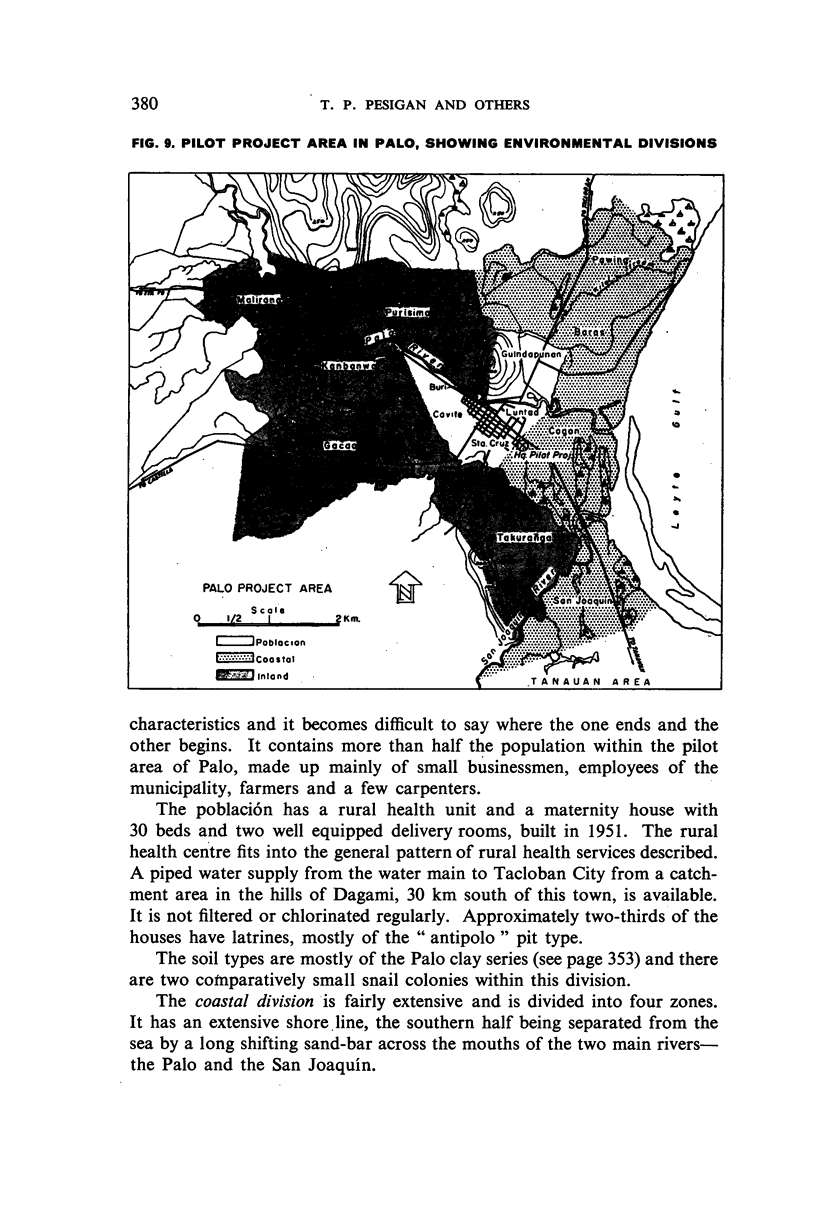
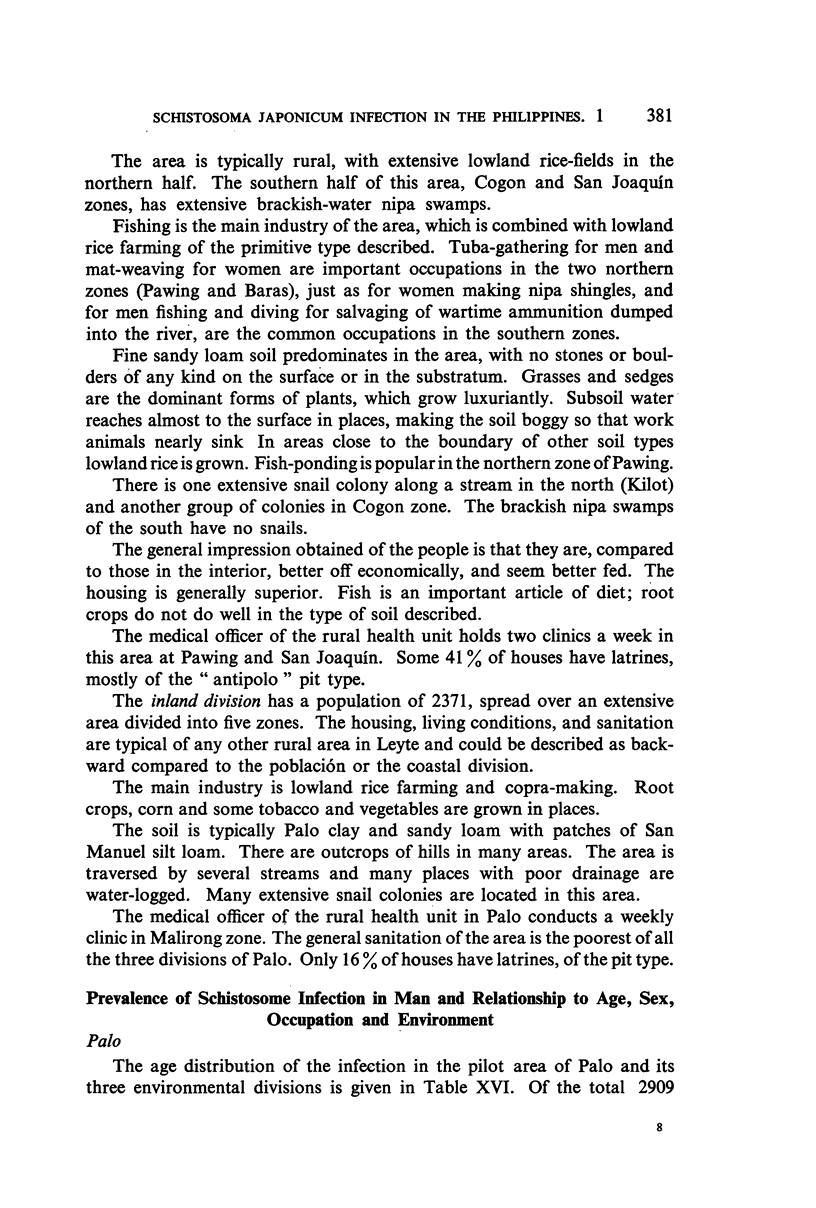

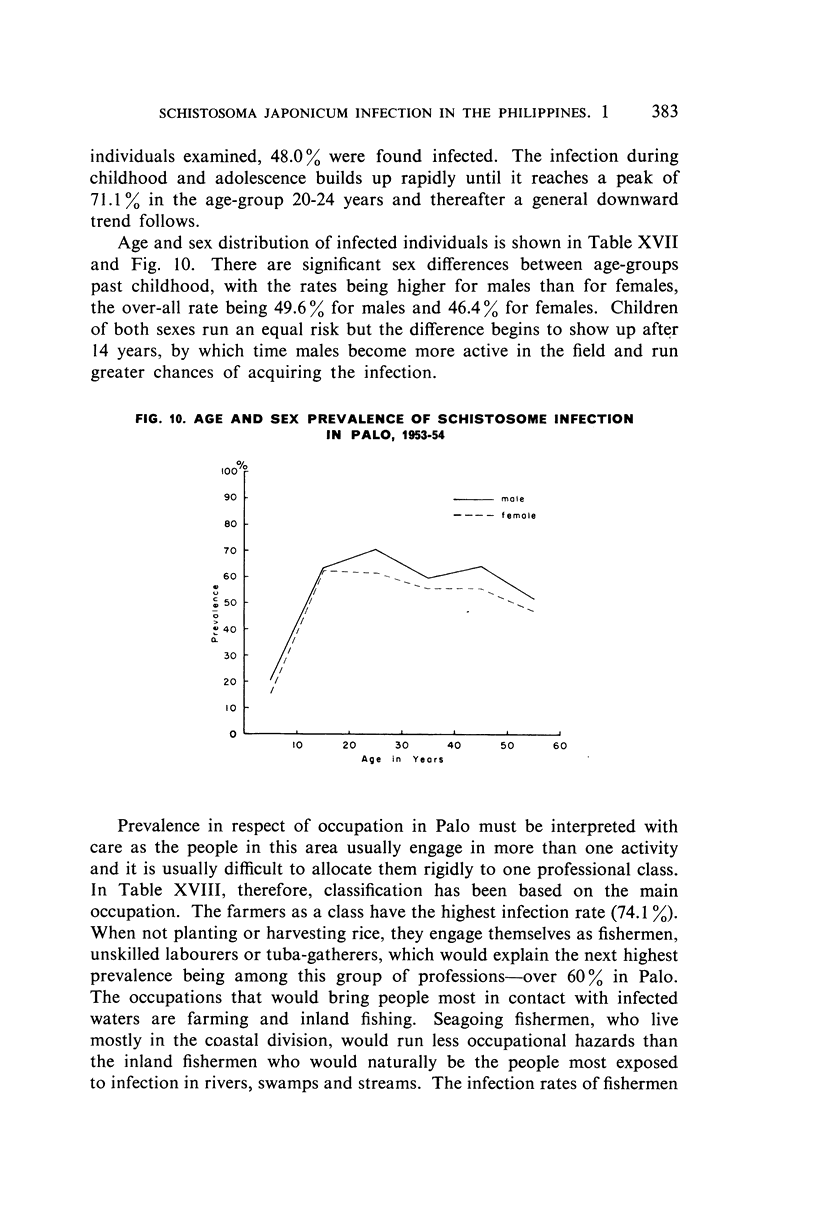
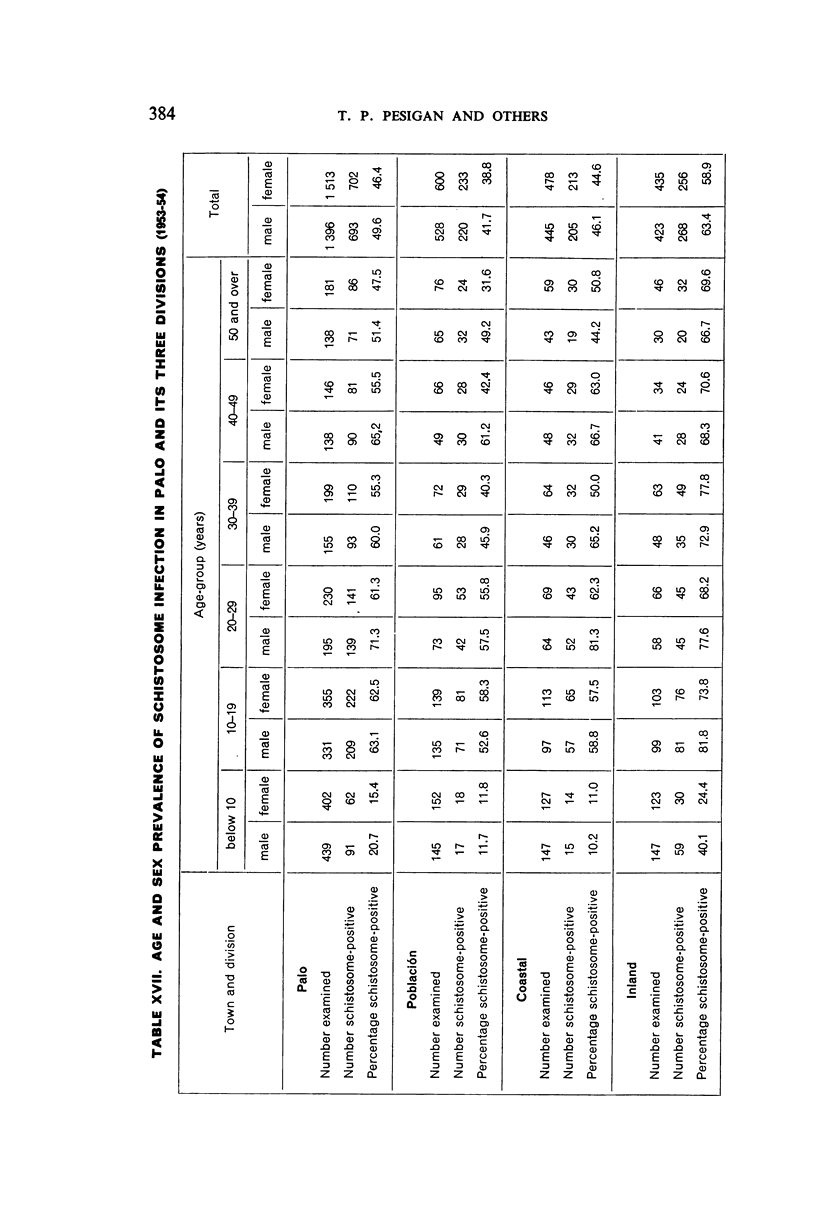


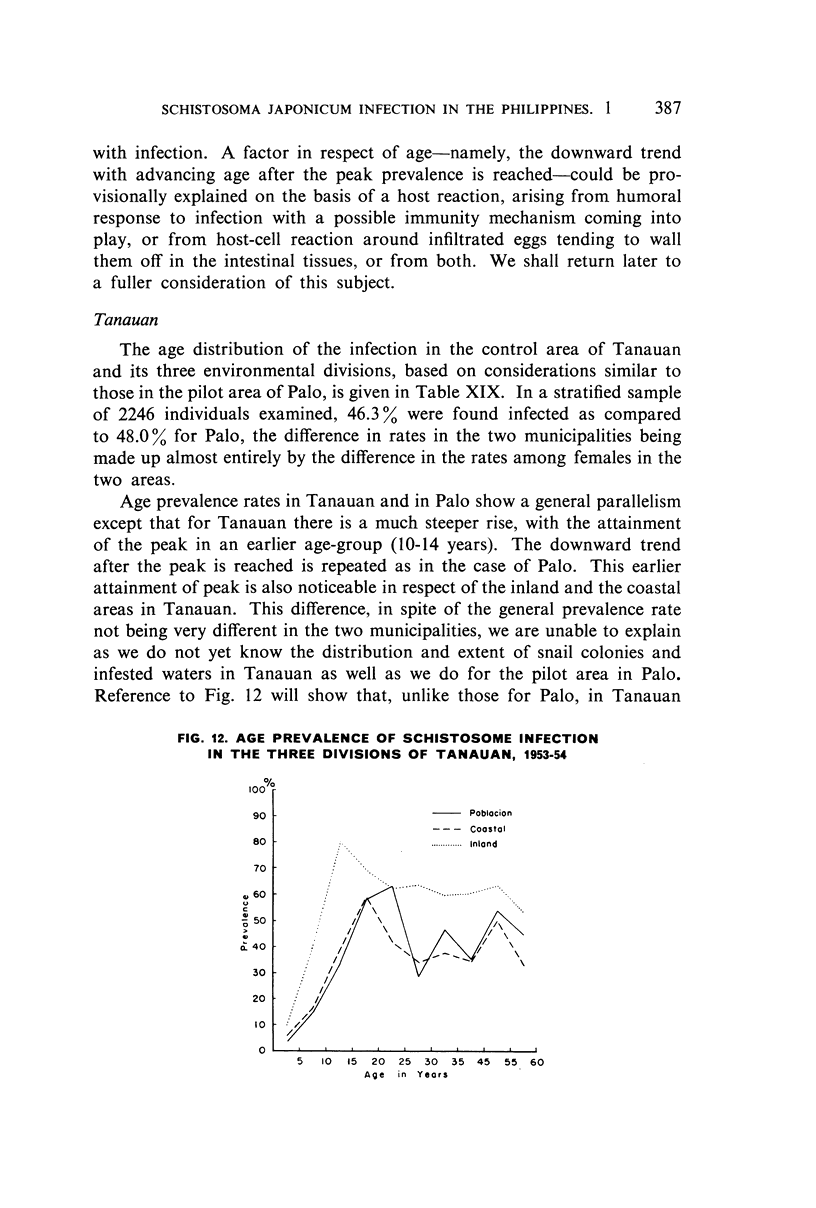
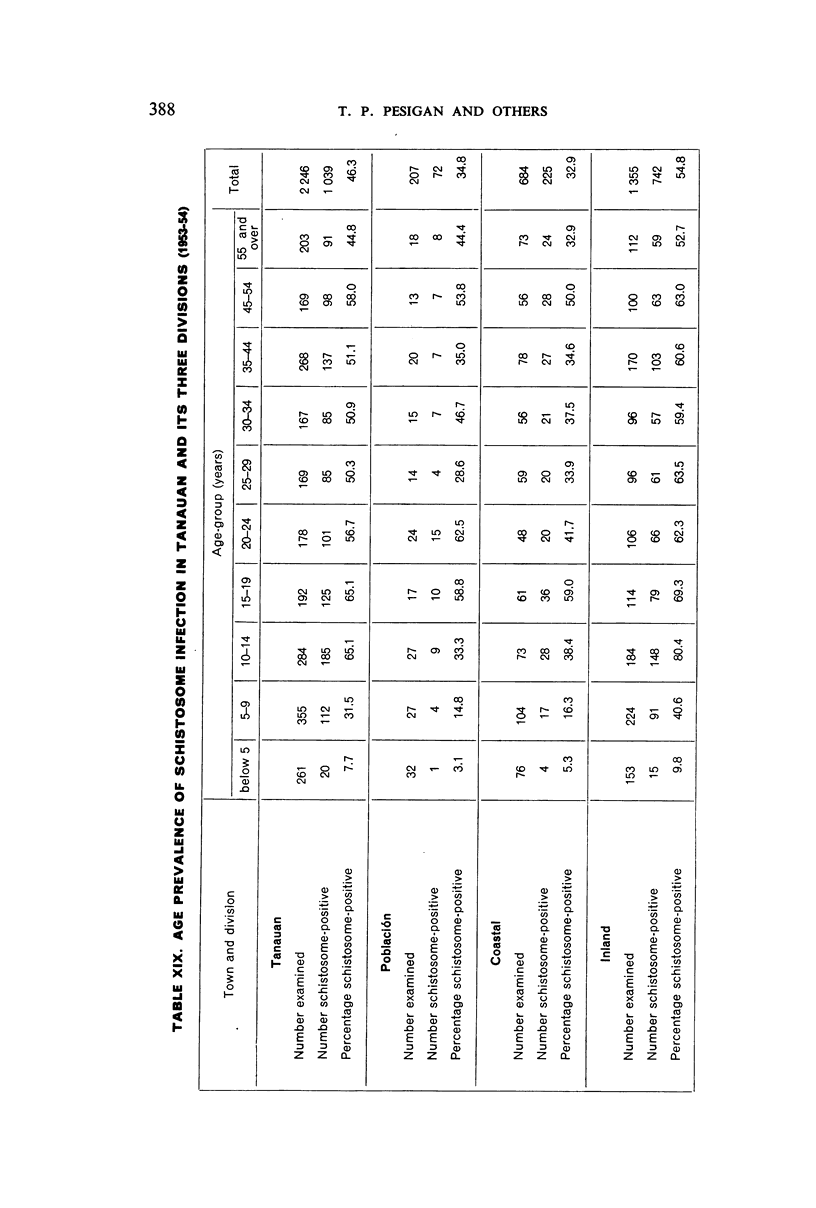
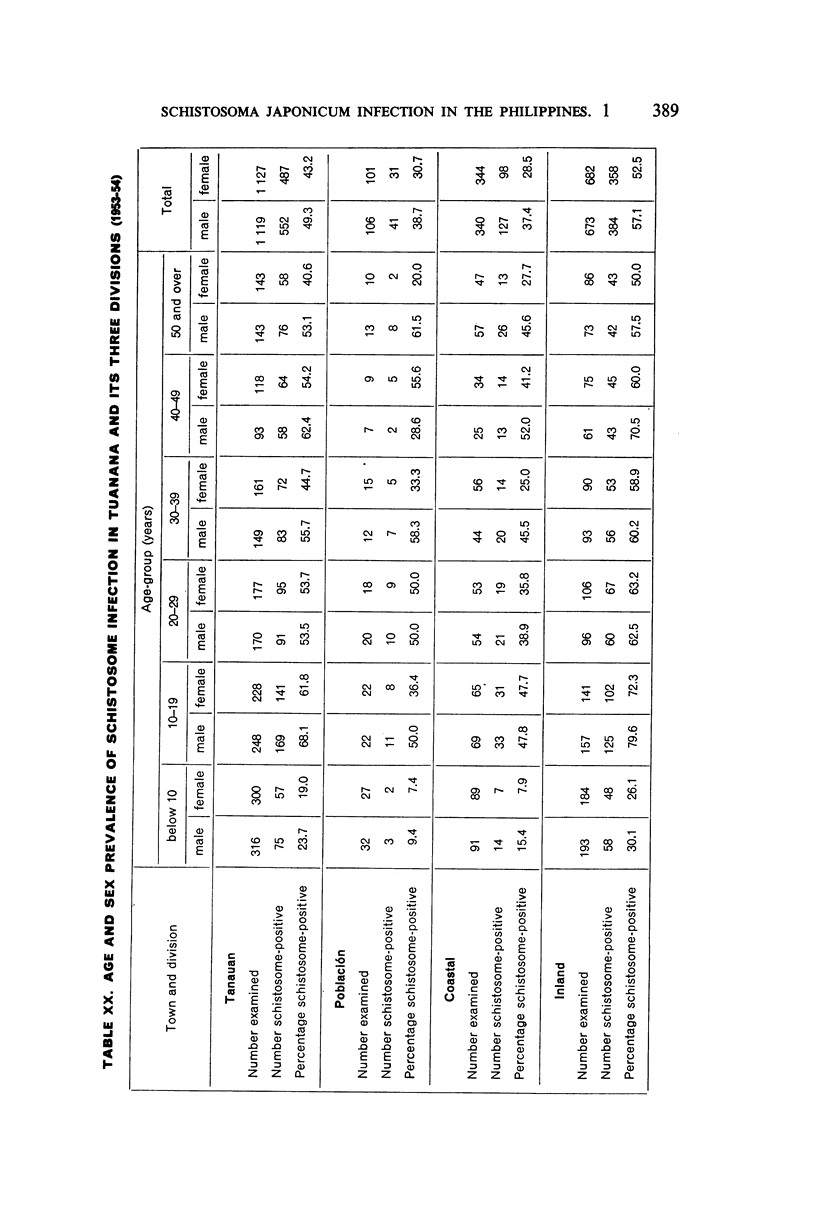
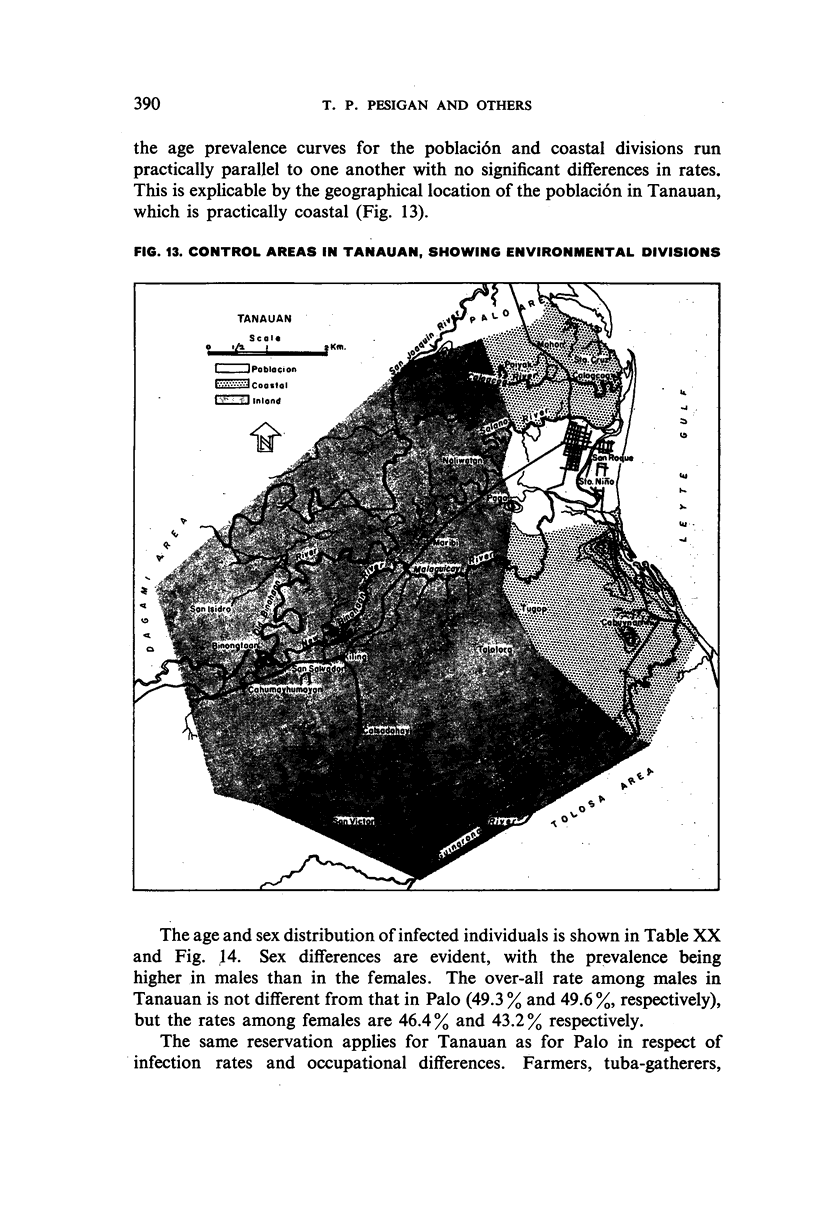
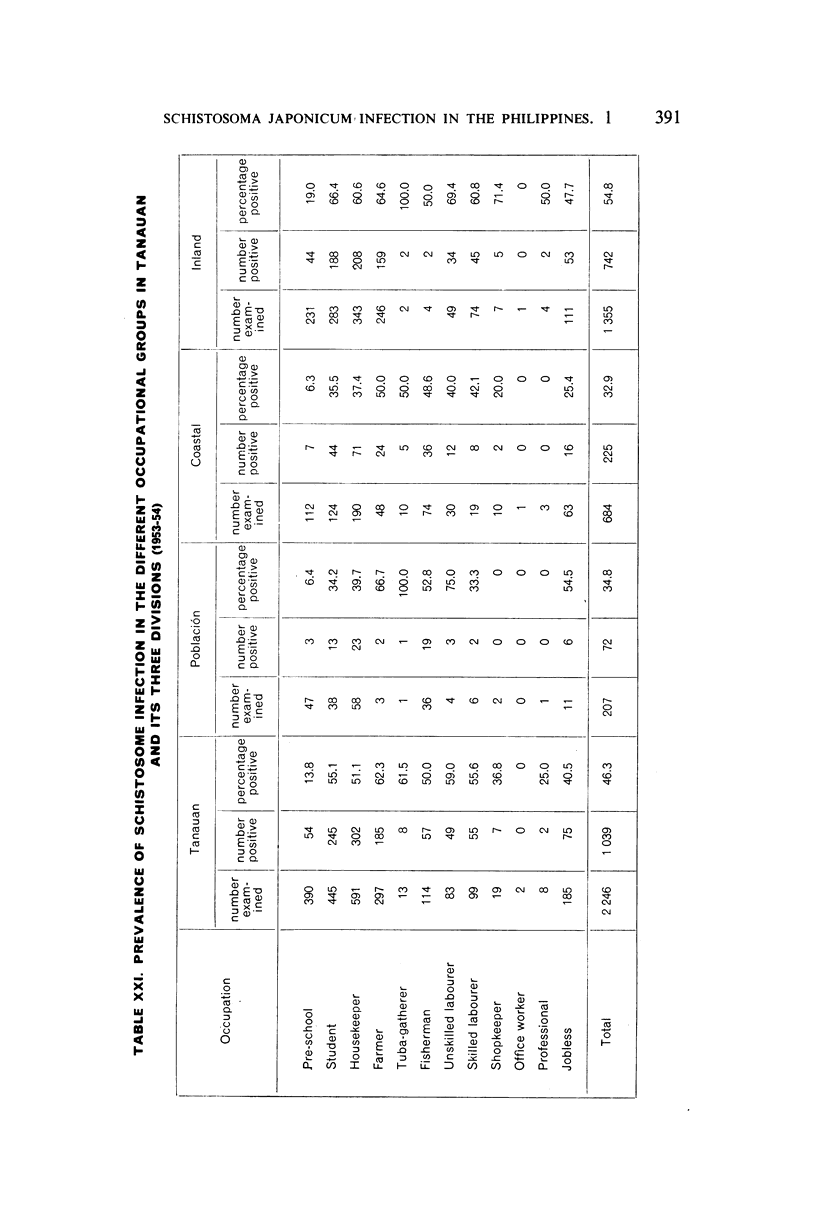
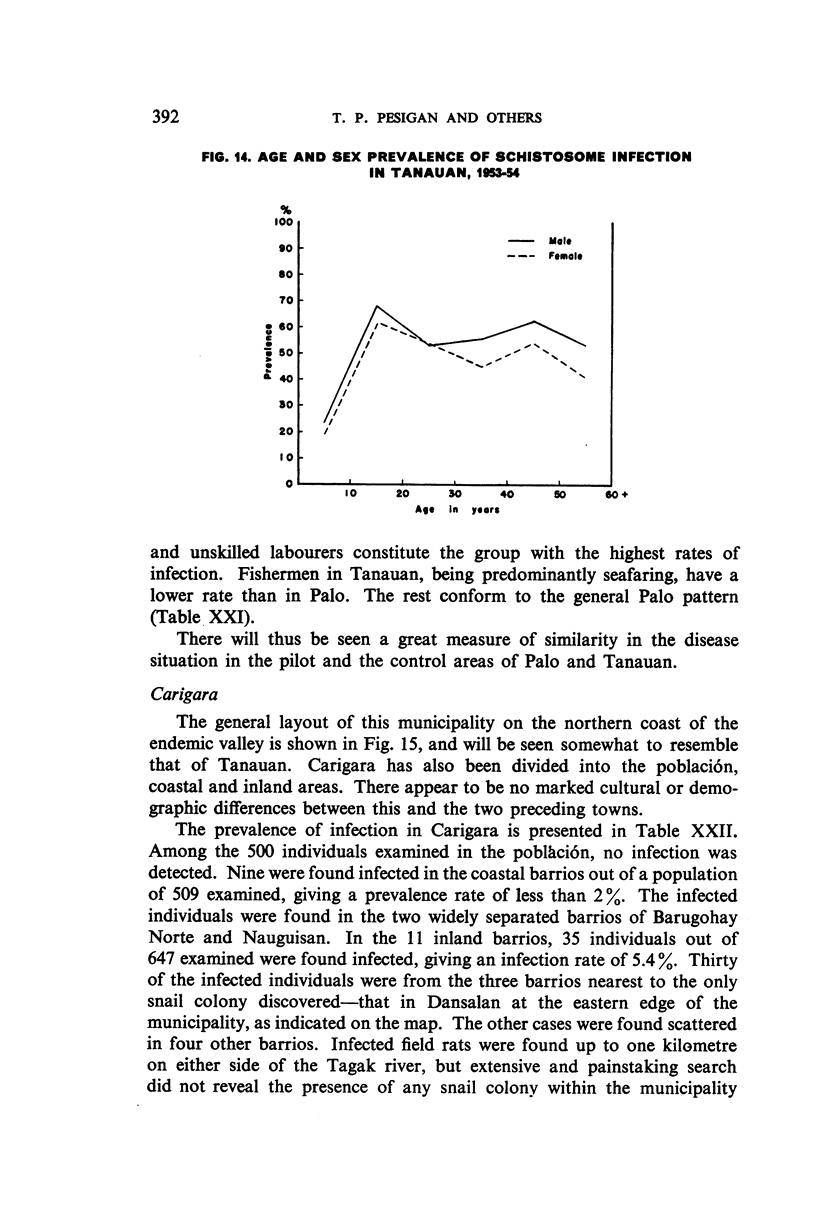
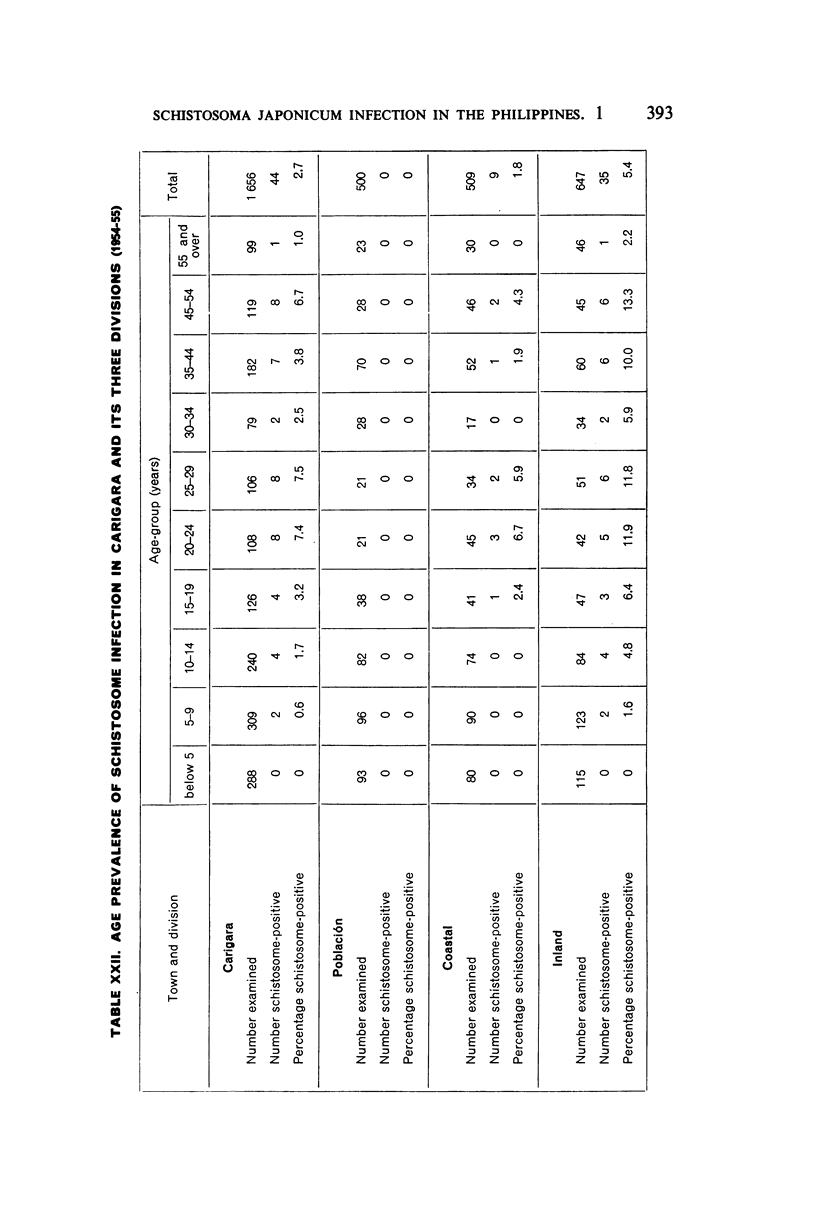
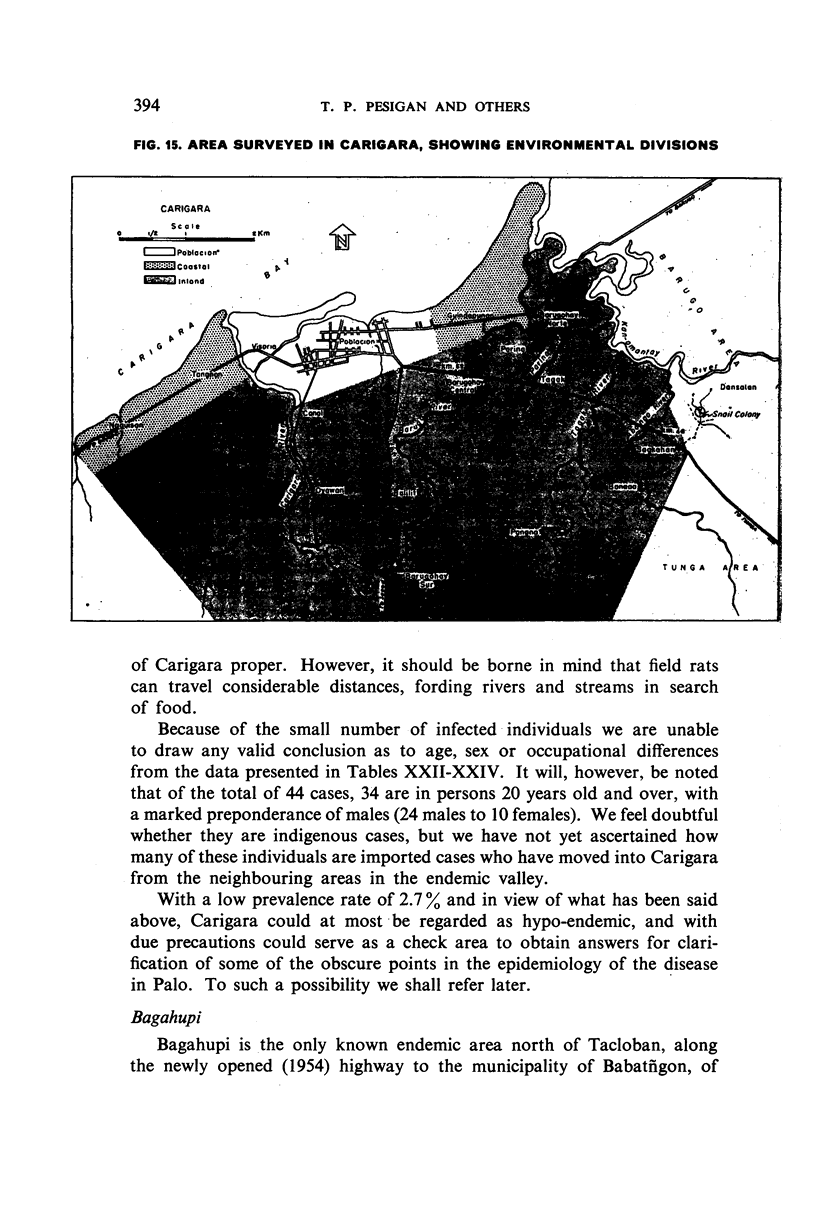
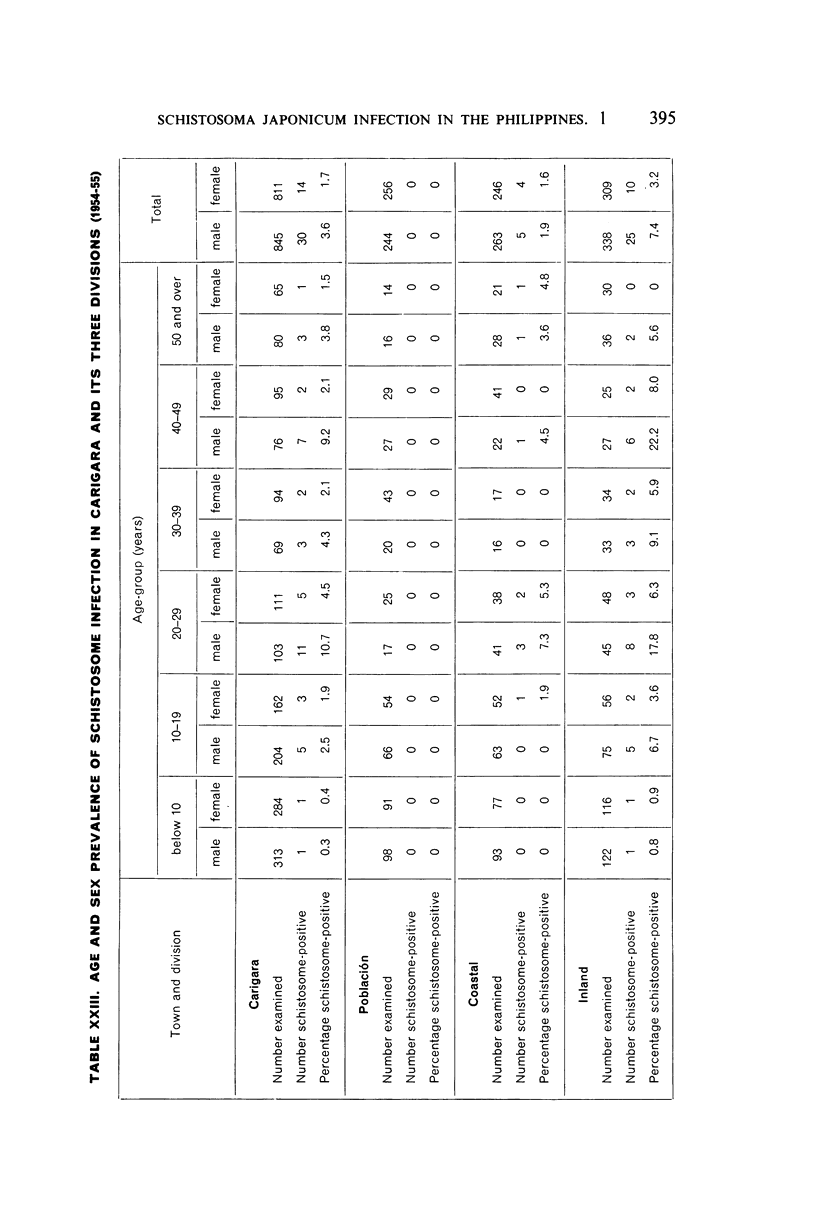

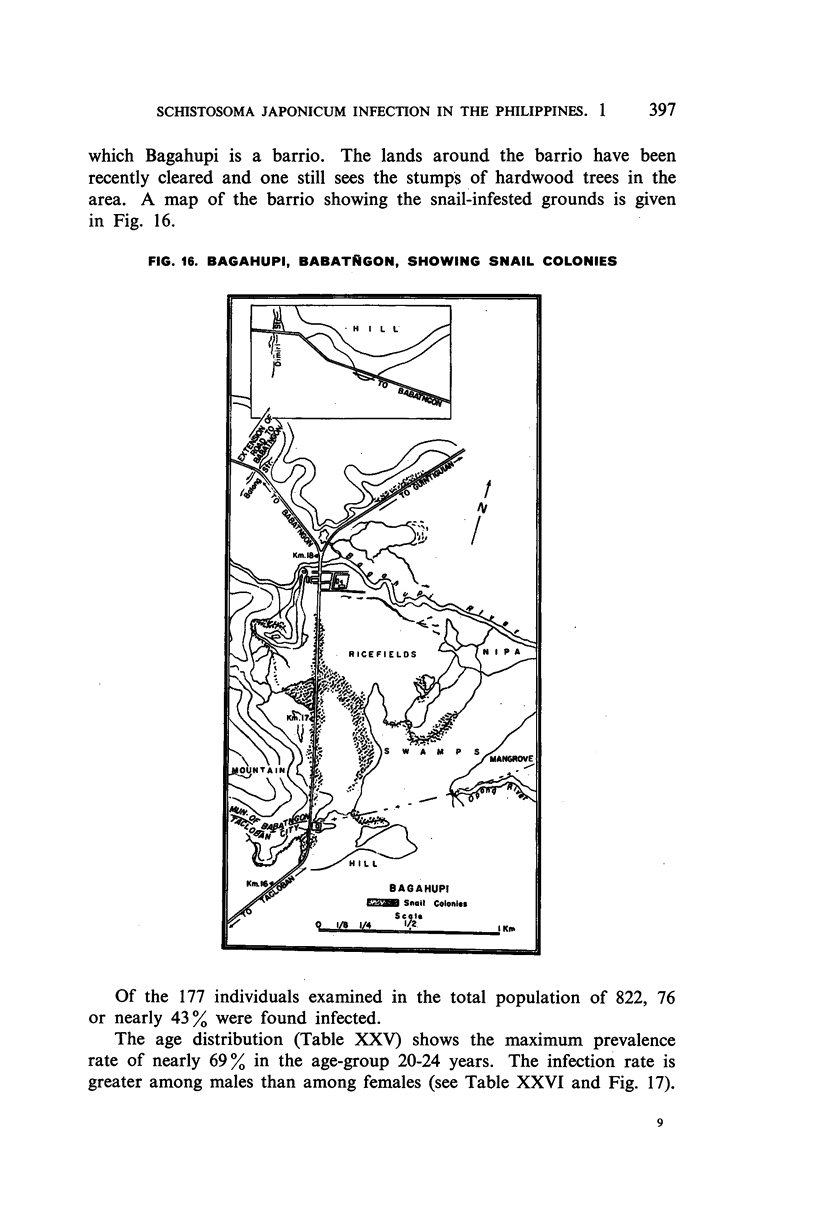
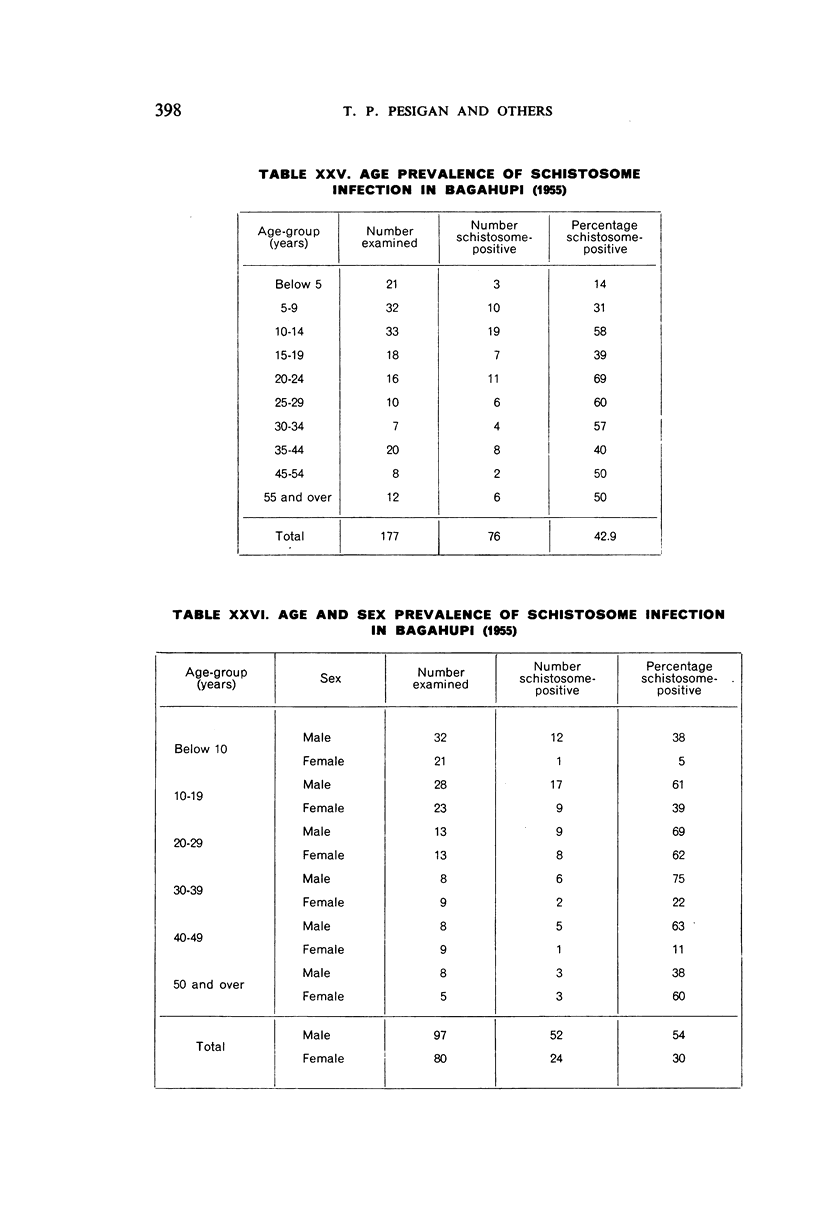
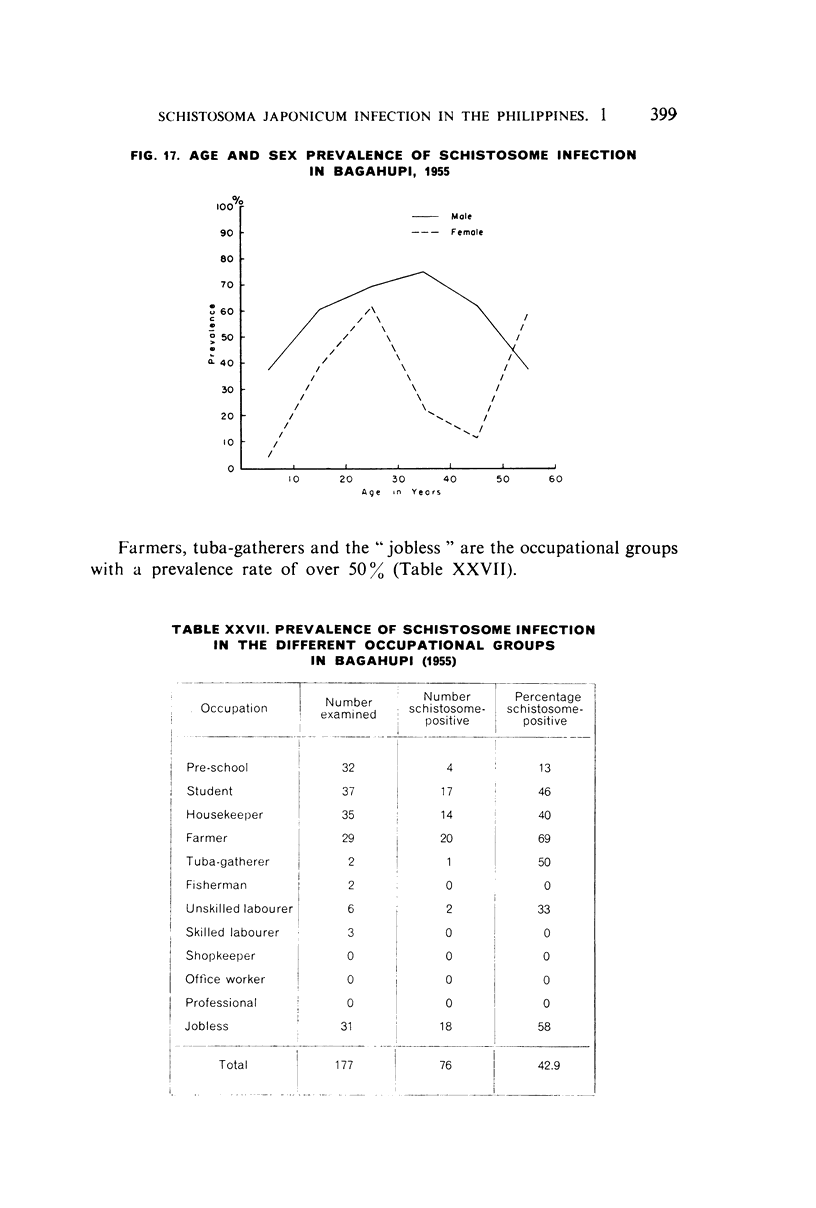
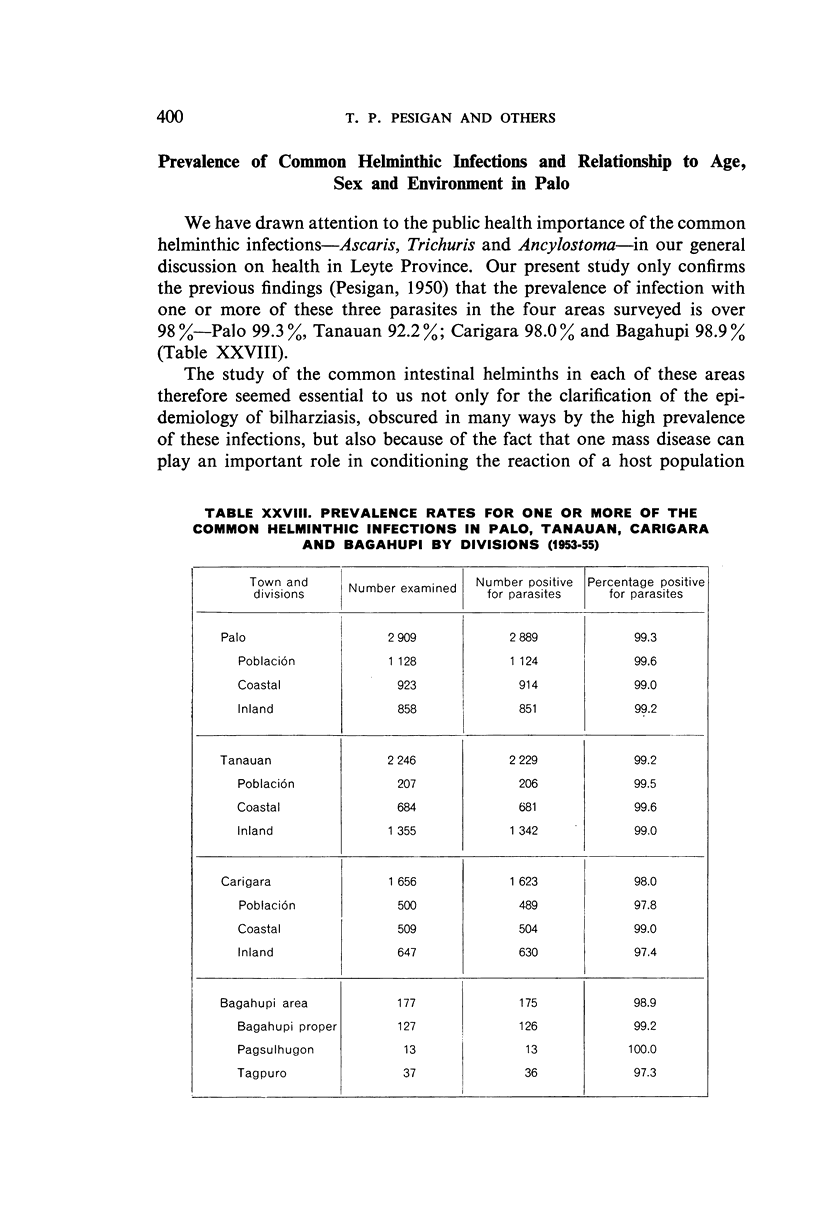
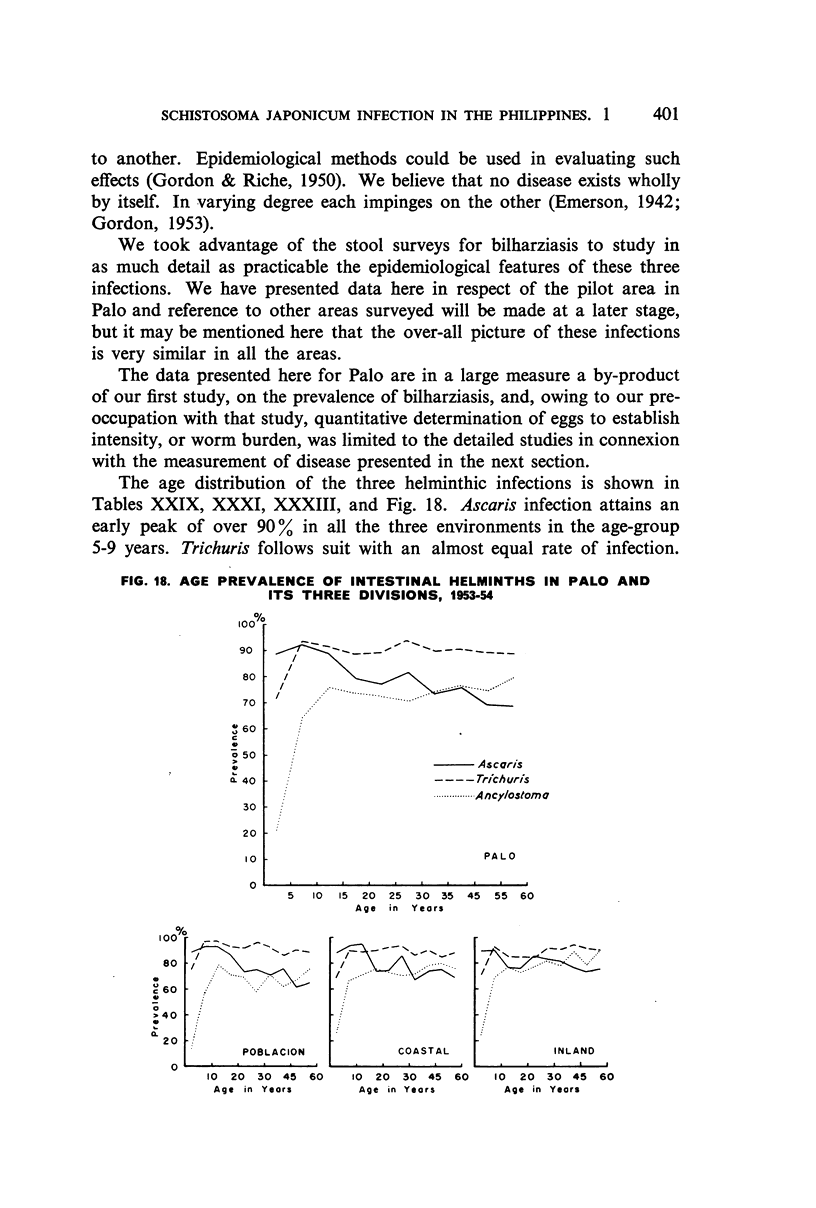

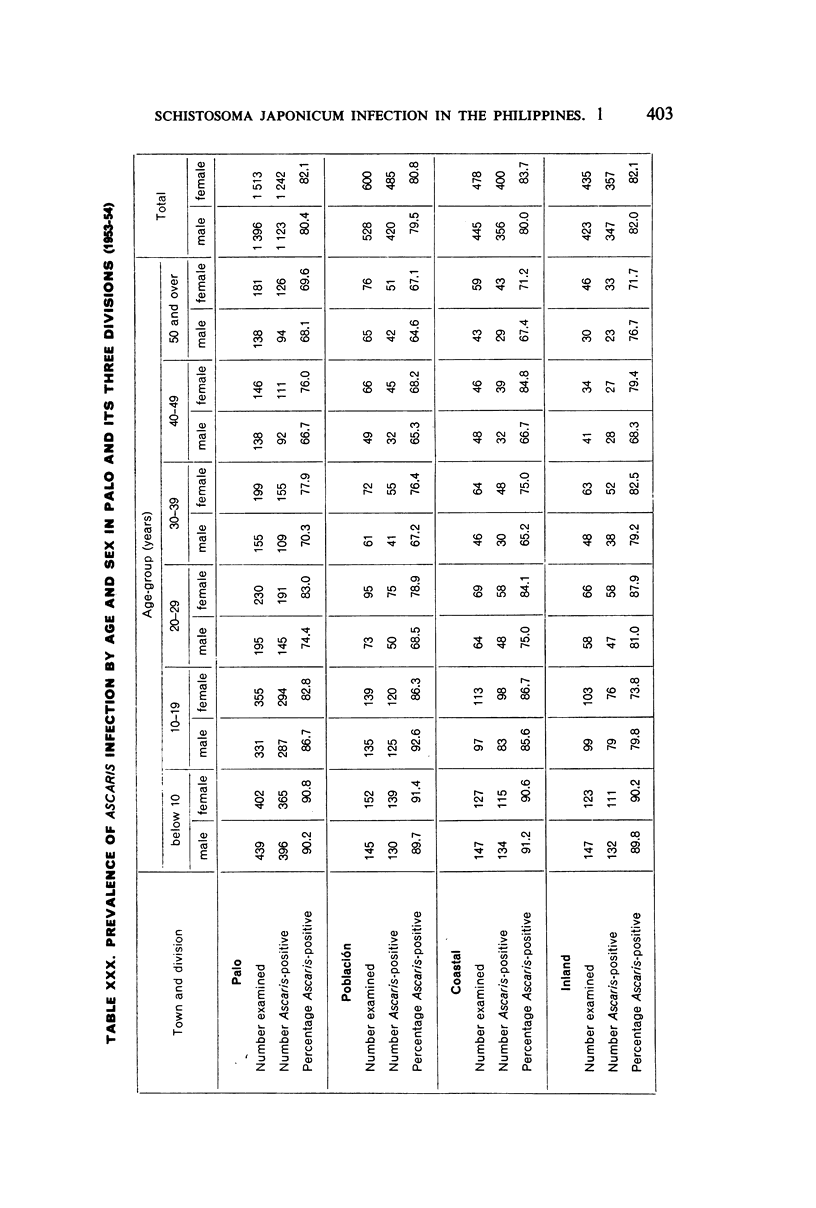
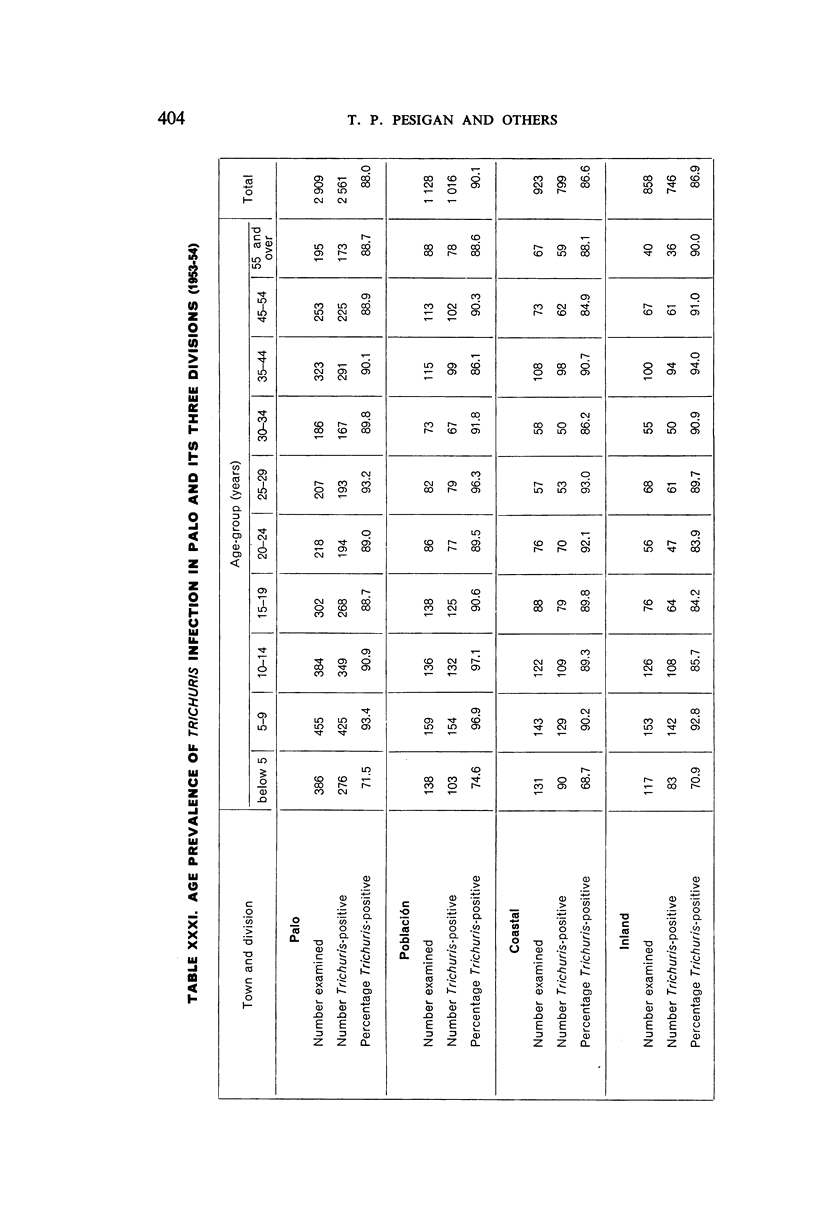
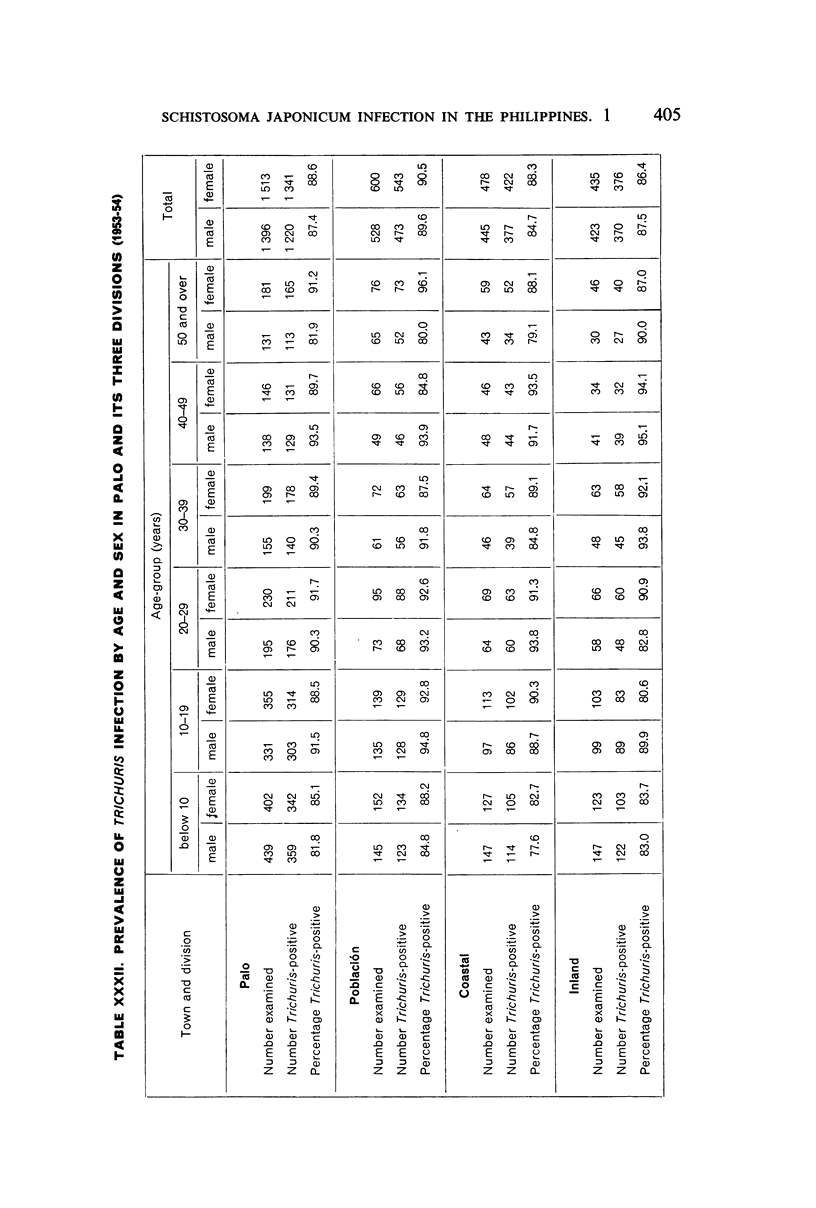
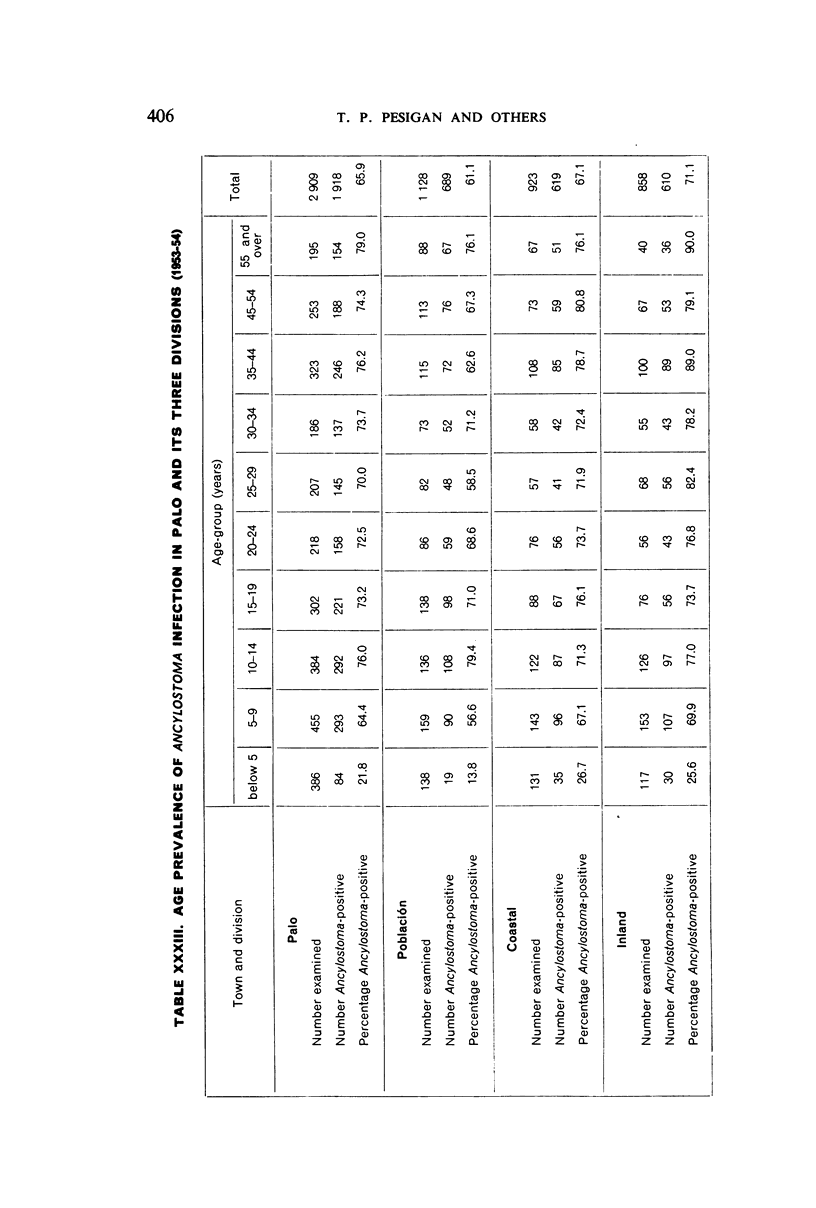
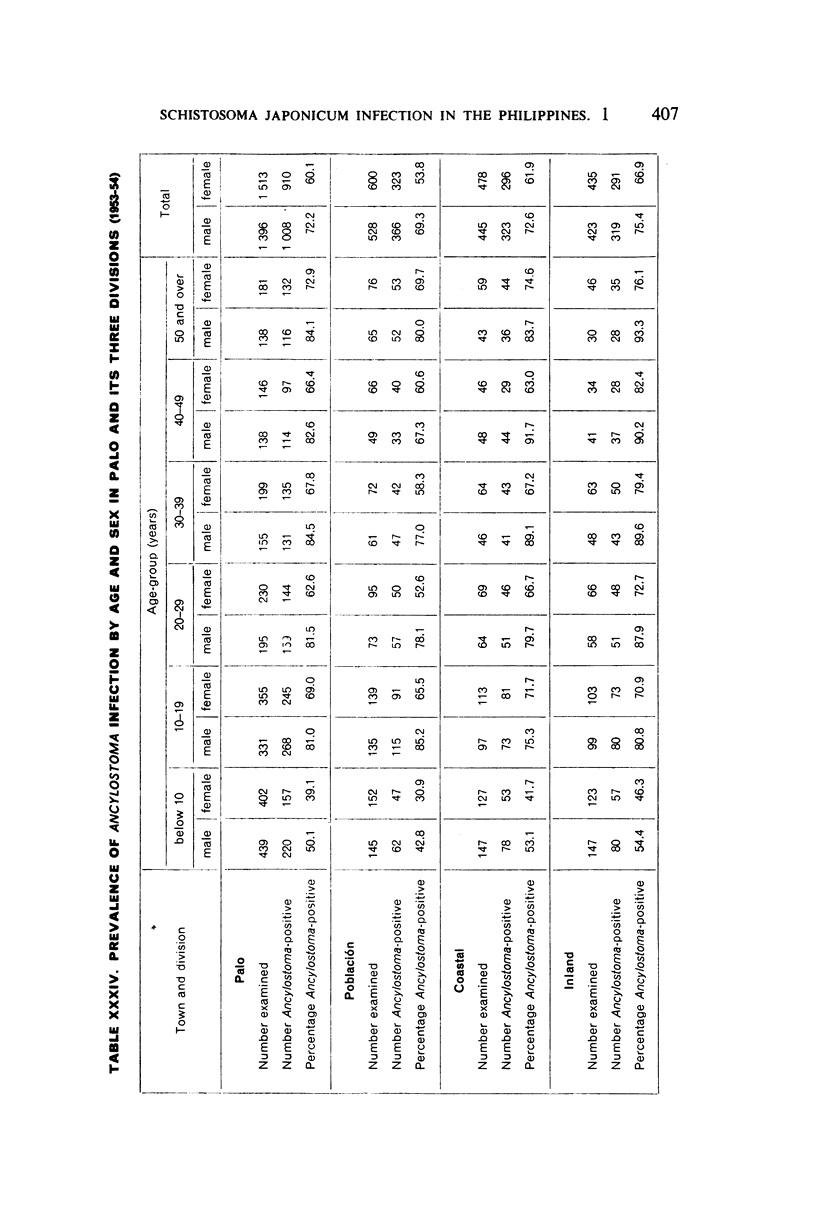
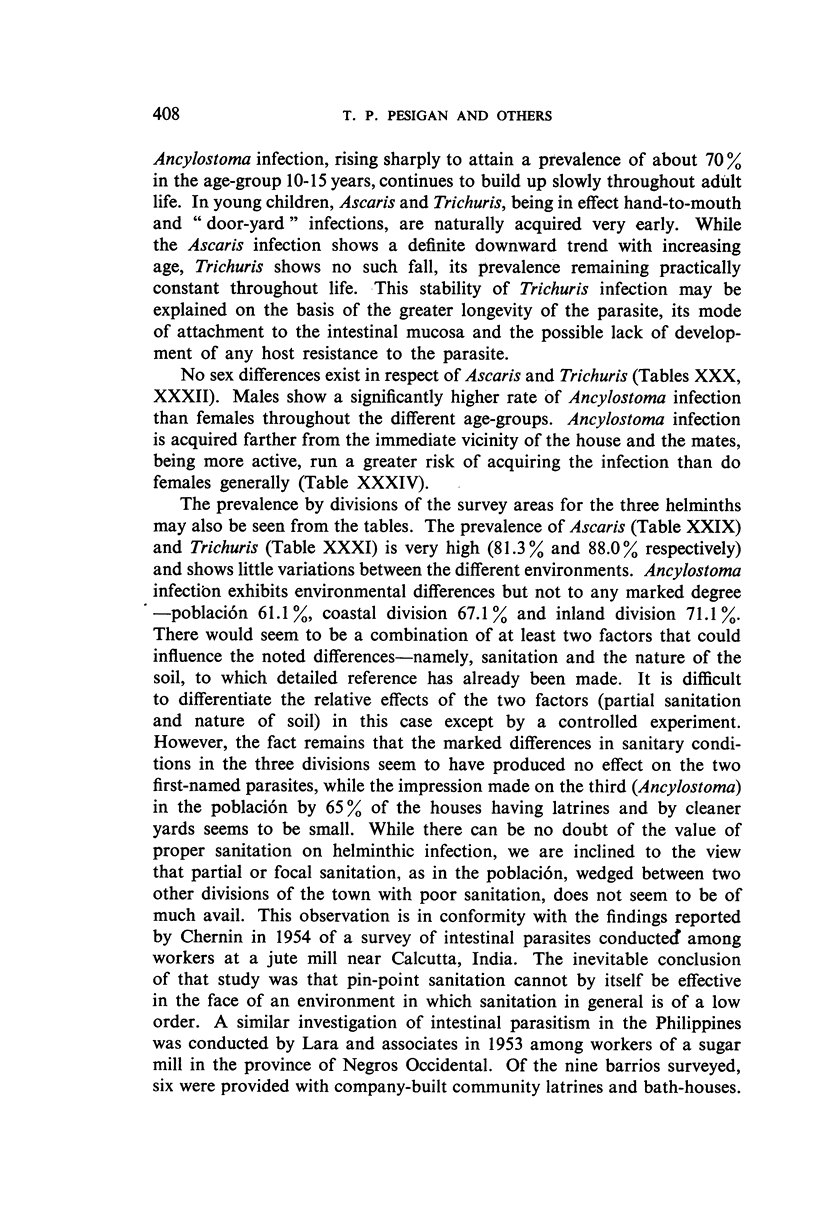
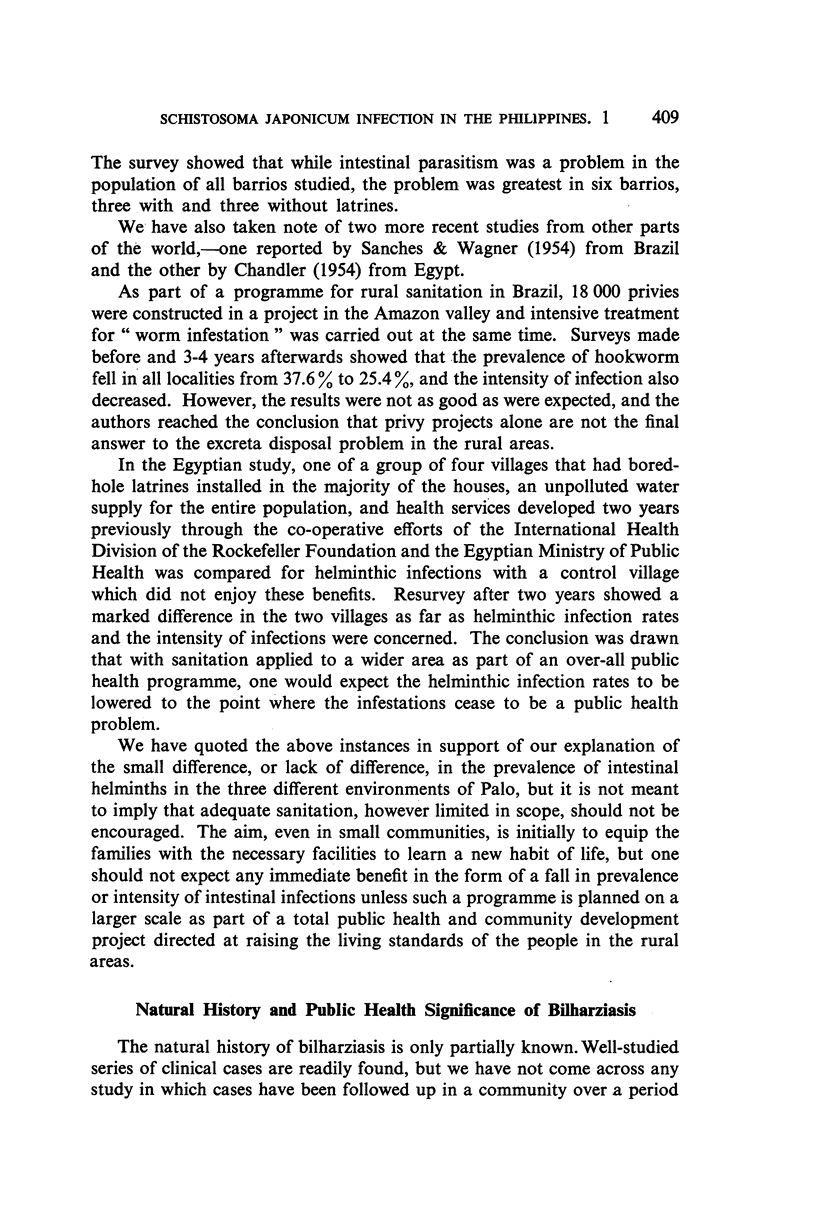
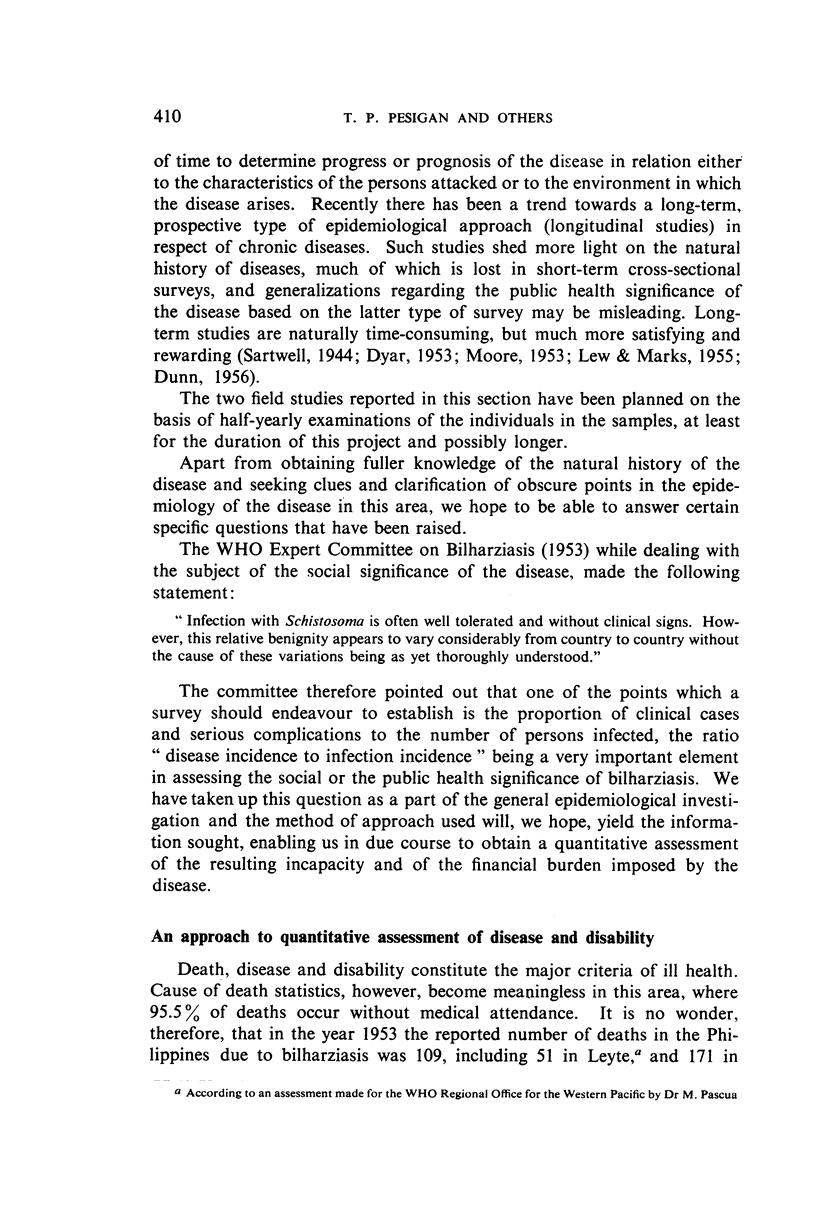
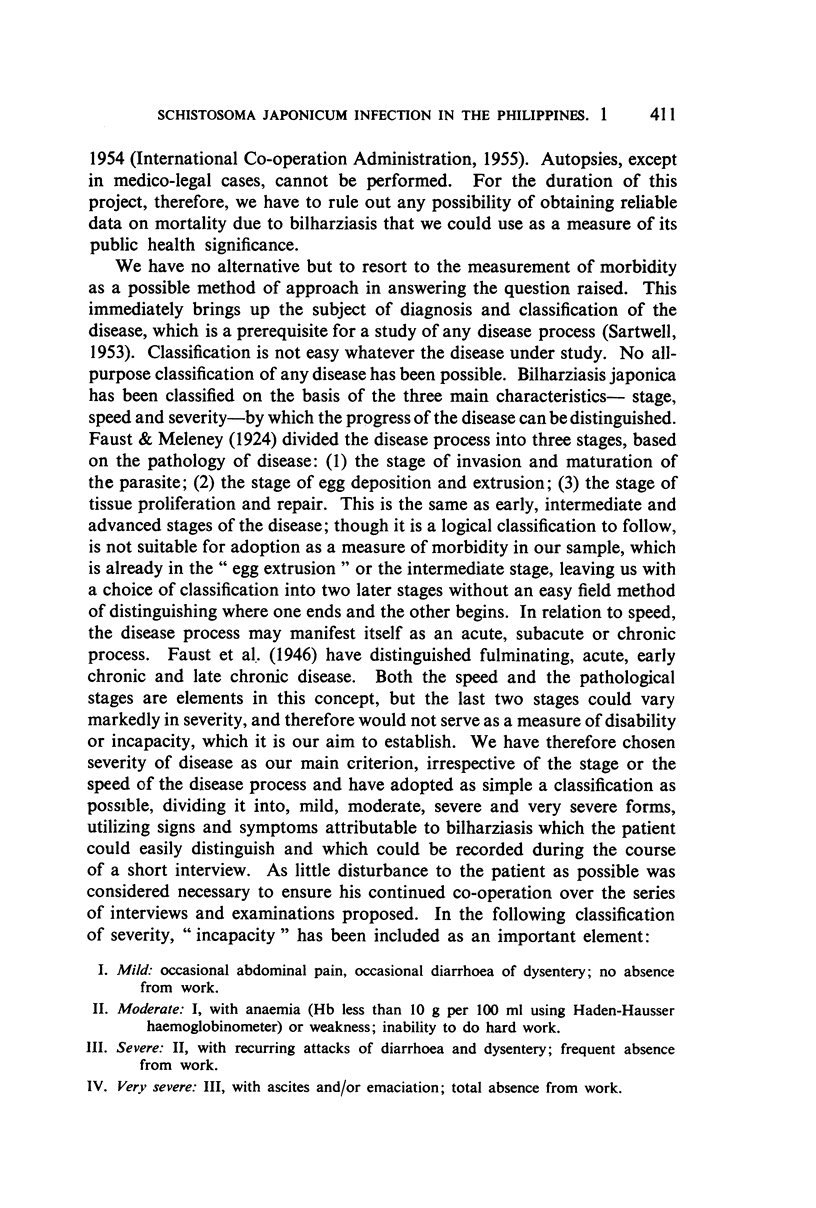
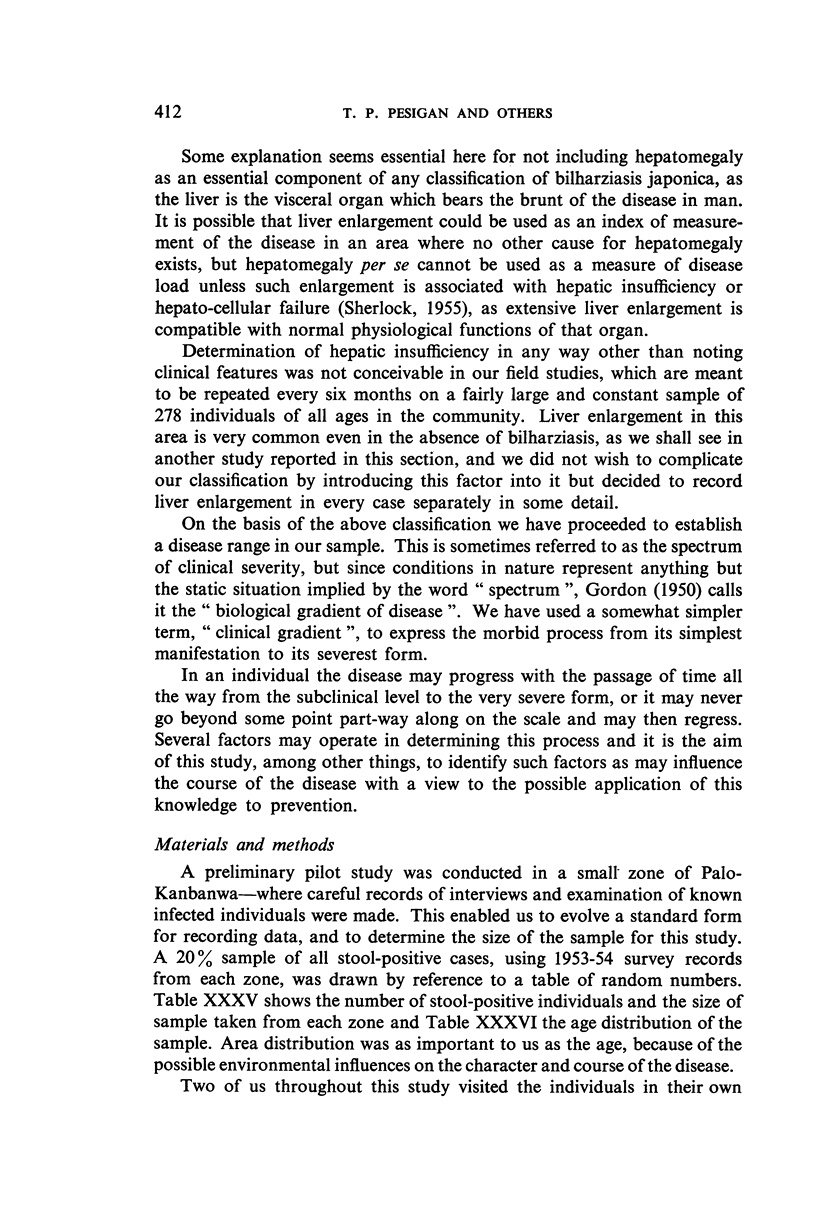
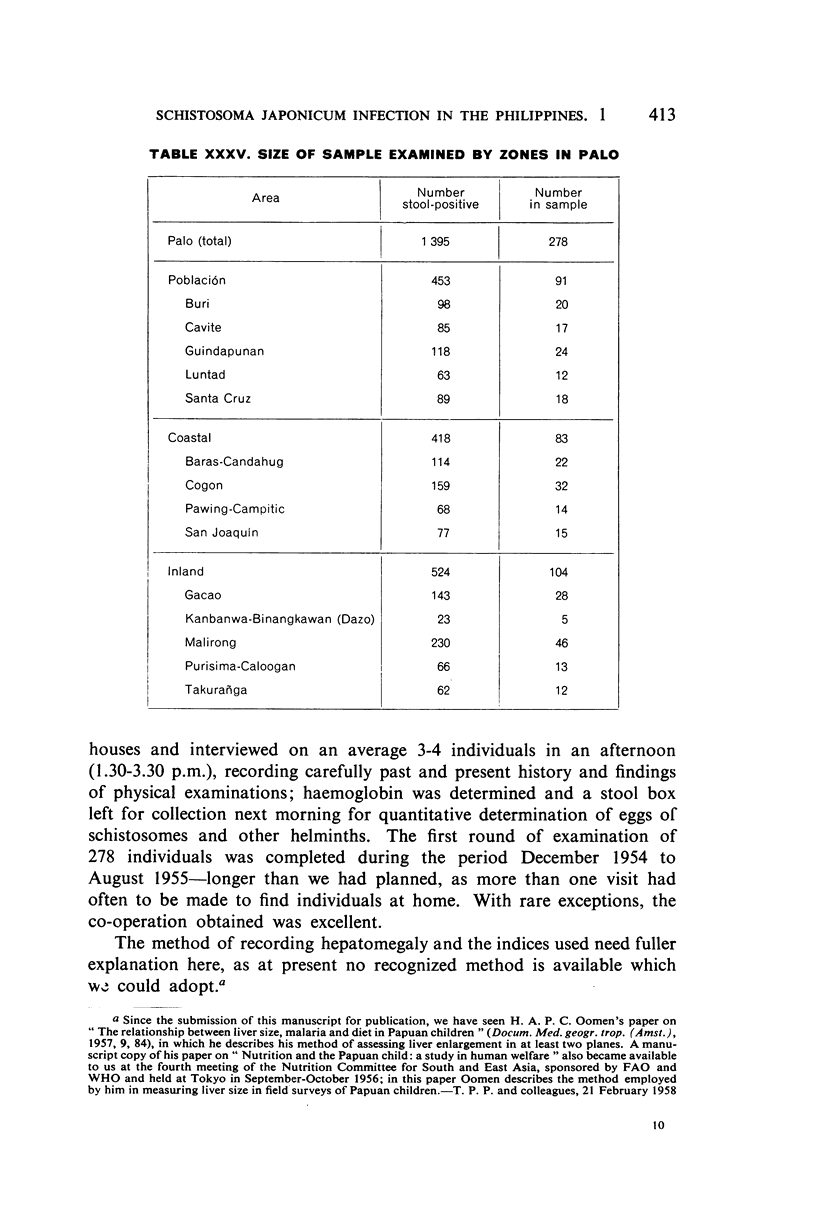
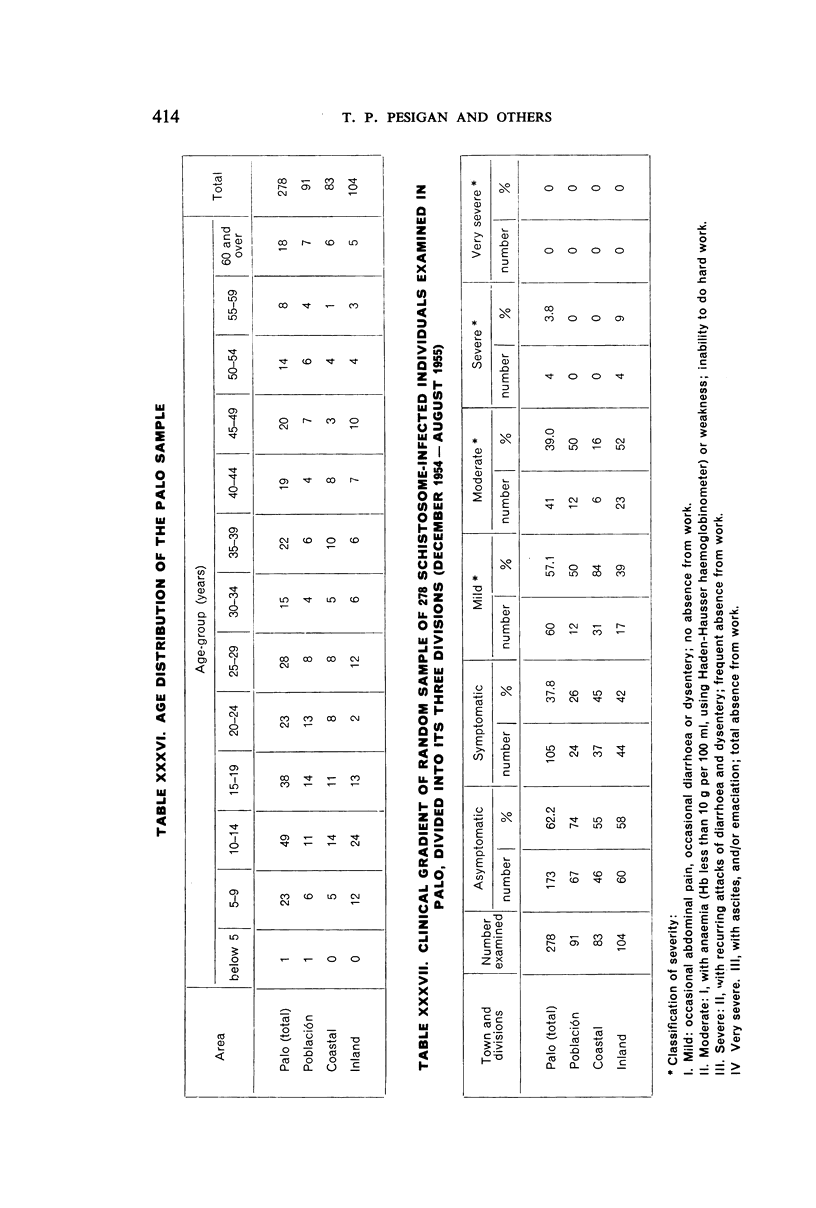
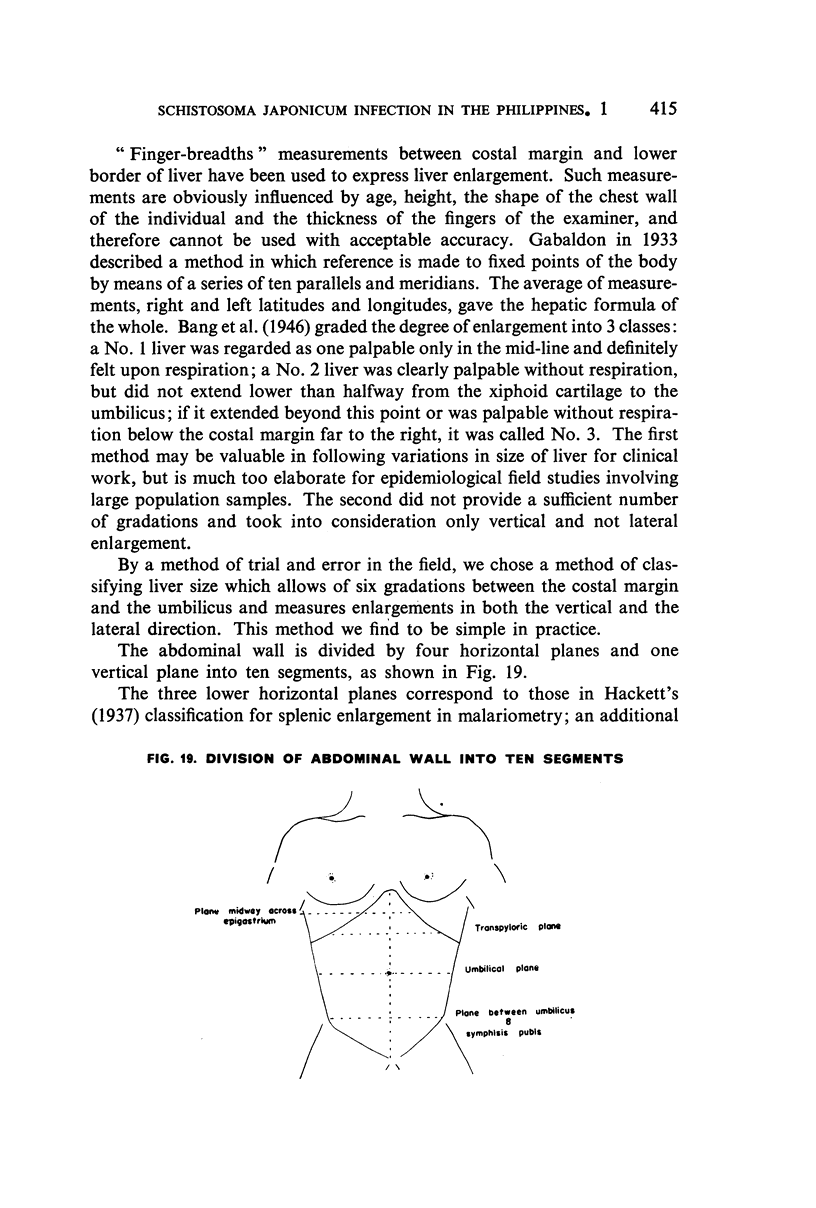
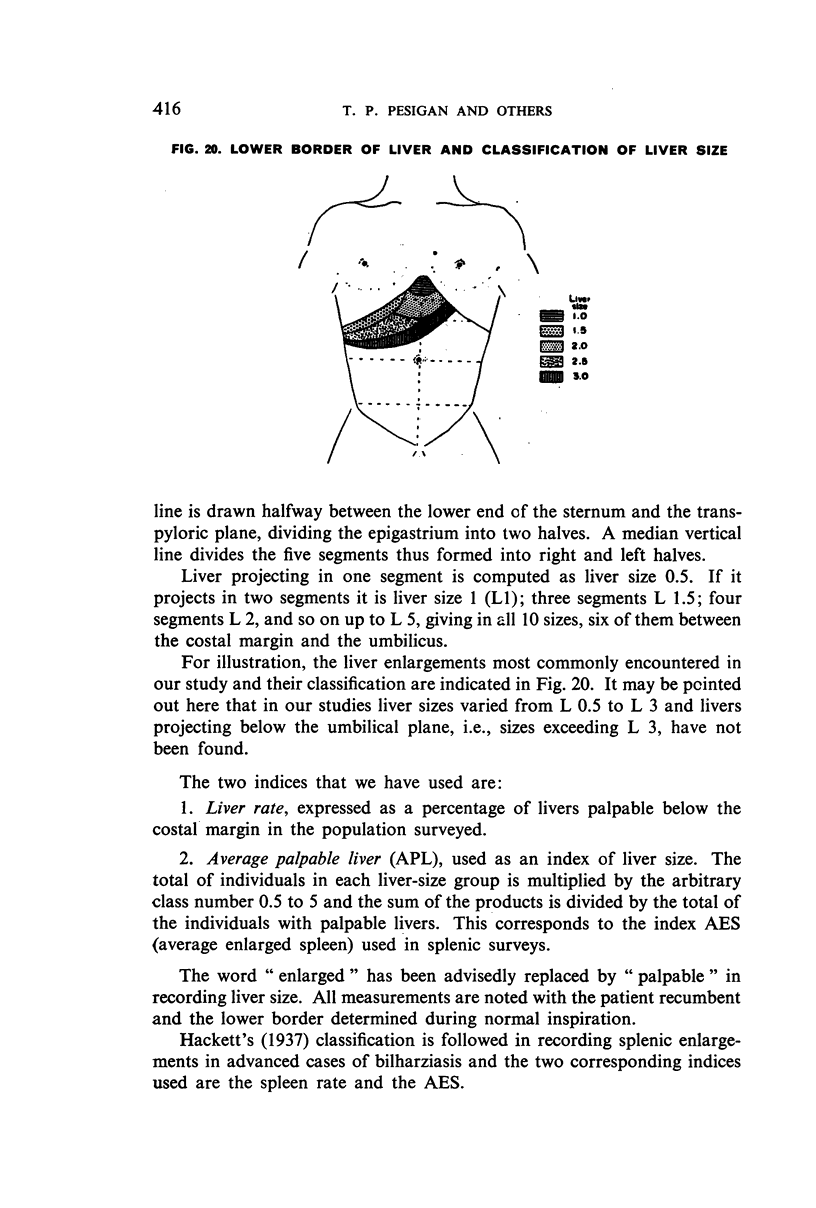
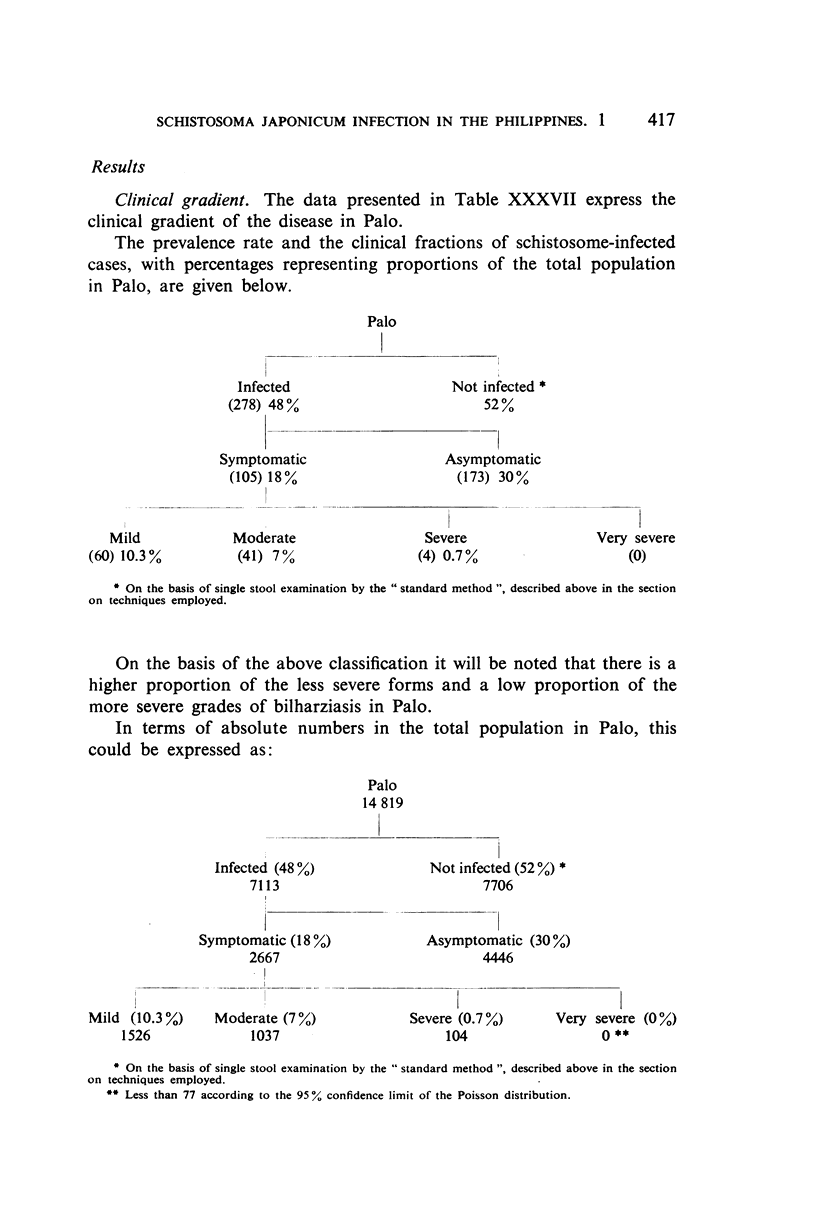
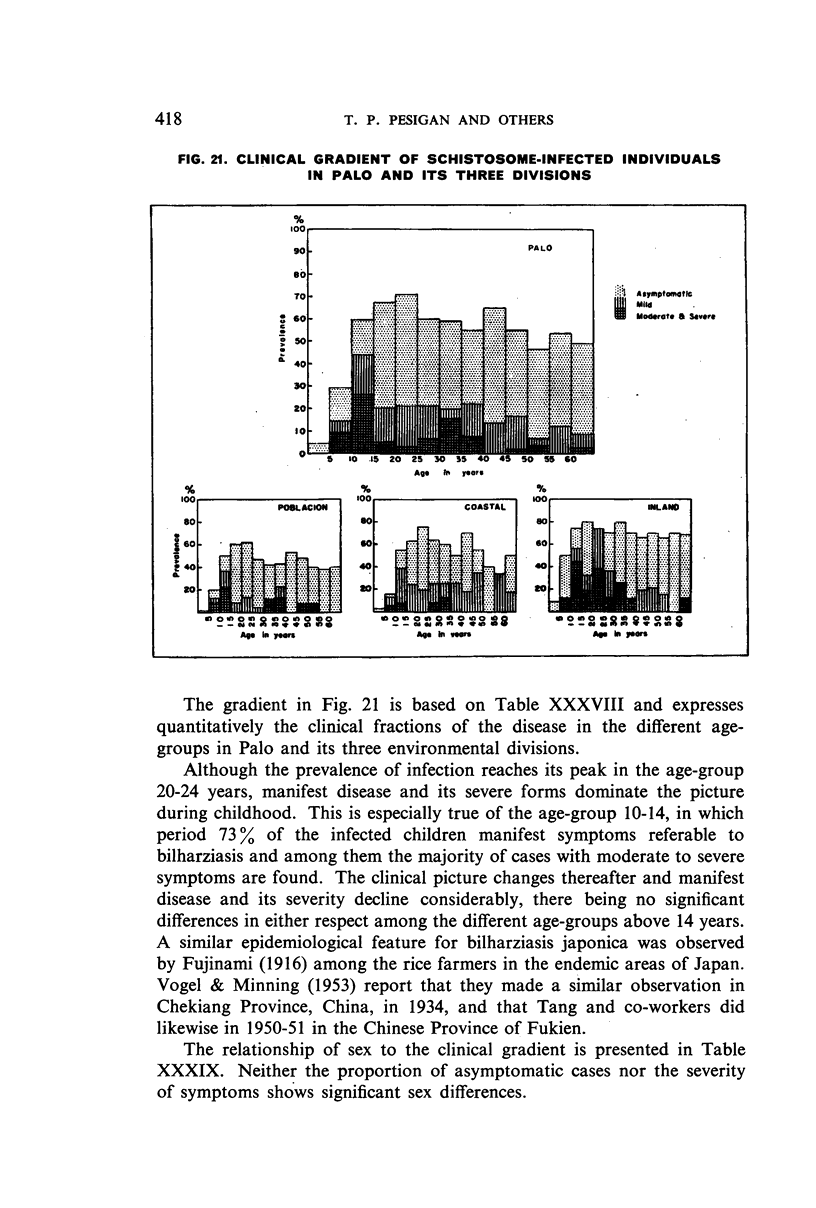
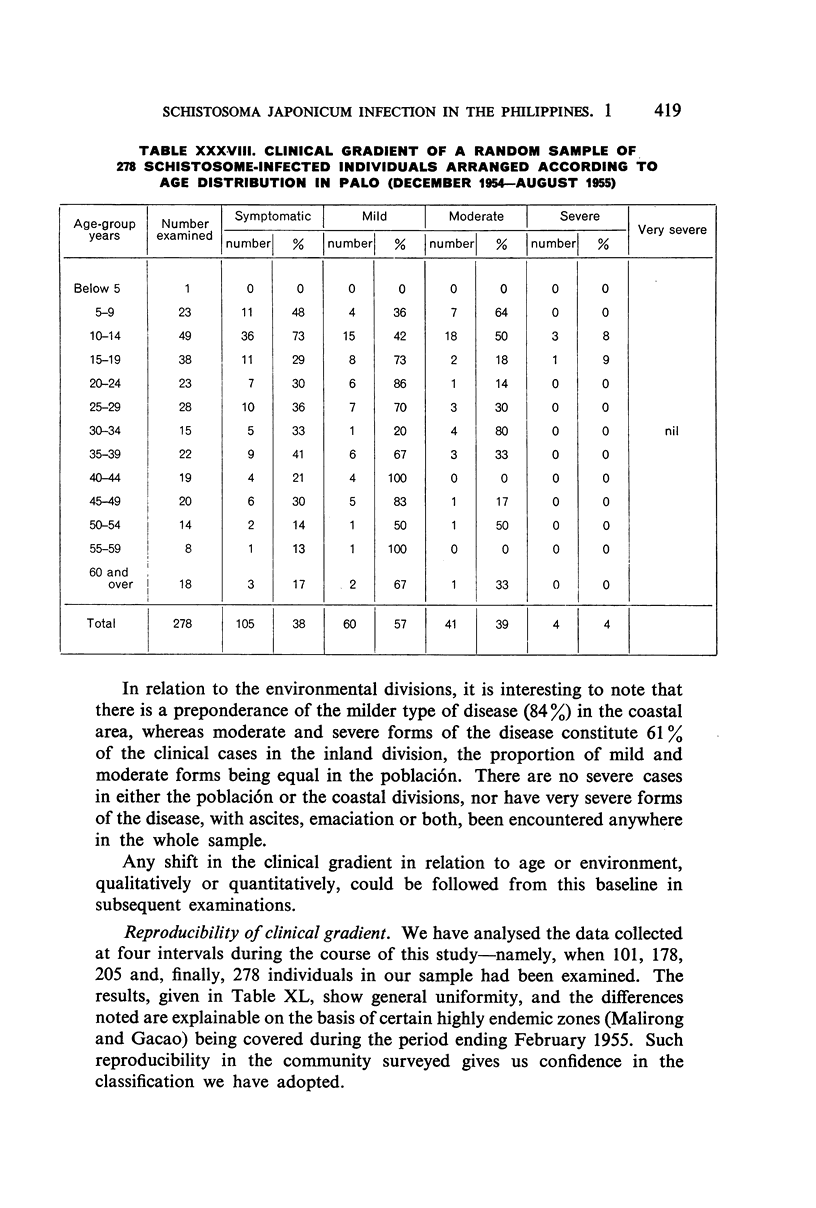
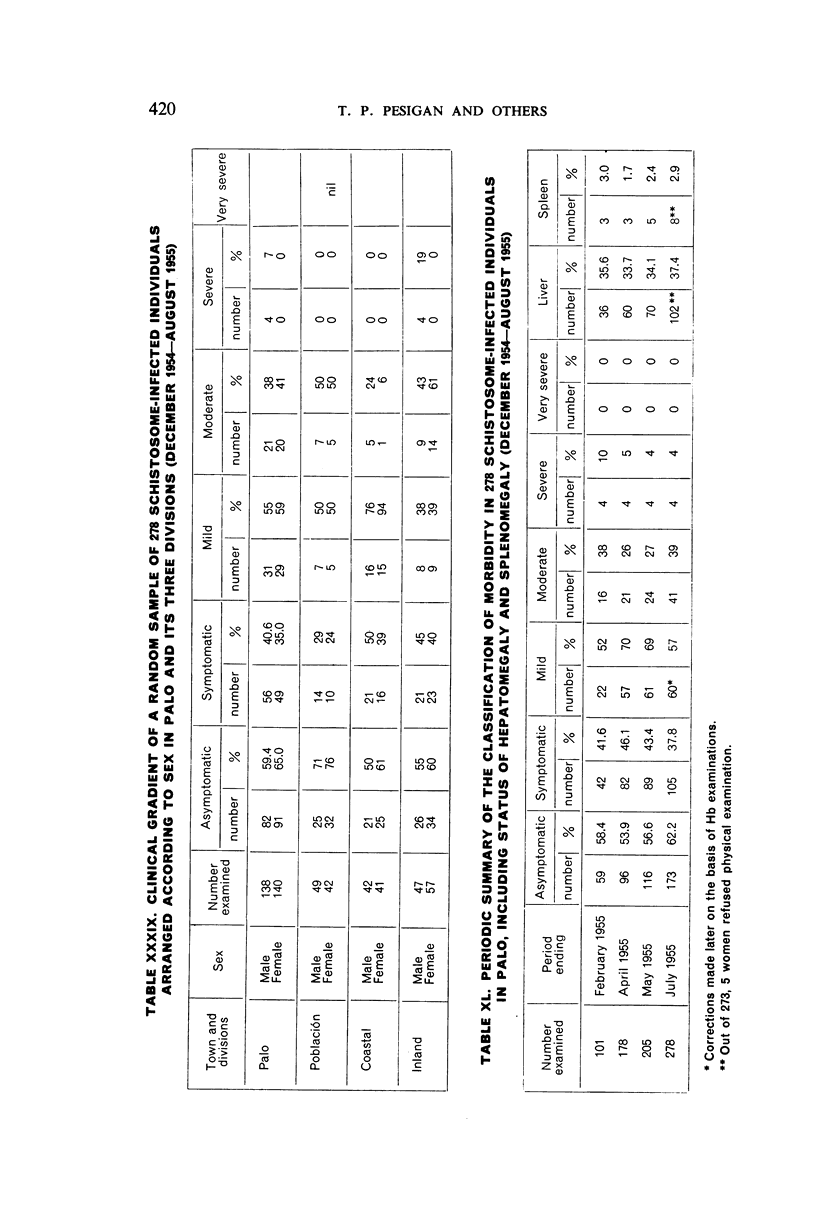

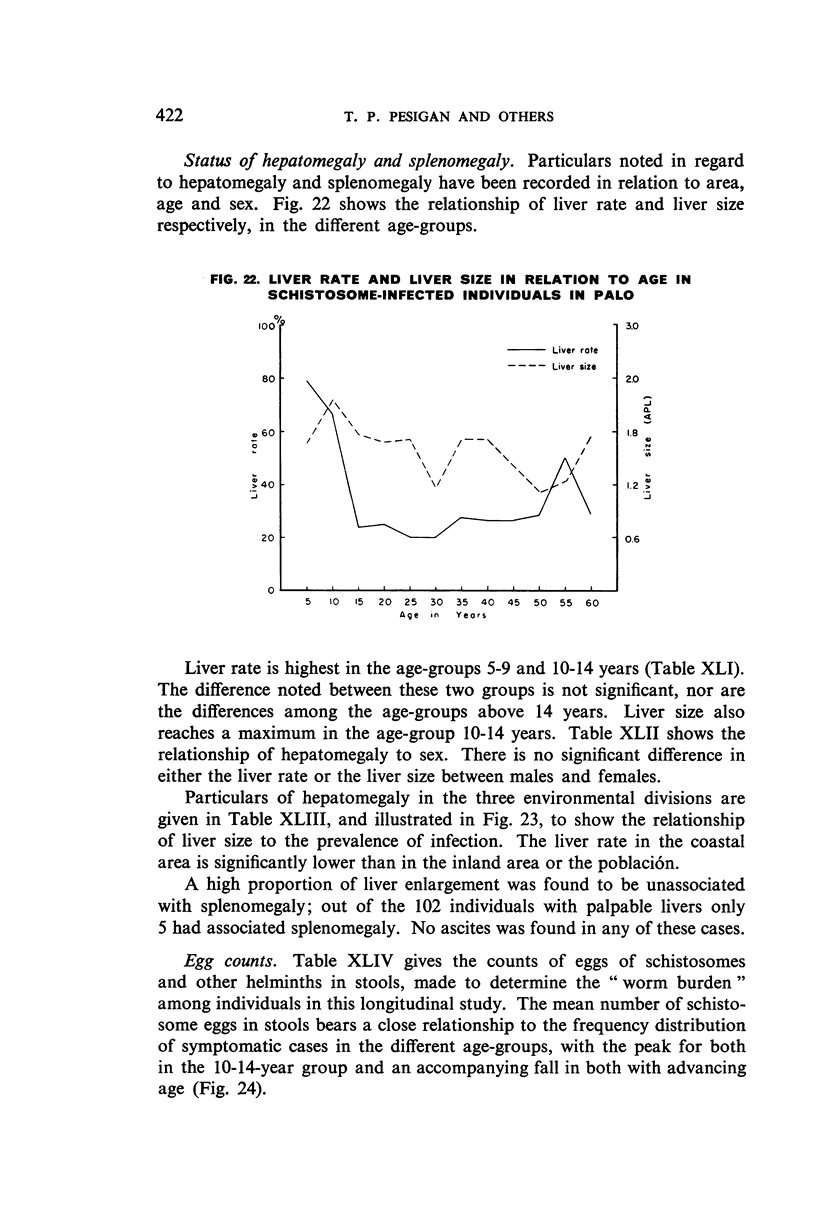
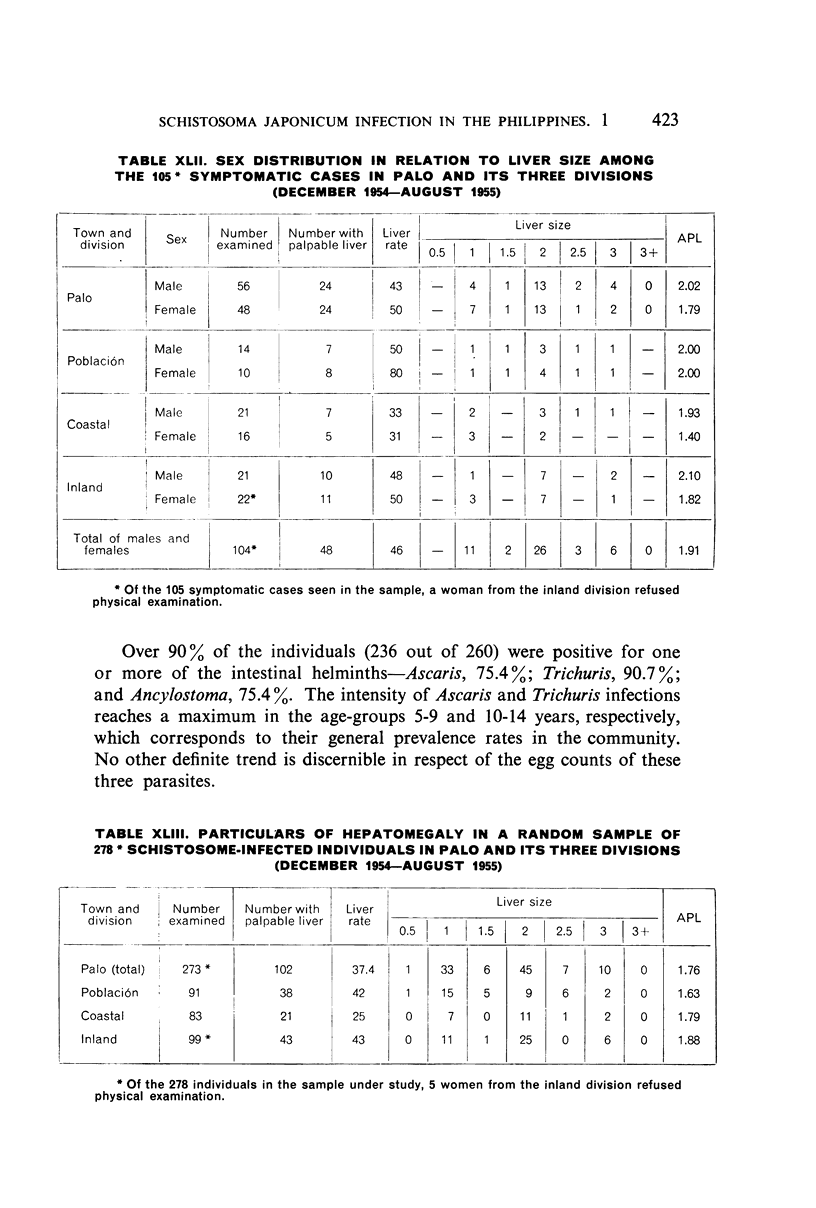
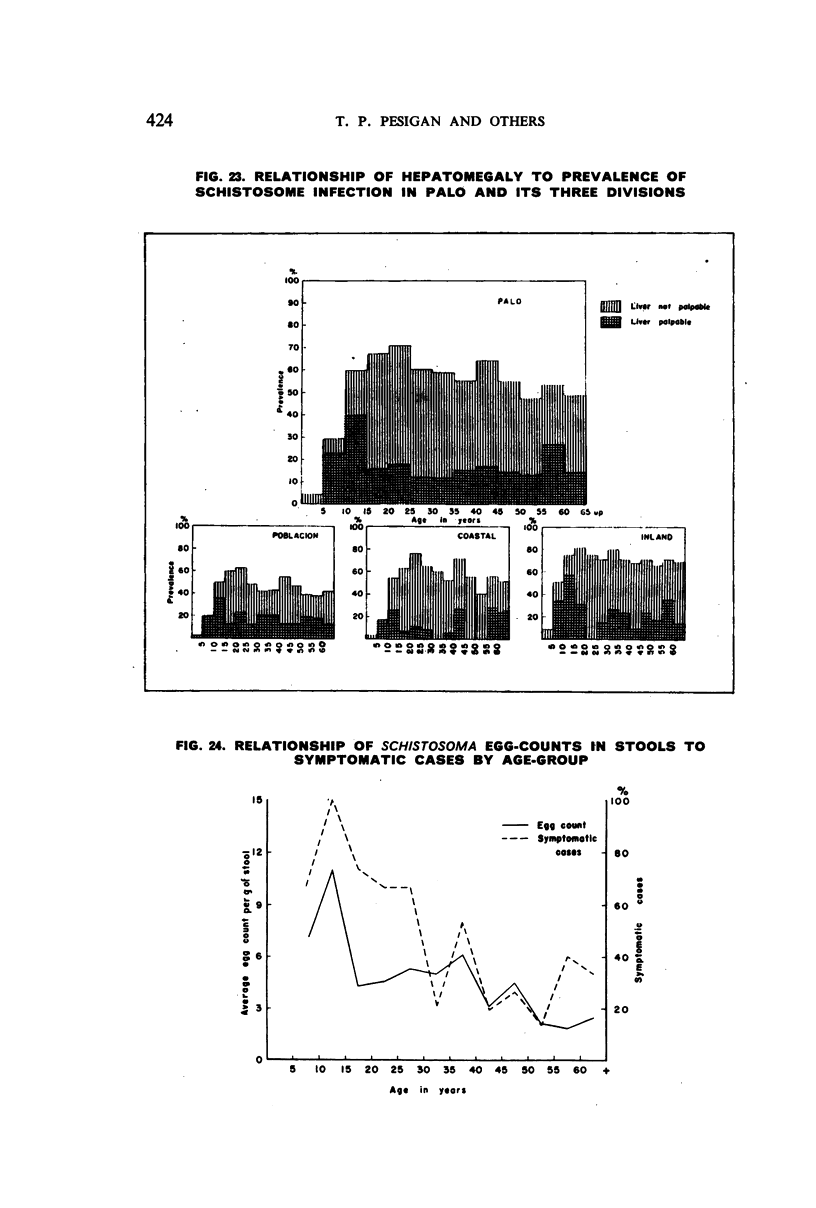
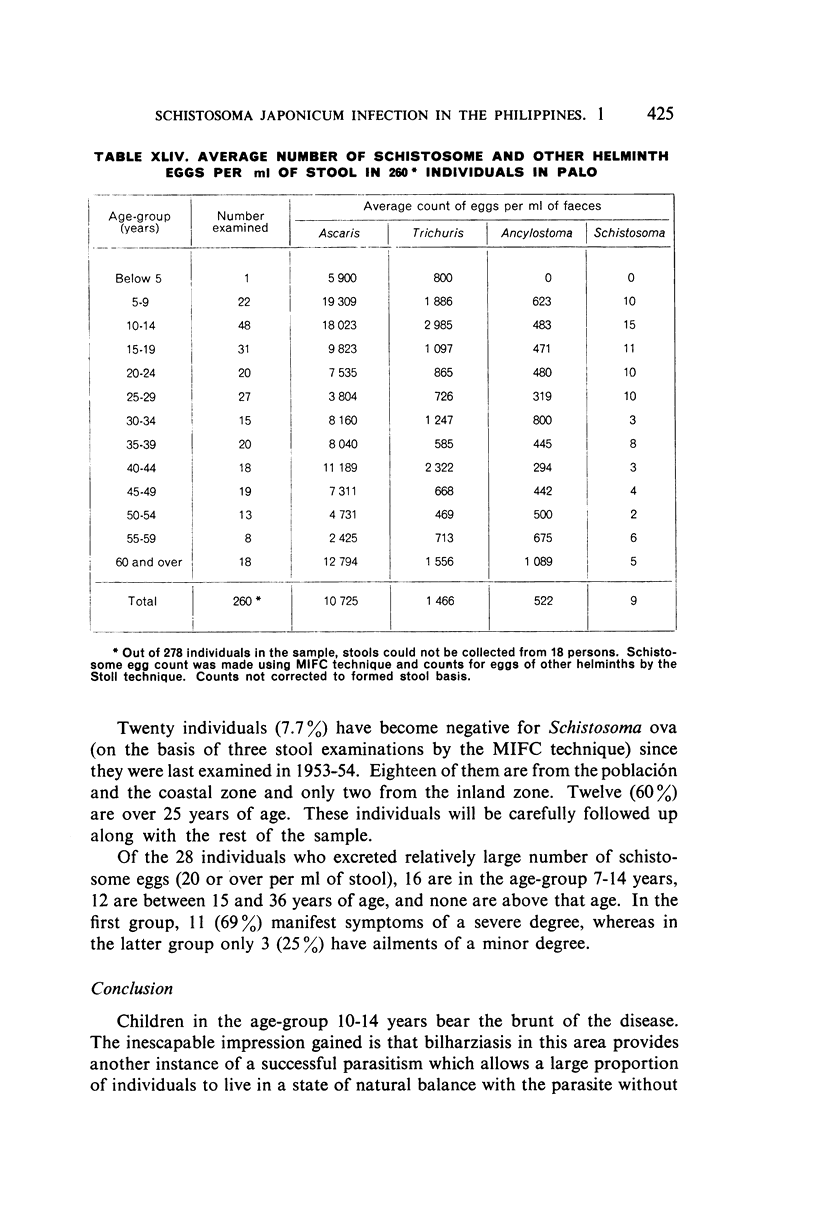
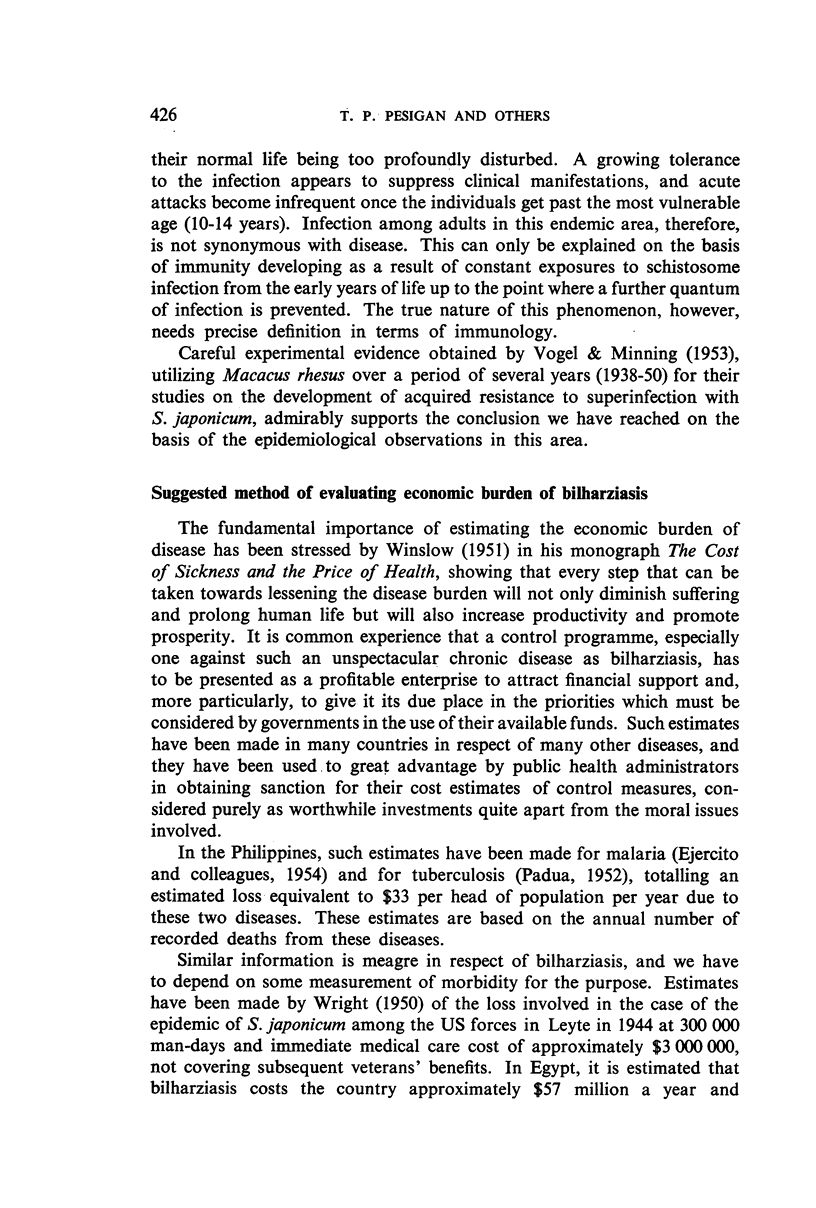
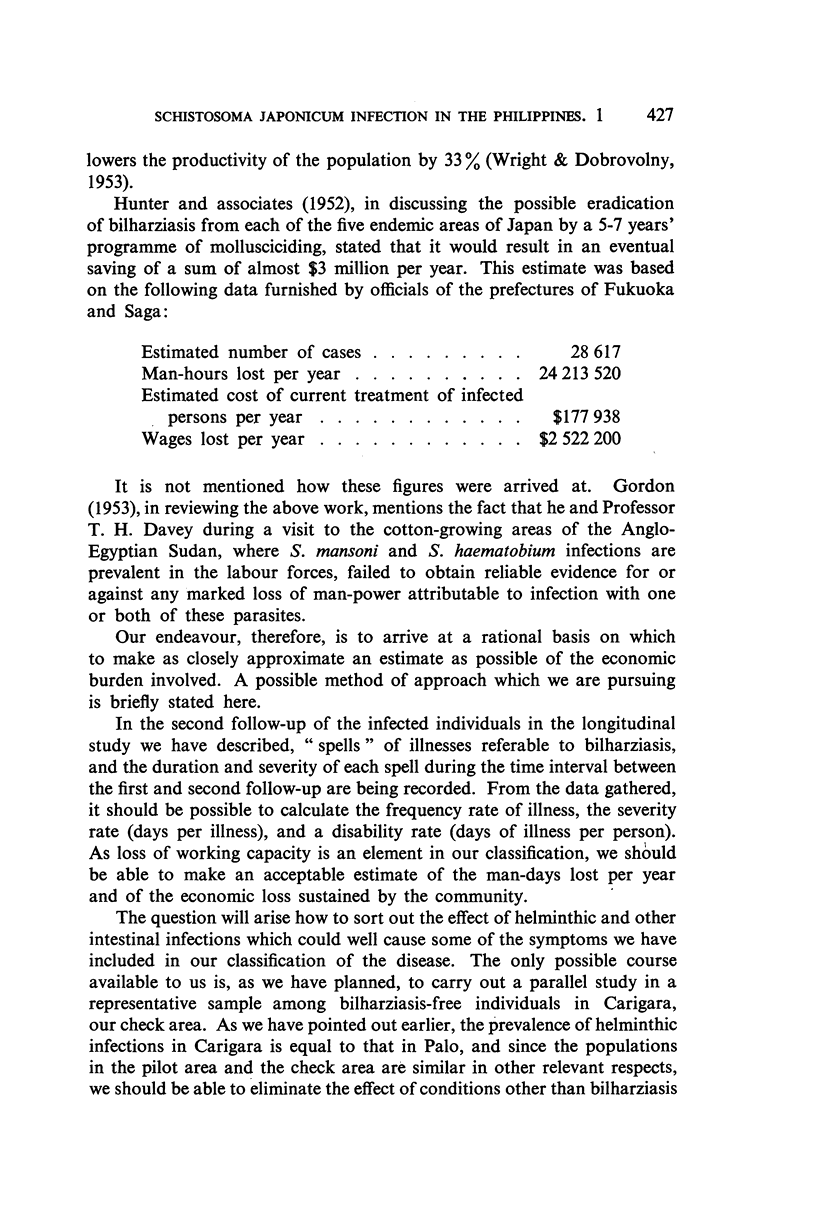

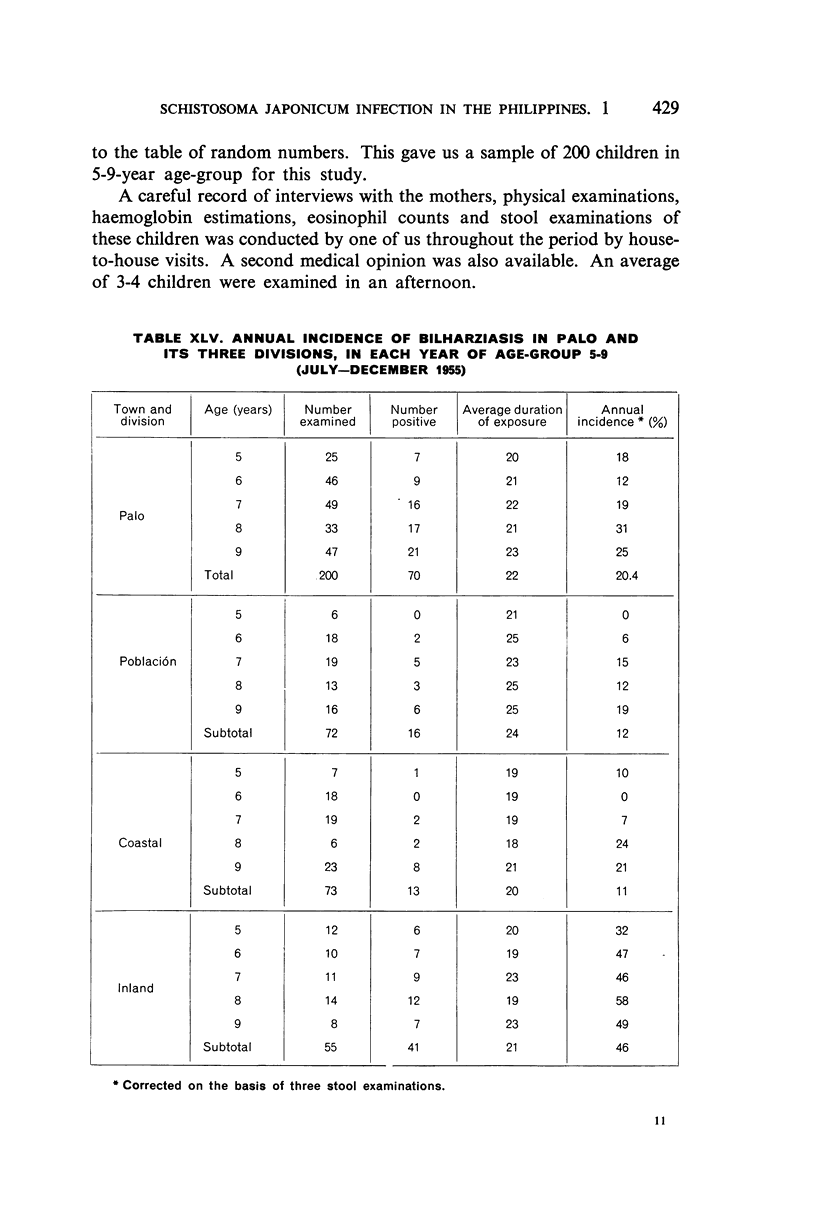
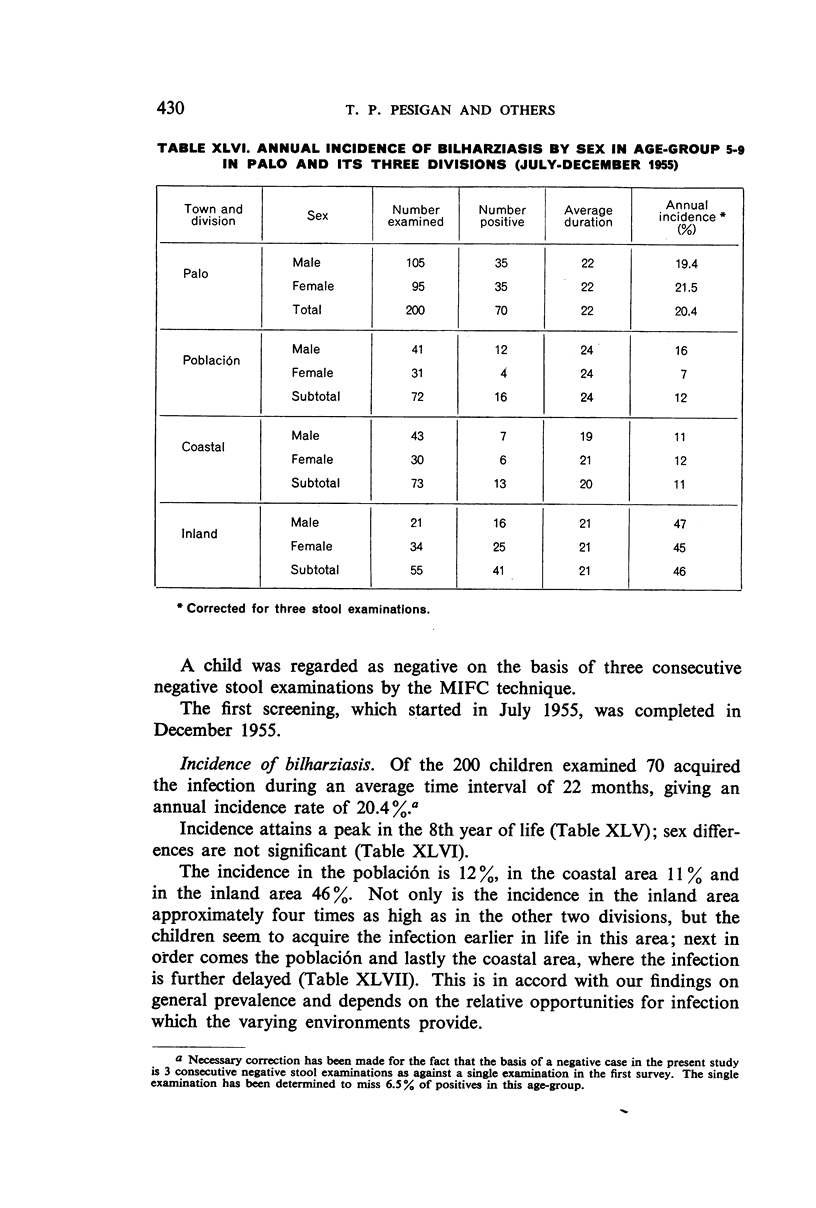
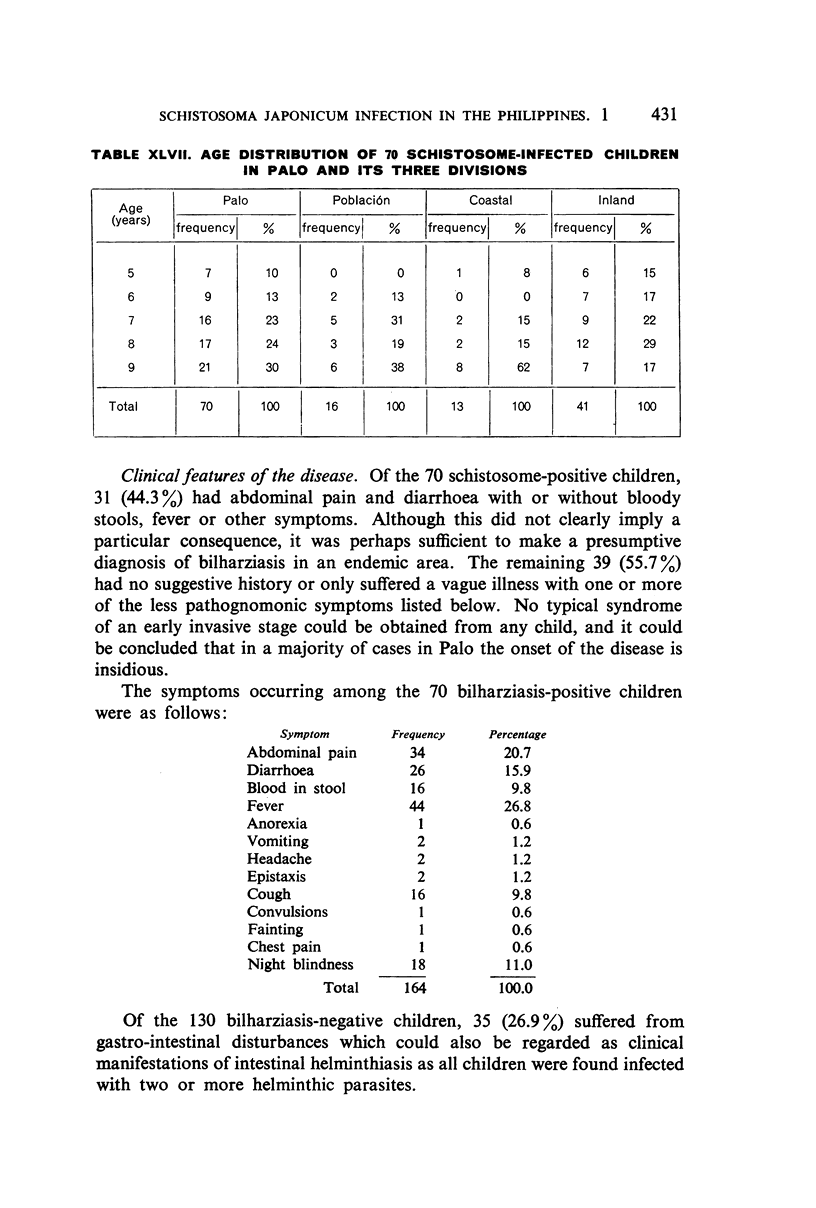
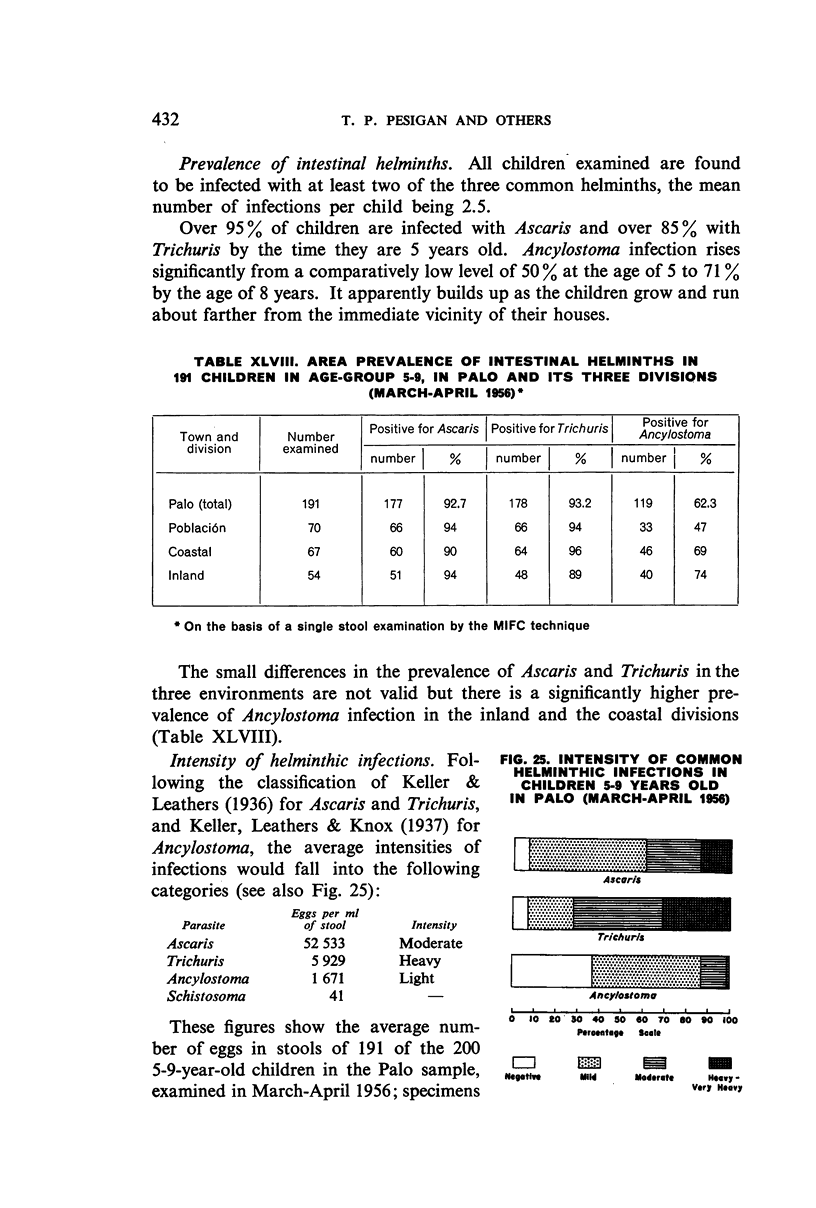
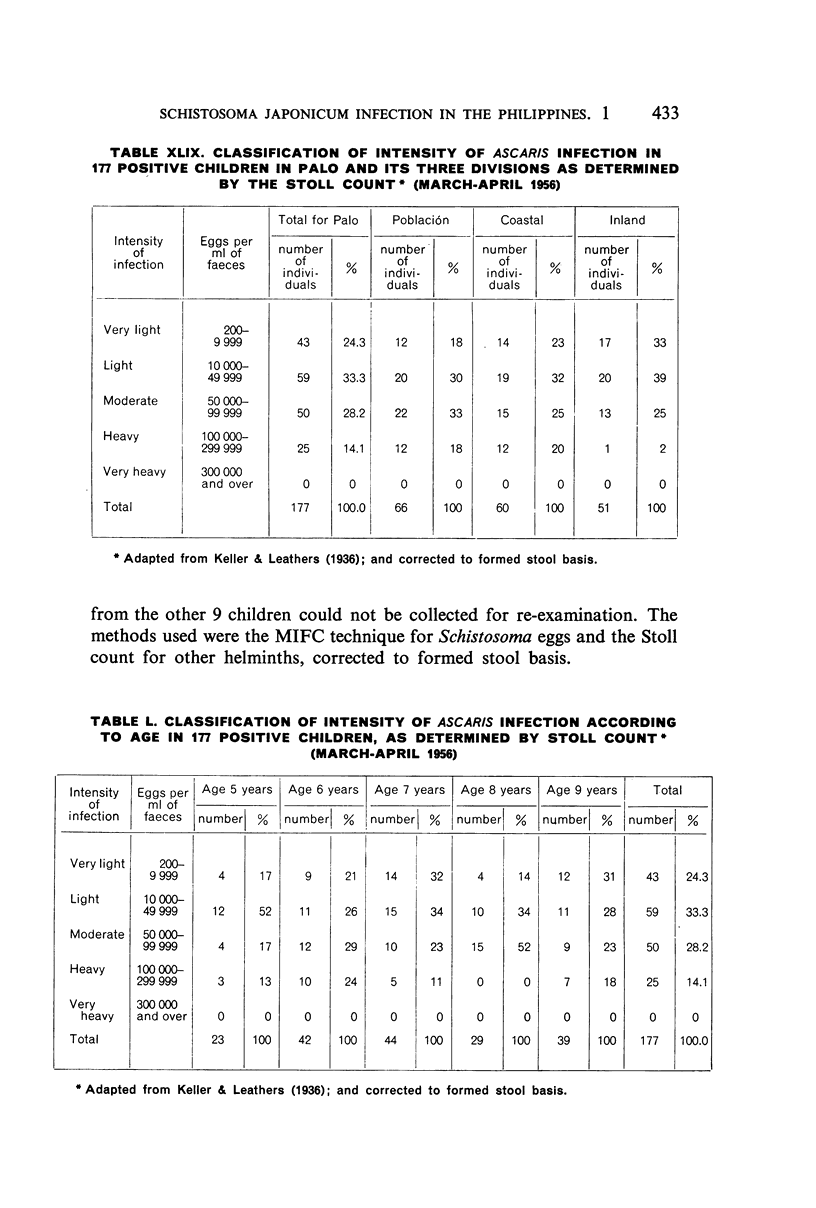
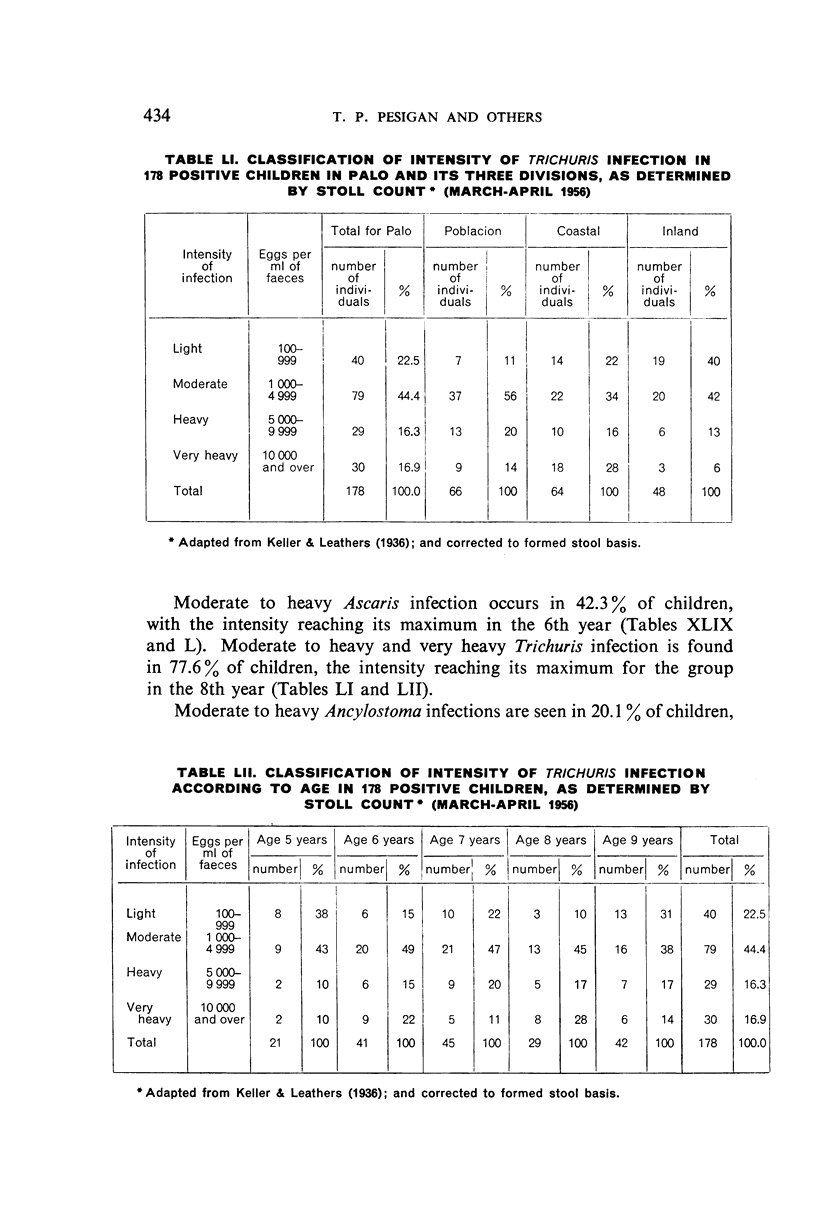
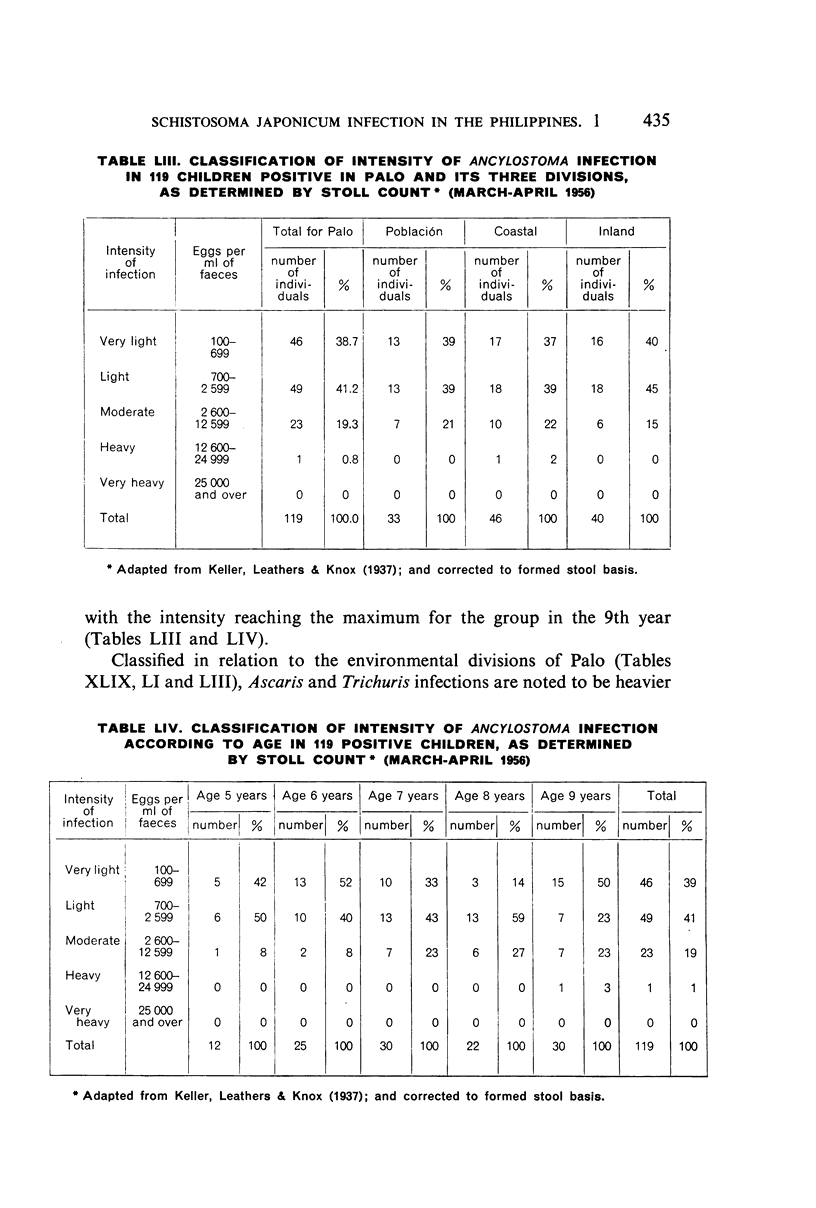
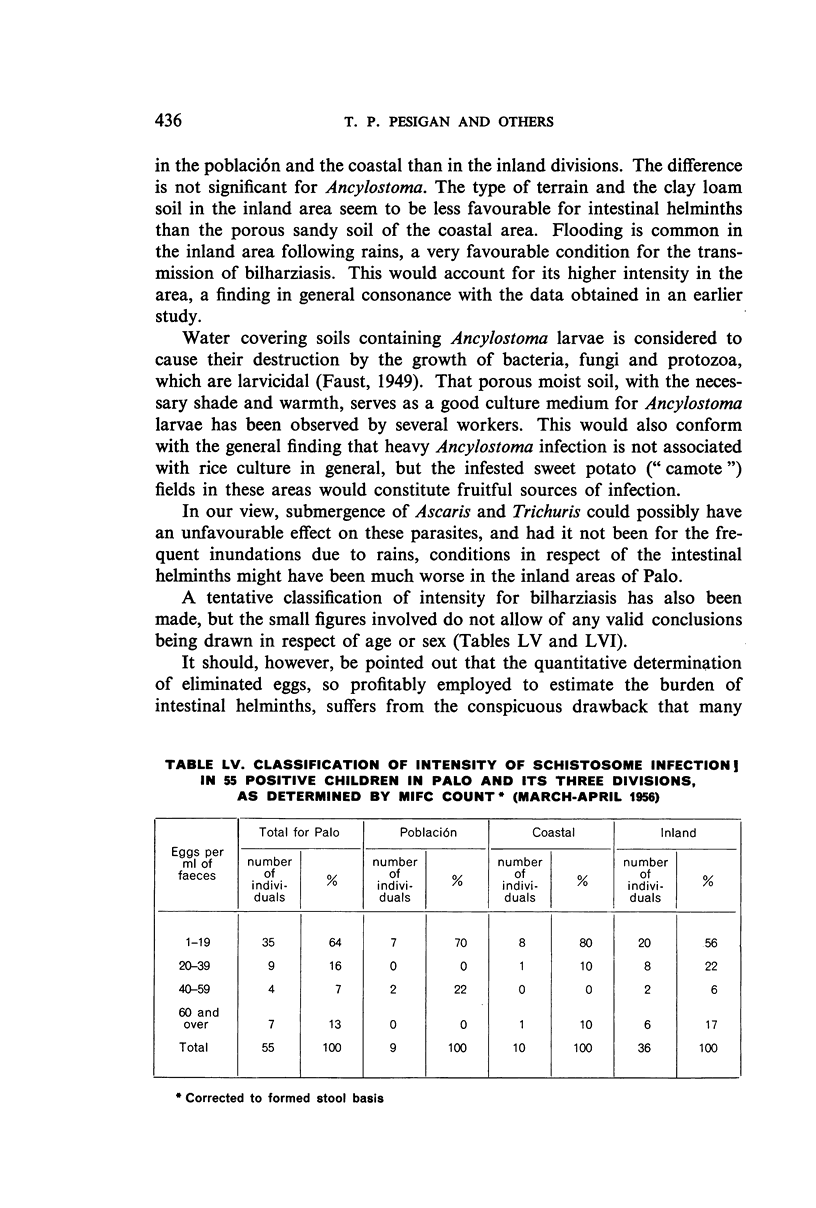
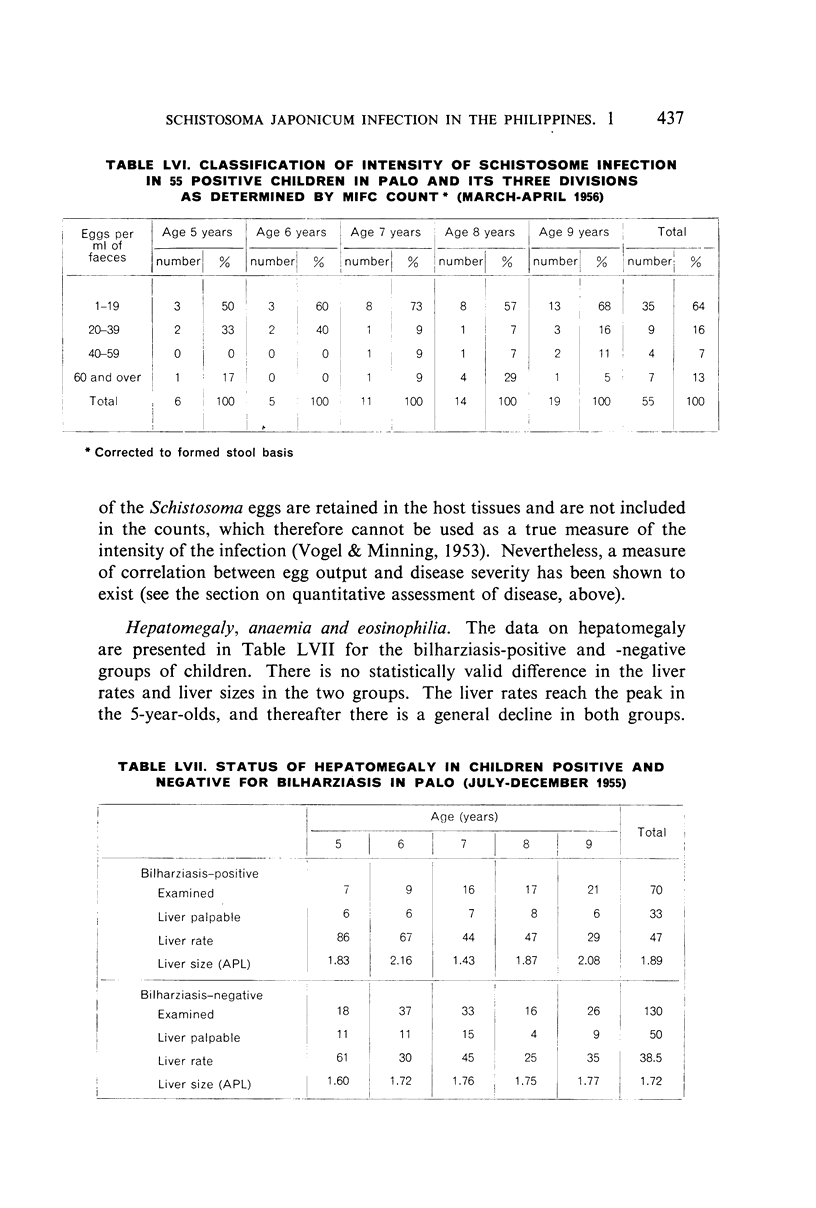

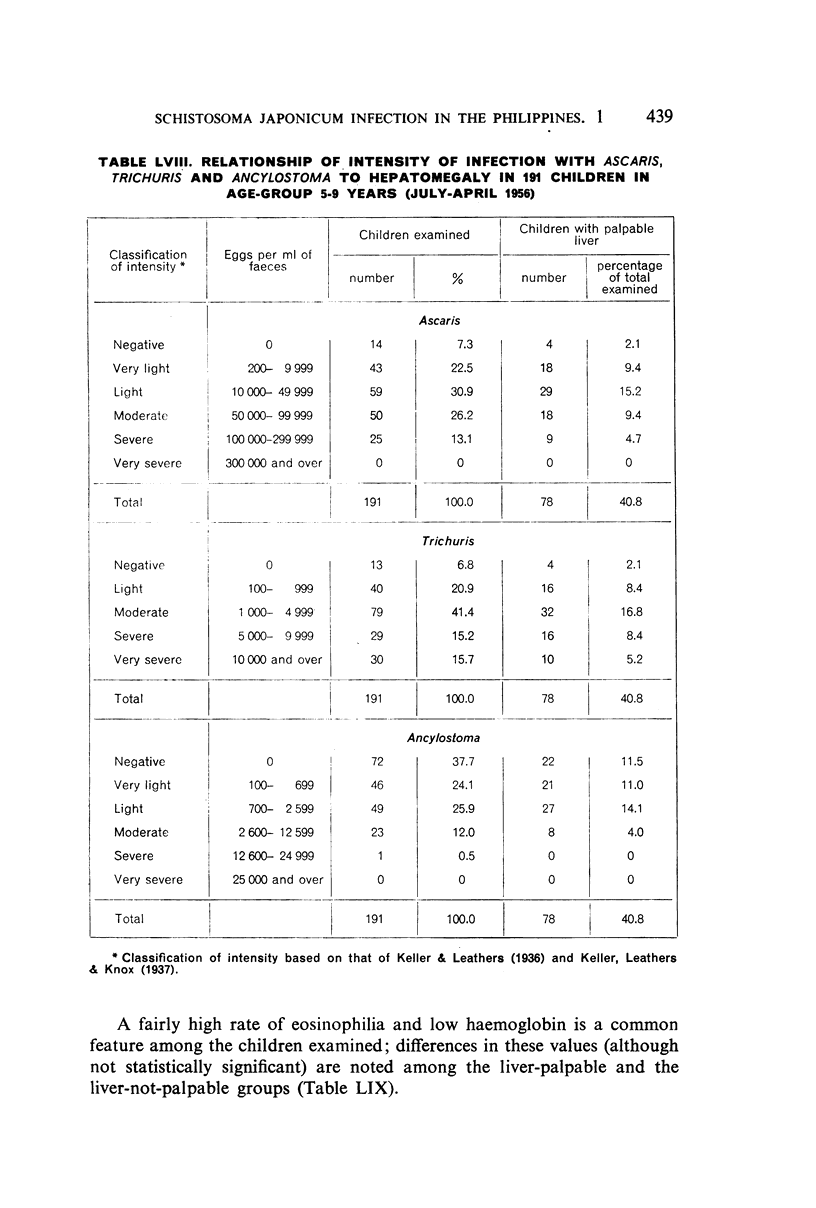

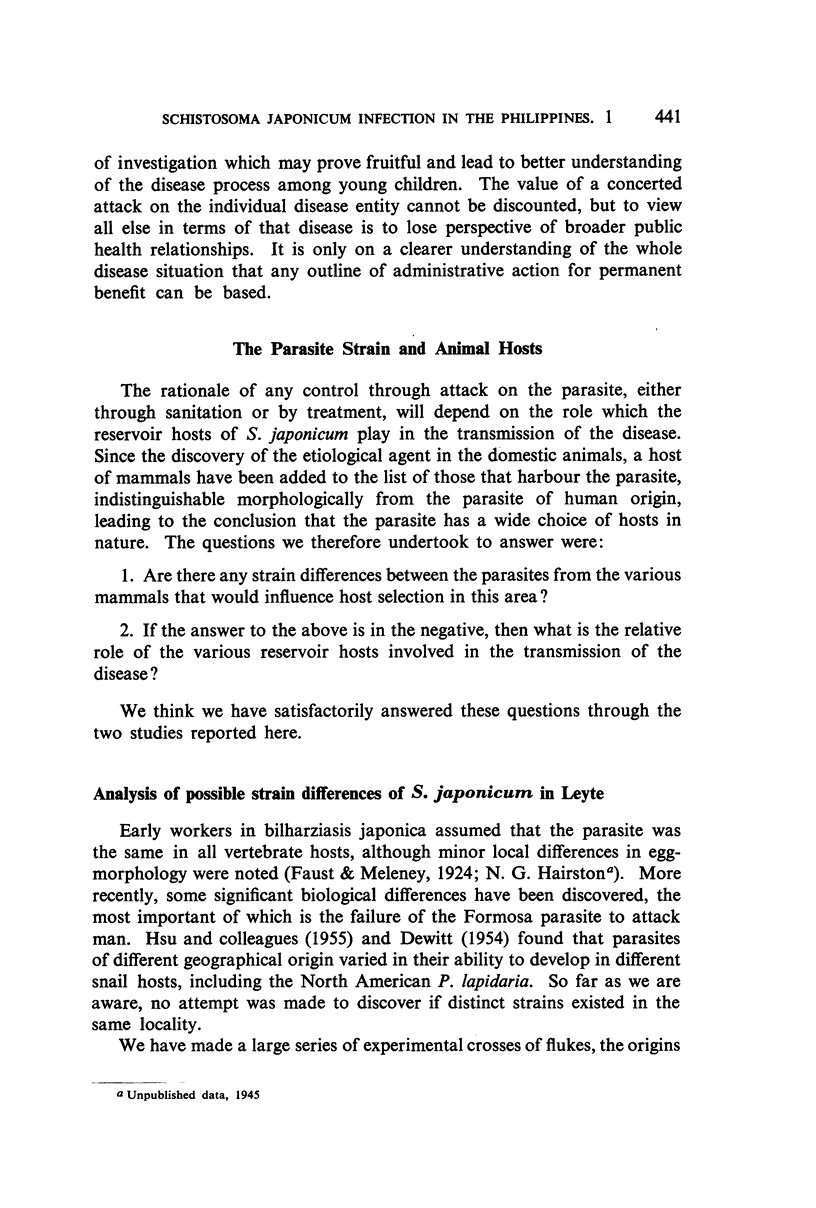
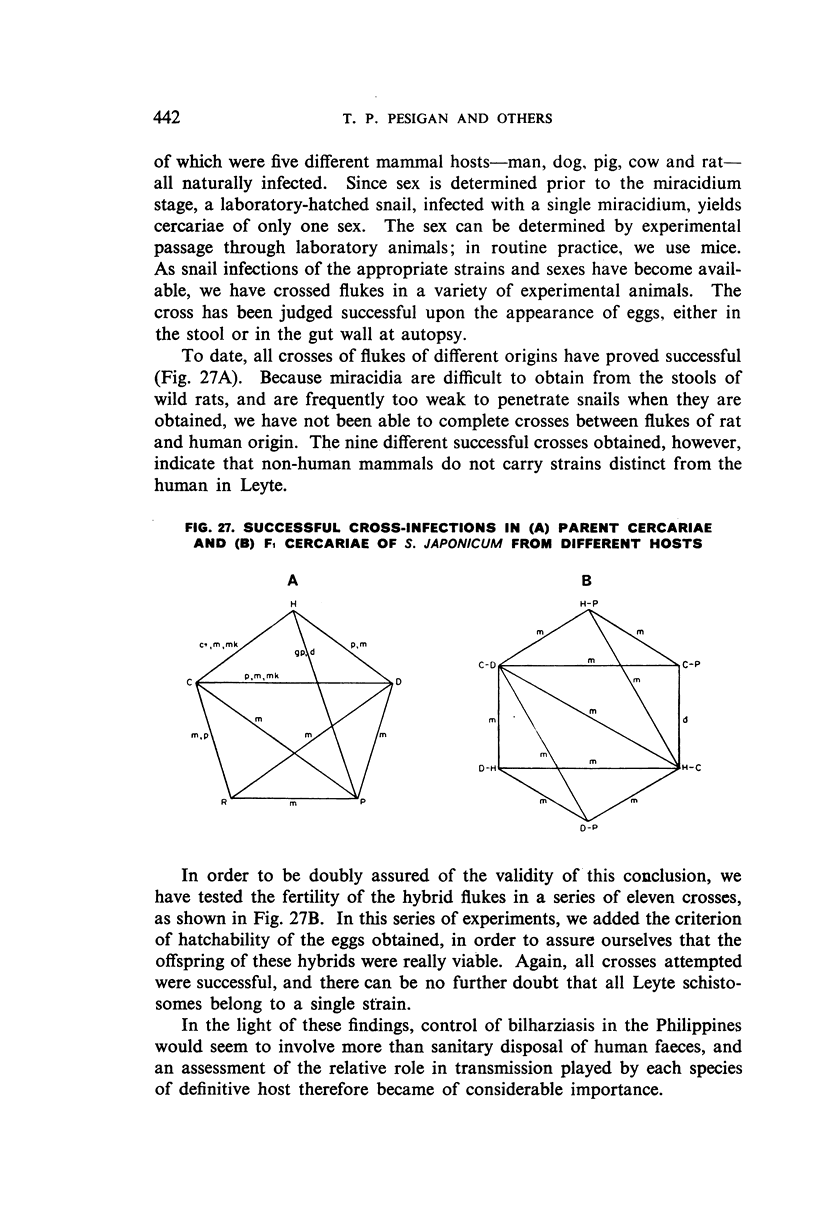
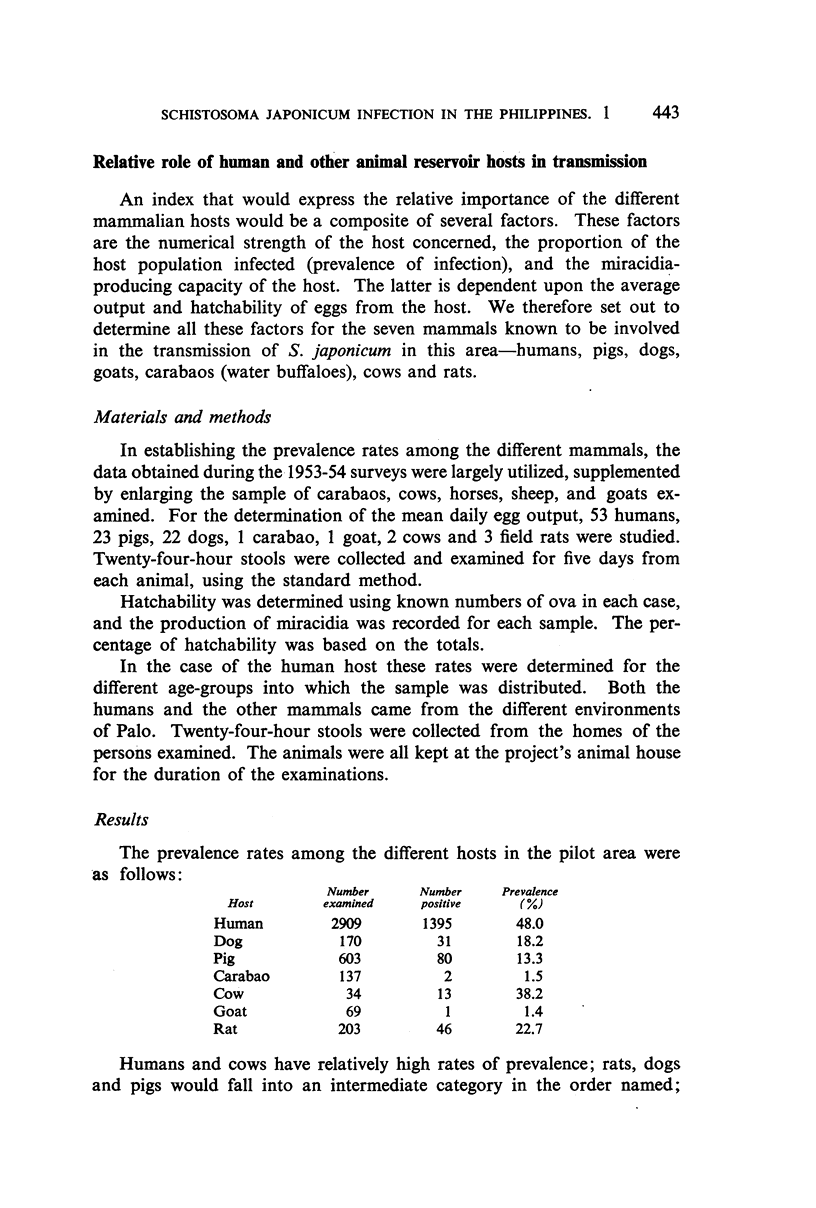
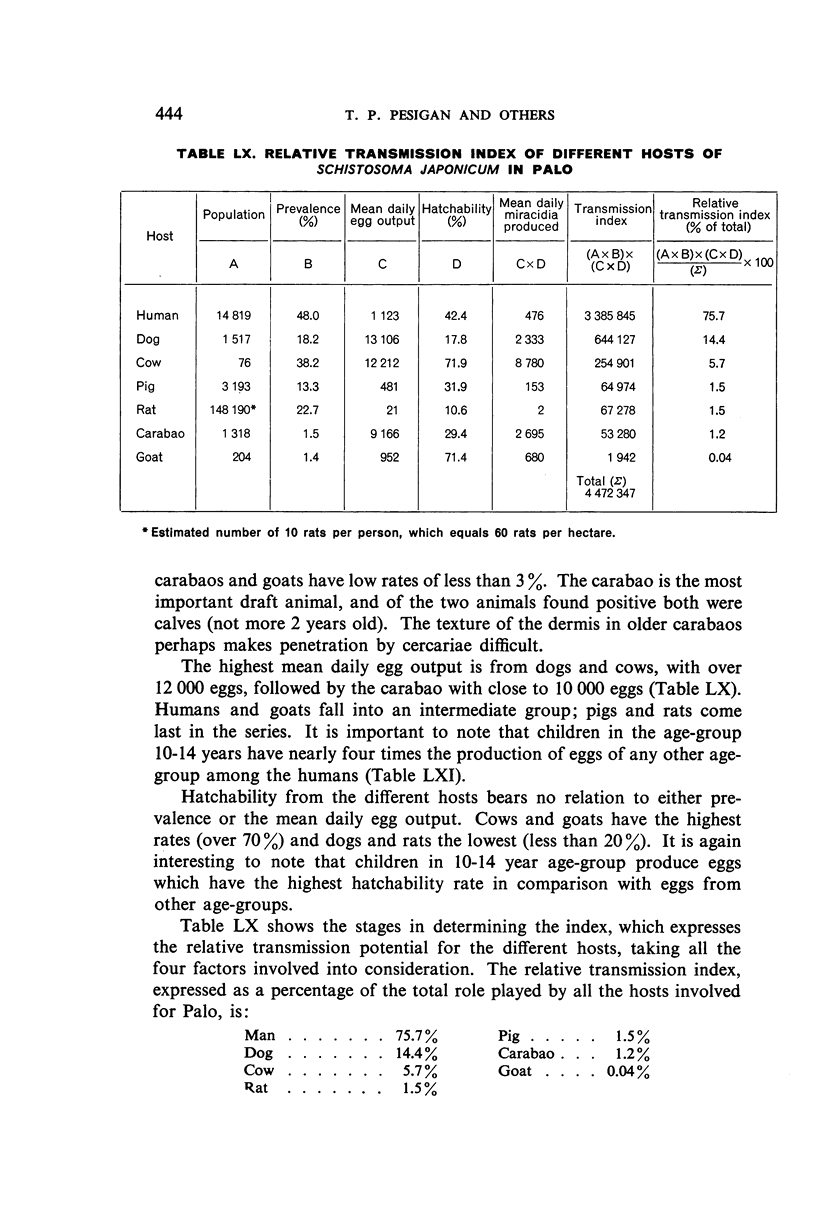

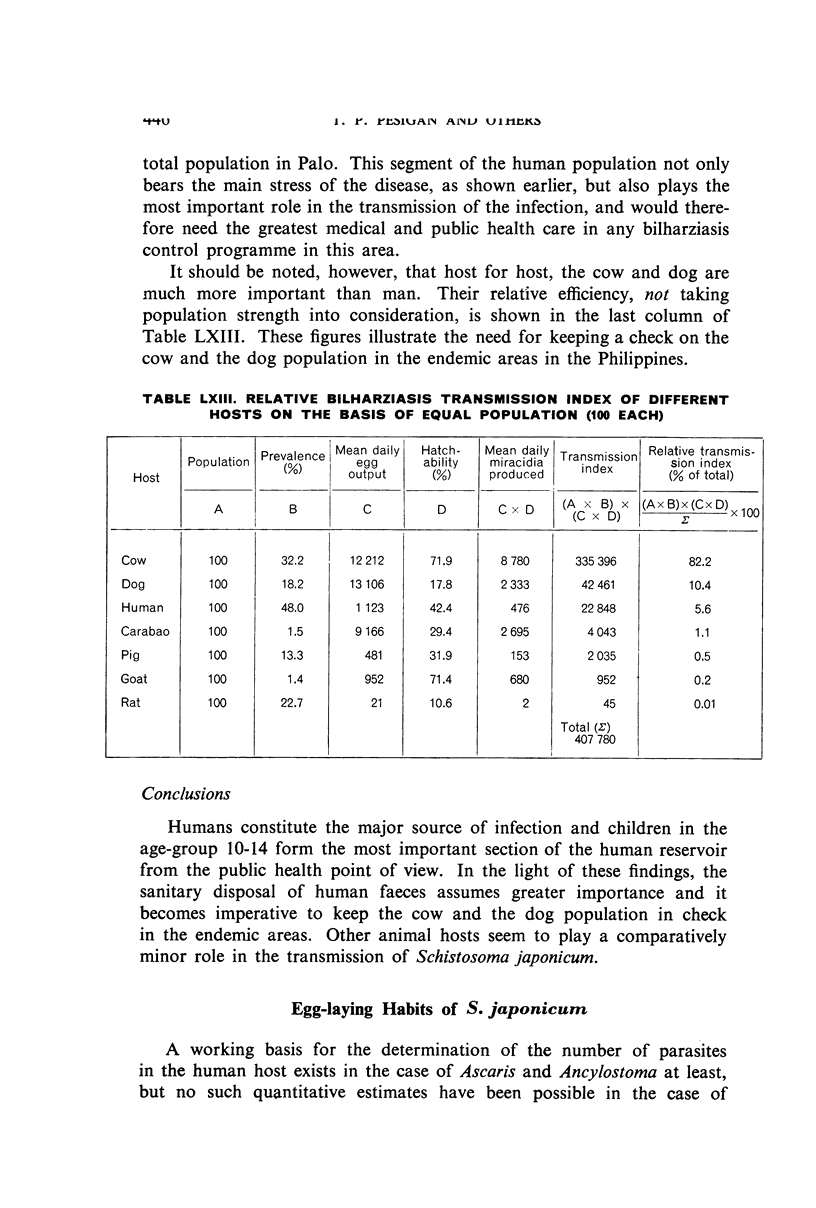
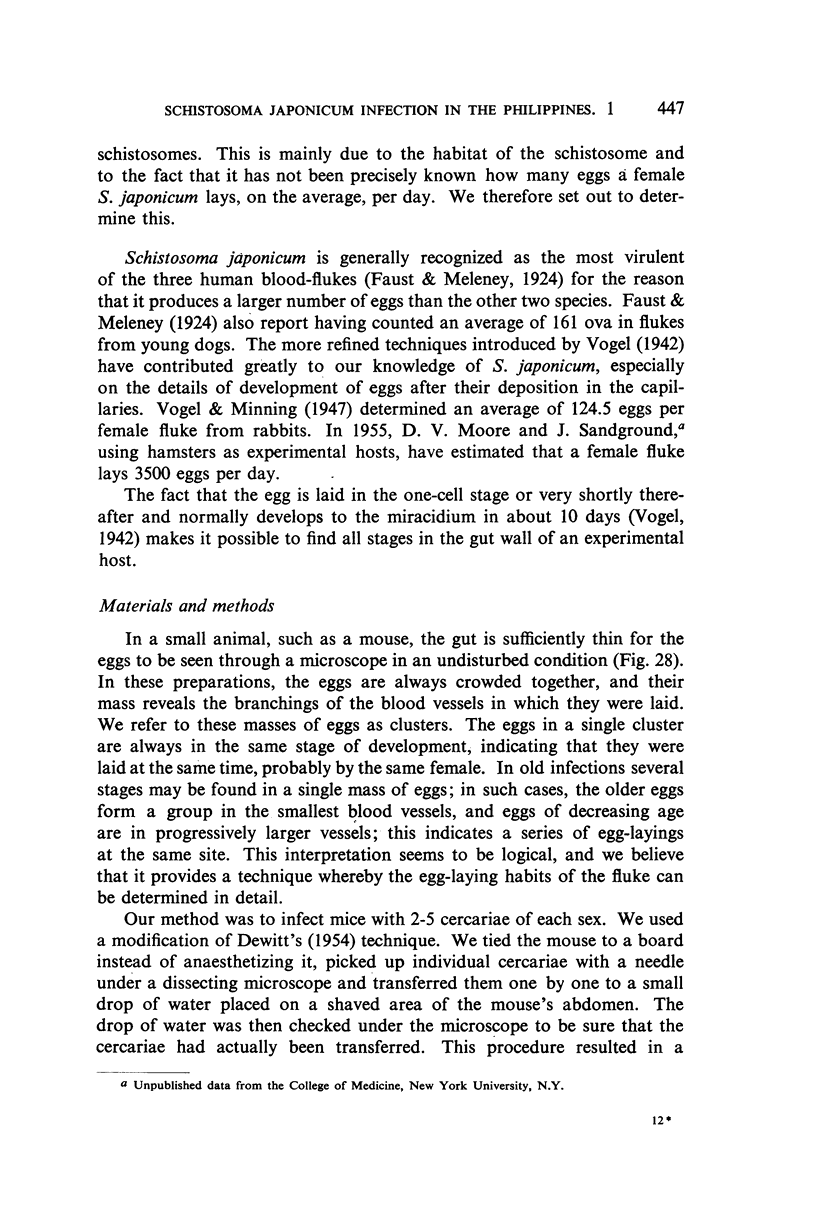
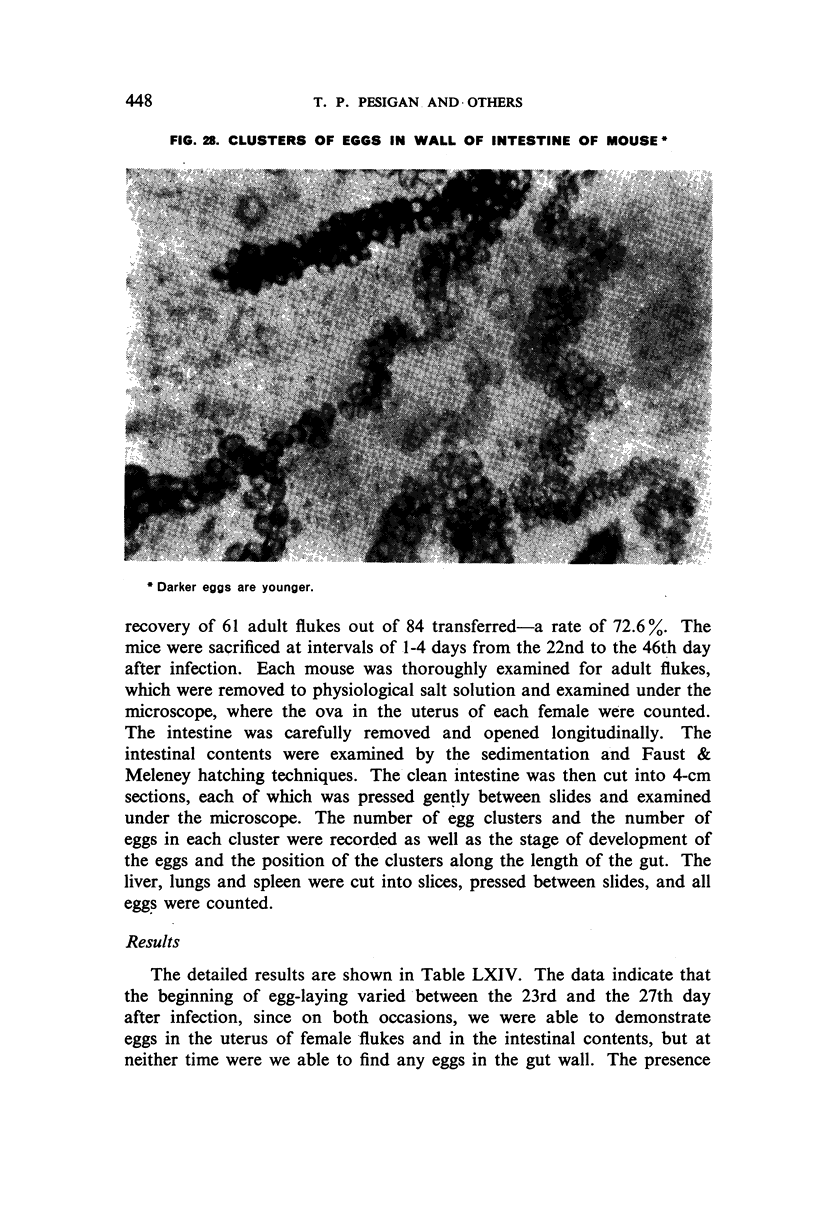
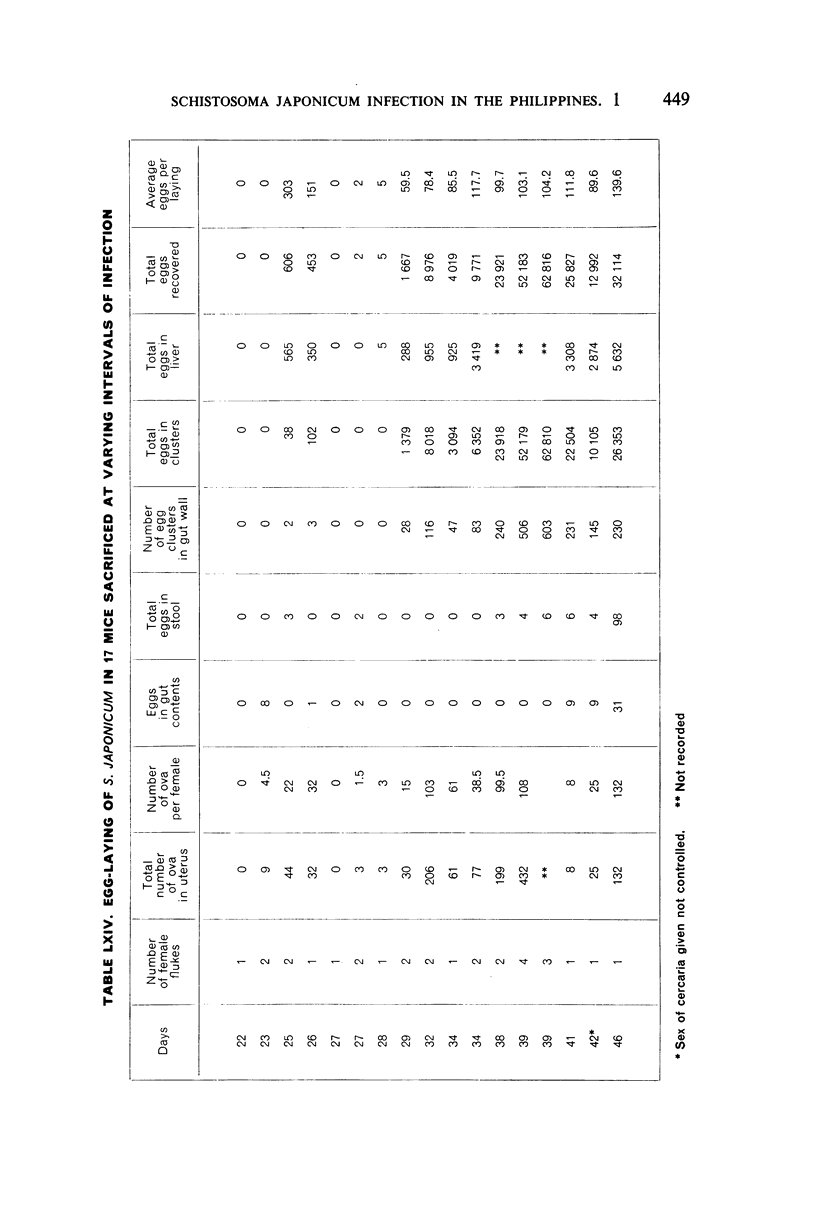

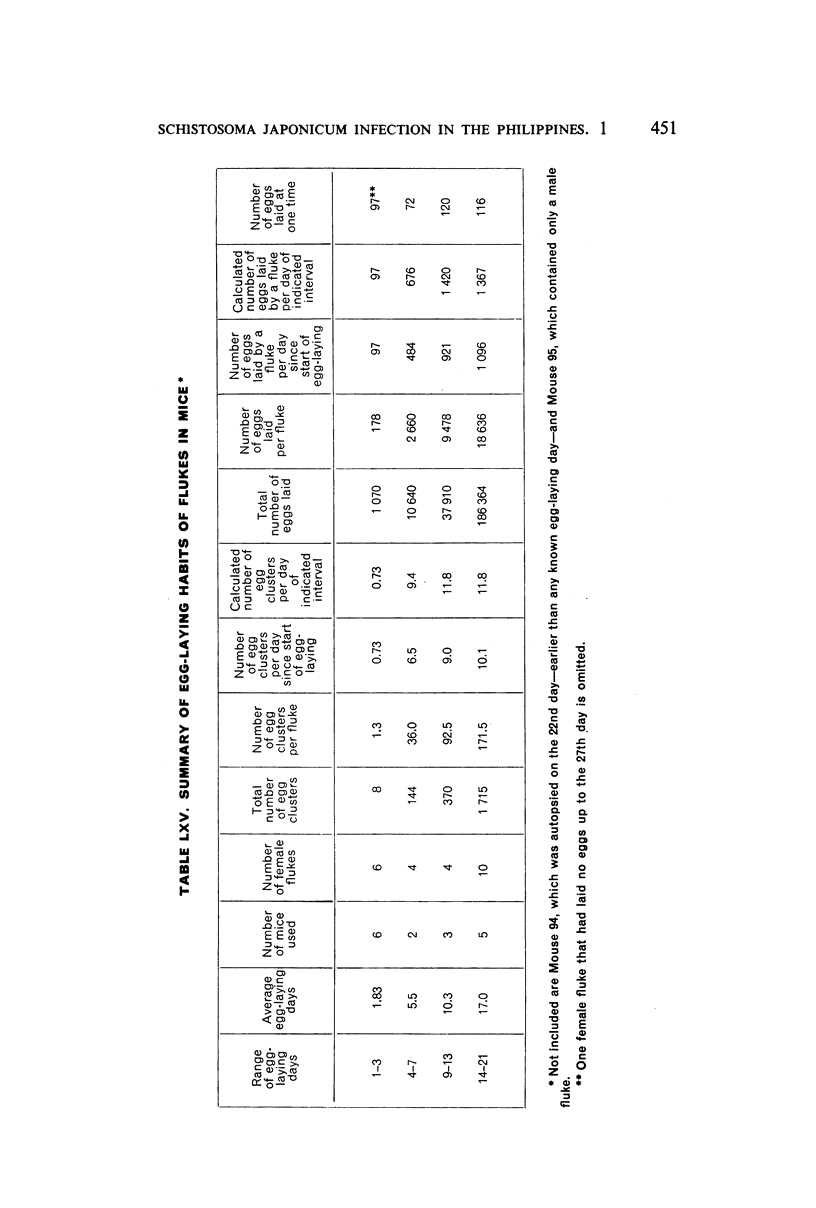
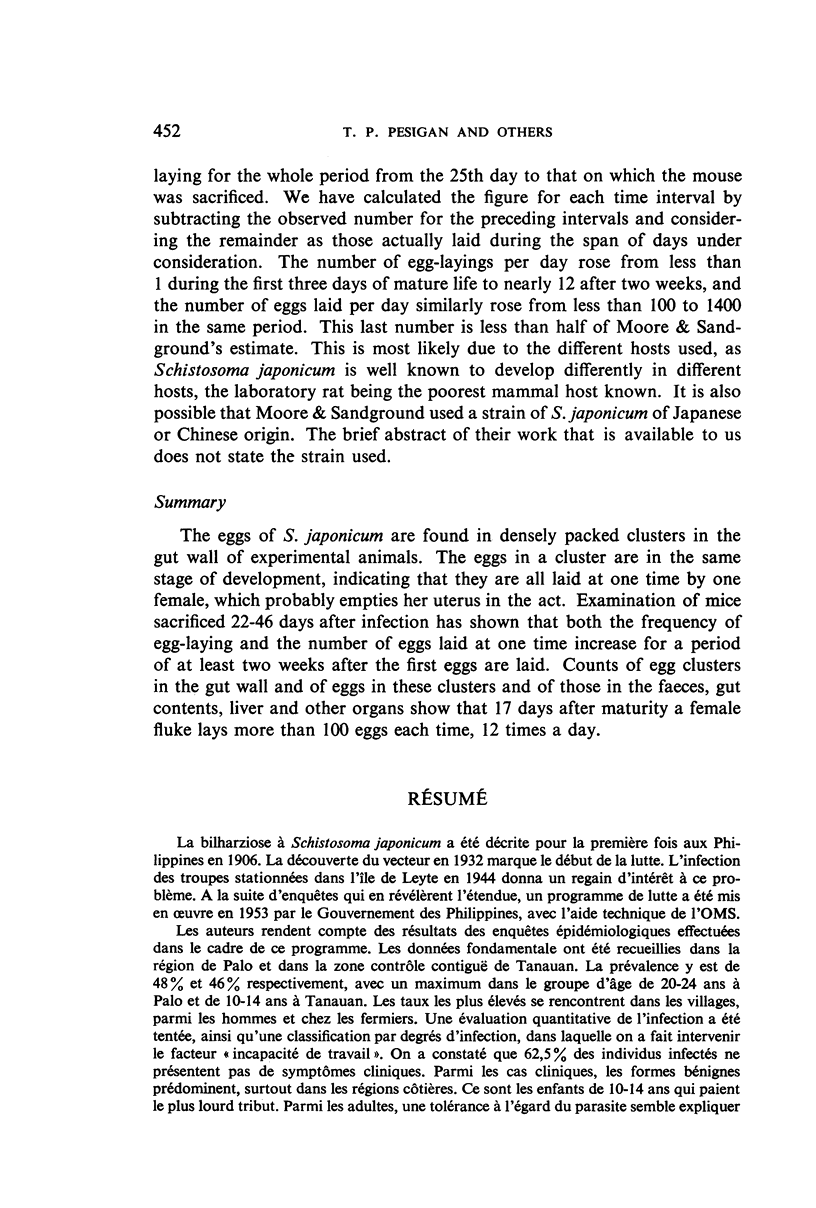
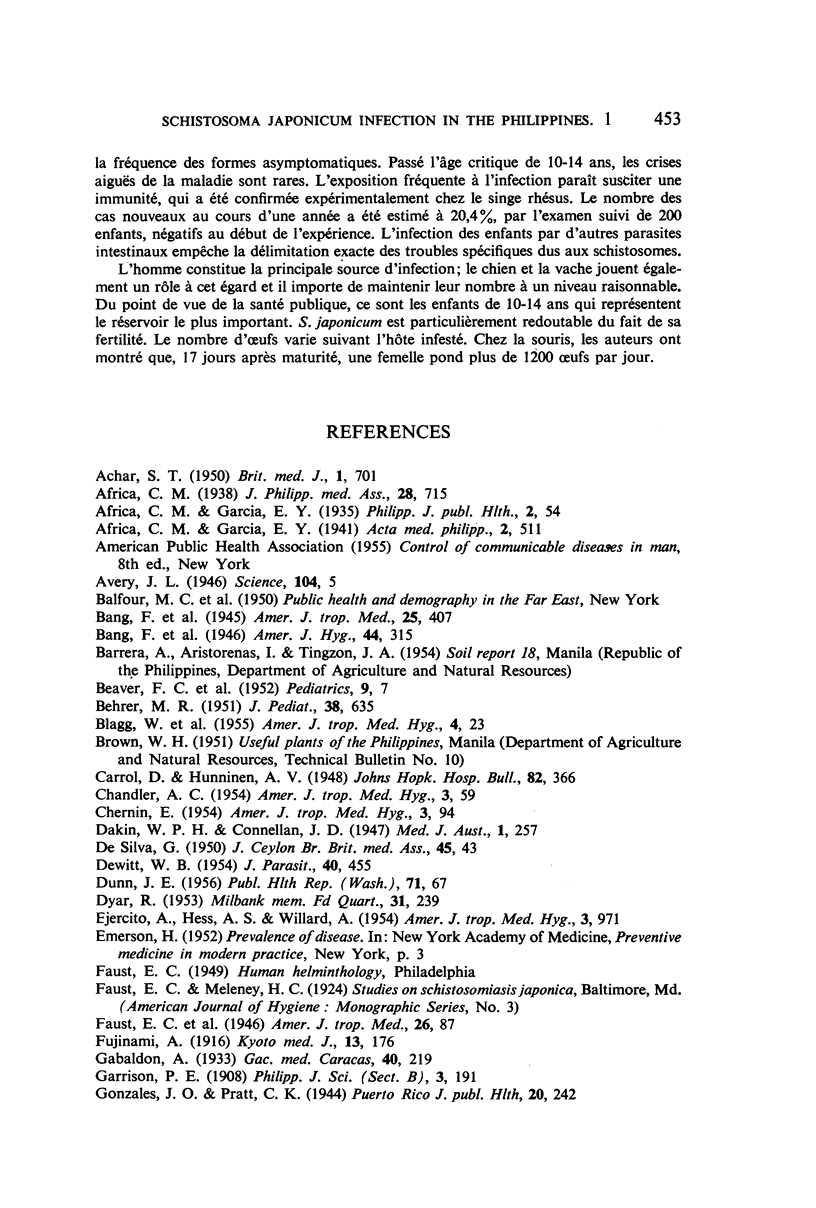
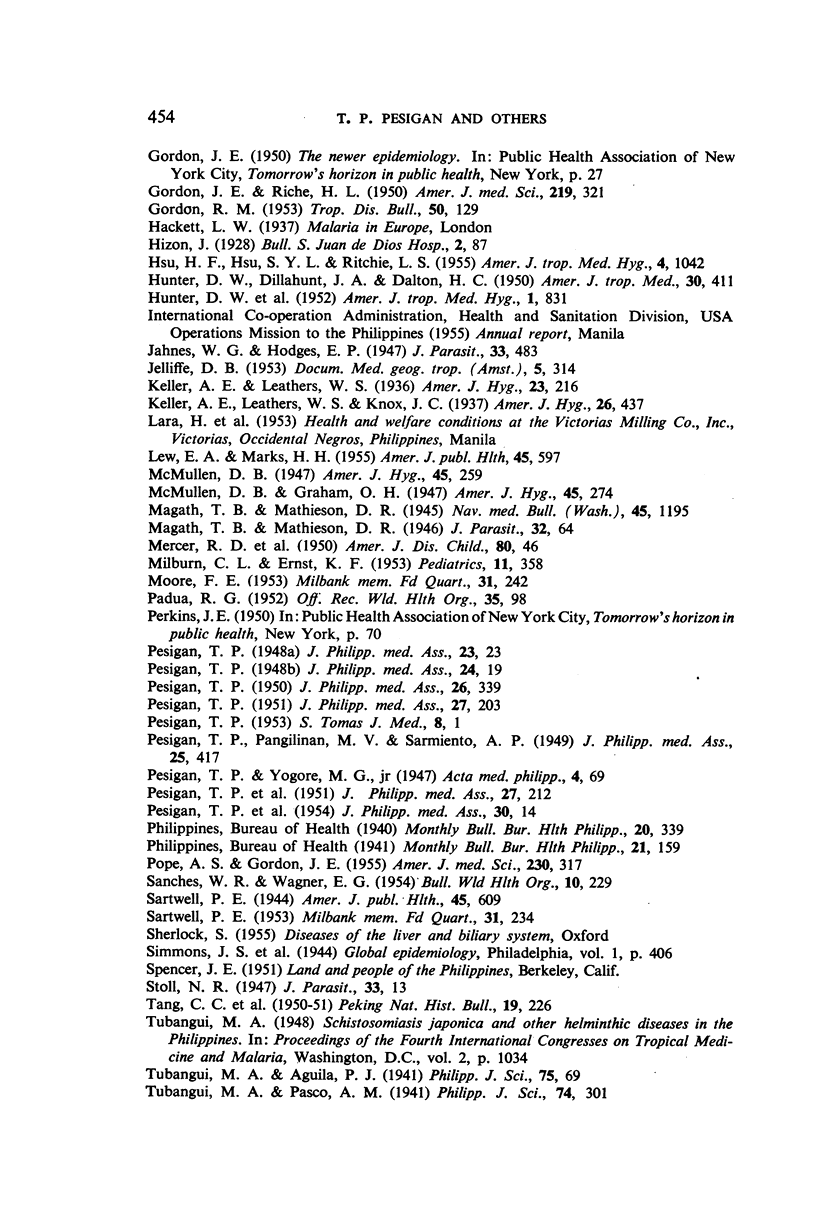
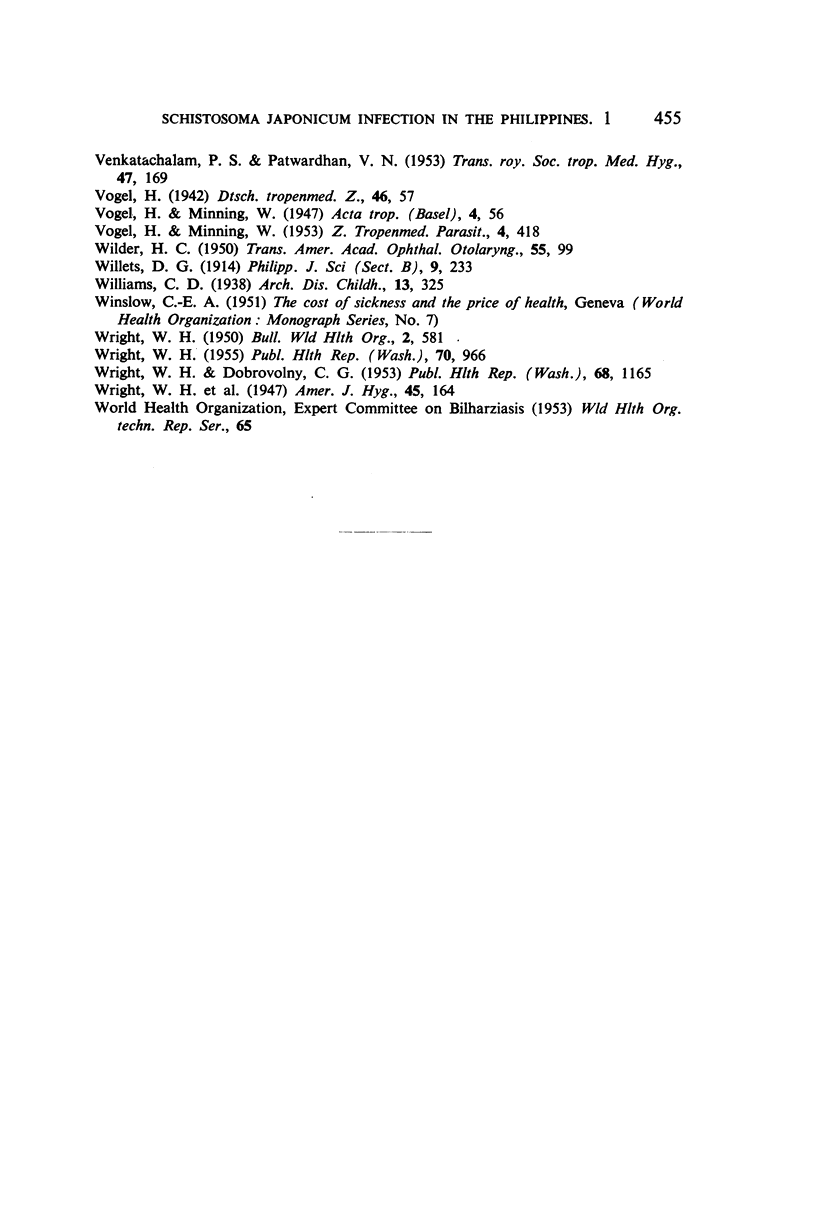
Images in this article
Selected References
These references are in PubMed. This may not be the complete list of references from this article.
- Achar S. T. Nutritional Dystrophy Among Children in Madras. Br Med J. 1950 Mar 25;1(4655):701–703. doi: 10.1136/bmj.1.4655.701. [DOI] [PMC free article] [PubMed] [Google Scholar]
- Avery J. L. The Habitat of the Snail Host of Schistosoma japonicum in the Philippines. Science. 1946 Jul 5;104(2688):5–5. doi: 10.1126/science.104.2688.5. [DOI] [PubMed] [Google Scholar]
- BEAVER P. C., SNYDER C. H., CARRERA G. M., DENT J. H., LAFFERTY J. W. Chronic eosinophilia due to visceral larva migrans; report of three cases. Pediatrics. 1952 Jan;9(1):7–19. [PubMed] [Google Scholar]
- BEHRER M. R. Hypereosinophilia with eosinophilic granuloma of the liver associated with ascaris infestation. J Pediatr. 1951 May;38(5):635–640. doi: 10.1016/s0022-3476(51)80308-1. [DOI] [PubMed] [Google Scholar]
- BLAGG W., SCHLOEGEL E. L., MANSOUR N. S., KHALAF G. I. A new concentration technic for the demonstration of protozoa and helminth eggs in feces. Am J Trop Med Hyg. 1955 Jan;4(1):23–28. doi: 10.4269/ajtmh.1955.4.23. [DOI] [PubMed] [Google Scholar]
- CHANDLER A. C. A comparison of helminthic and protozoan infections in two Egyptian villages two years after the installation of sanitary improvements in one of them. Am J Trop Med Hyg. 1954 Jan;3(1):59–73. doi: 10.4269/ajtmh.1954.3.59. [DOI] [PubMed] [Google Scholar]
- CHERNIN E. Problems in tropical public health among workers at a jute mill near Calcutta. II. A study of intestinal parasites in the labor force. Am J Trop Med Hyg. 1954 Jan;3(1):94–106. doi: 10.4269/ajtmh.1954.3.94. [DOI] [PubMed] [Google Scholar]
- DYAR R. Problems in the measurement of the progression and regression of chronic disease. Milbank Mem Fund Q. 1953 Jul;31(3):239–241. [PubMed] [Google Scholar]
- EJERCITO A., HESS A. D., WILLARD A. The six-year Philippine-American malaria control program. Am J Trop Med Hyg. 1954 Nov;3(6):971–980. doi: 10.4269/ajtmh.1954.3.971. [DOI] [PubMed] [Google Scholar]
- GORDON J. E., LE RICHE H. The epidemiologic method applied to nutrition. Am J Med Sci. 1950 Mar;219(3):321–345. doi: 10.1097/00000441-195003000-00011. [DOI] [PubMed] [Google Scholar]
- HSU H. F., HSU S. Y. L., RITCHIE L. S. Epidemiological study on schistosomiasis japonica in Formosa. Am J Trop Med Hyg. 1955 Nov;4(6):1042–1048. doi: 10.4269/ajtmh.1955.4.1042. [DOI] [PubMed] [Google Scholar]
- HUNTER G. W., 3rd, DILLAHUNT J. A., DALTON H. C. The epidemiology of schistosomiasis japonica in the Philippine Islands and Japan; surveys for schistosomiasis japonica on Mindoro, P. I. Am J Trop Med Hyg. 1950 May;30(3):411–429. doi: 10.4269/ajtmh.1950.s1-30.411. [DOI] [PubMed] [Google Scholar]
- HUNTER G. W., 3rd, FREYTAG R. E., RITCHIE L. S., PAN C., YOKAGAWA M., POTTS D. E. Studies on schistosomiasis. VI. Control of the snail host of schistosomiasis in Japan with sodium pentachlorophenate (Santobrite). Am J Trop Med Hyg. 1952 Sep;1(5):831–847. [PubMed] [Google Scholar]
- JELLIFFE D. B. Ascaris lumbricoides and malnutrition in tropical children. Doc Med Geogr Trop. 1953 Dec;5(4):314–320. [PubMed] [Google Scholar]
- LEW E. A., MARKS H. H. Public health aspects of the 1951 impairment study; new facts on mortality of insured lives with medical impairments. Am J Public Health Nations Health. 1955 May;45(5 Pt 1):597–608. doi: 10.2105/ajph.45.5_pt_1.597. [DOI] [PMC free article] [PubMed] [Google Scholar]
- MERCER R. D., LUND H. Z., BLOOMFIELD R. A., CALDWELL F. E. Larval ascariasis as a cause of chronic eosinophilia with visceral manifestations. Am J Dis Child. 1950 Jul;80(1):46–58. doi: 10.1001/archpedi.1950.04040020053005. [DOI] [PubMed] [Google Scholar]
- MILBURN C. L., Jr, ERNST K. F. Eosinophilia-hepatomegaly syndrome of infants and young children; report of a case due to invasion of liver by Nematode larvae. Pediatrics. 1953 Apr;11(4):358–367. [PubMed] [Google Scholar]
- MOORE F. E. Problems in the selection of a universe for the study of chronic illness. Milbank Mem Fund Q. 1953 Jul;31(3):242–246. [PubMed] [Google Scholar]
- PESIGAN T. P. Analysis of 4,302 cases of schistosomiasis japonica. J Philipp Med Assoc. 1951 Apr;27(4):203–206. [PubMed] [Google Scholar]
- PESIGAN T. P., GARCIA E. G., BANZON T. C., BELTRAN A. M., SANTOS A. T., ANOVER M., BASACA-SEVILLA V. Further studies on intradermal test in schistosomiasis japonica. J Philipp Med Assoc. 1954 Jan;30(1):14–22. [PubMed] [Google Scholar]
- PESIGAN T. P., PUTONG P. B., GARCIA E. G., MILLAR C. A. Intradermal test for schistosomiasis japonica (preliminary report). J Philipp Med Assoc. 1951 Apr;27(4):212–219. [PubMed] [Google Scholar]
- PESIGAN T. P. Studies on schistosomiasis: progress report on the Philippine campaign as of June 30, 1950. J Philipp Med Assoc. 1950 Aug;26(8):339–348. [PubMed] [Google Scholar]
- POPE A. S., GORDON J. E. The impact of tuberculosis on human populations. Am J Med Sci. 1955 Sep;230(3):317–353. doi: 10.1097/00000441-195509000-00011. [DOI] [PubMed] [Google Scholar]
- SANCHES W. R., WAGNER E. G. Experience with excreta-disposal programmes in rural areas of Brazil. Bull World Health Organ. 1954;10(2):229–249. [PMC free article] [PubMed] [Google Scholar]
- SARTWELL P. E. Problems of identification of cases of chronic disease. Milbank Mem Fund Q. 1953 Jul;31(3):234–238. [PubMed] [Google Scholar]
- VENKATACHALAM P. S., PATWARDHAN V. N. The role of Ascaris lumbricoides in the nutrition of the host; effect of ascariasis on digestion of protein. Trans R Soc Trop Med Hyg. 1953 Mar;47(2):169–175. doi: 10.1016/0035-9203(53)90074-1. [DOI] [PubMed] [Google Scholar]
- VOGEL H., MINNING W. Uber die erworbene Resistenz von Macacus rhesus gegenüber Schistosoma japonicum. Z Tropenmed Parasitol. 1953 Oct;4(4):418–505. [PubMed] [Google Scholar]
- WILDER H. C. Nematode endophthalmitis. Trans Am Acad Ophthalmol Otolaryngol. 1950 Nov-Dec;55:99–109. [PubMed] [Google Scholar]
- WRIGHT W. H. Bilharziasis as a public health problem in the Pacific. Bull World Health Organ. 1950;2(4):581–595. [PMC free article] [PubMed] [Google Scholar]
- WRIGHT W. H. Current status of parasitic diseases. Public Health Rep. 1955 Oct;70(10):966–975. [PMC free article] [PubMed] [Google Scholar]




